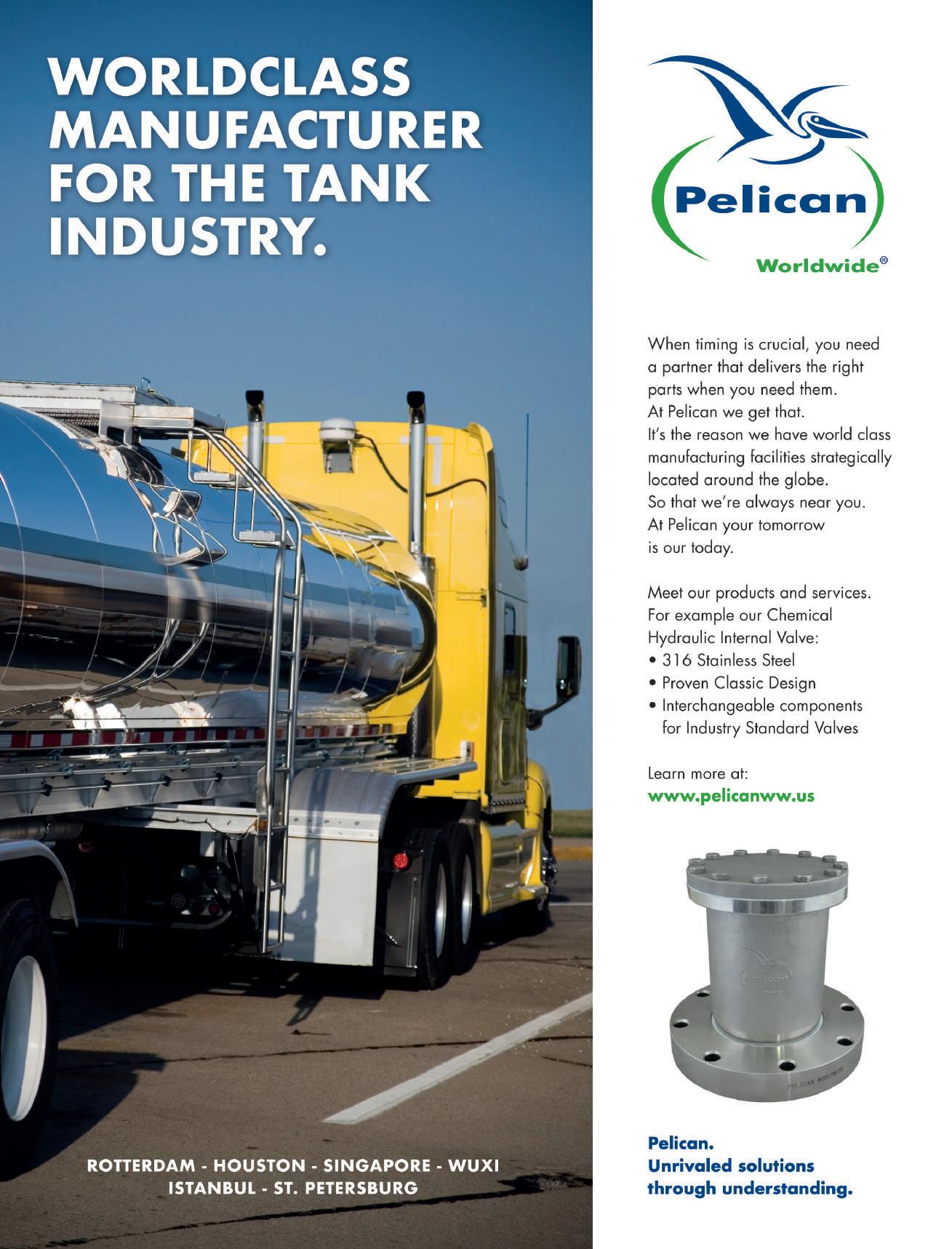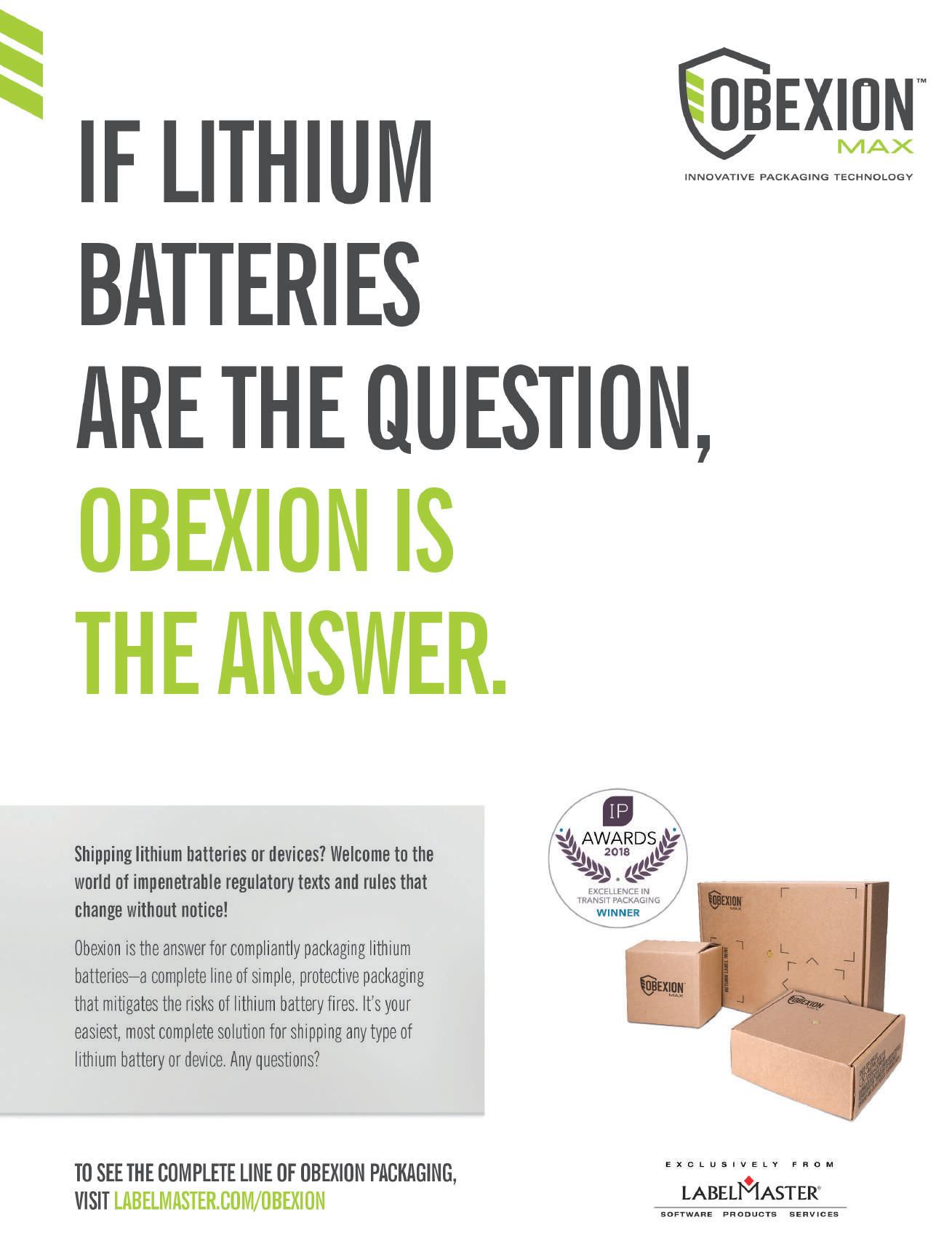





It can’t be easy being responsible for managing dangerous goods or hazmat compliance these days. Despite decades of work to refine and harmonise the regulations, there are still major differences between the modes and between countries, while new requirements pop up with depressing regularity – and not just in the area of lithium batteries.
Nowhere is that more true than in North America and in this issue, which includes our regular focus on what’s going on in that region, we look at some of the events and services that are out there that are designed to help the stressed-out hazmat professional do their job better.
We look back, for instance, to this year’s COSTHA Annual Forum, where senior regulators from around the world were on hand to explain the latest changes to the transport regulations – and why they are happening (the first part of a lengthy report on the event begins on page 58). COSTHA does a great job of getting those regulators in town to talk to industry and help dutyholders understand their responsibilities. It was also illuminating to see the number of hoops they have to jump through to move hazmat through Latin America.
We also look forward to this month’s ChemEdge event, the National Association of Chemical Distributors’ annual conference and trade show (see page 8). Chemical distributors have to worry about the transport regulations but are also impacted by other provisions, not least the CFATS anti-terrorism standards. It is, though, noticeable that industry favours CFATS and NACD has had to lobby hard to get it extended at a time when the authorities in Washington are convinced that industry deserves to have what they regard as a regulatory burden eased.
Distributors also have to worry about the US EPA, and this year are faced with new and revised responsibilities under the Resource Conservation and Recovery Act (RCRA) hazardous waste regulations. This is one area where hazmat professionals will probably need to rely on expert assistance, something highlighted in this issue by Lion Technology (see page 66).
For those working in the area of bulk liquids tank storage, the annual ILTA conference and trade show provides the opportunity to catch up with regulatory and technical developments and, as our report that starts on page 34 reveals, there was plenty to talk about this year, not least in terms of site security, safe management practices and the upcoming update to API 2350.
The North American hazmat environment does present some unique challenges, and the current surge in new business in terms of the production and export of crude oil, NGLs, LPG, LNG, ethane and ethylene is creating not just a lot of work but also a lot of new hazards. However, as all of the events we are reporting reveal, there are also many of the same issues that are facing the industry in the rest of the world.
For instance, the attraction and retention of talent is a major worry – and this is not just in terms of hiring and keeping truck drivers. Getting youngsters interested in a career in the chemical industry or chemical logistics is just as much a challenge in the US as it is in Europe. But the growing use of digital technology – another global trend – may help by updating the image of the sector.
Peter Mackay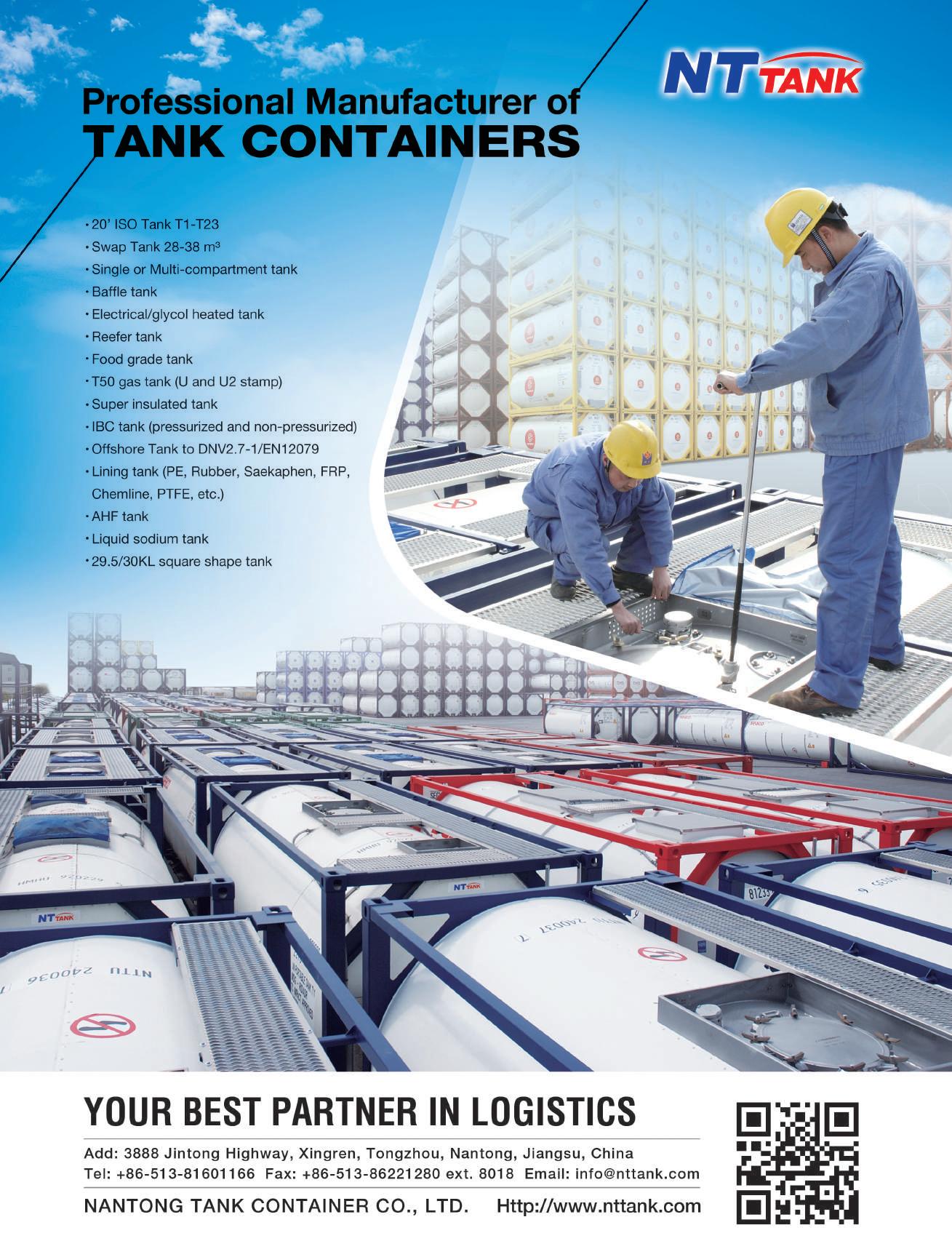
VOLUME 40 • NUMBER 08
News bulletin – tanks and logistics 25
Letter from the editor 01
30 Years Ago 04
Learning by Training 05
The View from the Porch Swing 06
The time is right Looking ahead to ChemEdge 08
Ever ready Blackmer pumps help DEF delivery 12 News bulletin – chemical distribution 14
All about the green Greif updates sustainability tool 16 Asian expansion Schütz grows in Australia, China 18
Hazards contained Labelmaster extends Obexion range 20
Taking steppes Spectransgarant adds depot capacity 22
The digital drugstore DHL develops US network 28
A bigger box
CSafe’s larger RAP container 30
Visible monitoring
Sensire brings digital to pharma 32 Bigger in Brussels
Swissport develops Belgian hub 33
Sweet George R Brown ILTA draws a big crowd to Houston 34 Forge ahead
Tough first half for Stolthaven 40
Gassing up
Enterprises works on export capacity 41 Back to basics
NuStar takes the cash home 42 Gulf in class
Howard Energy invests in Texas 43 Precision insights
Eddyfi refines NDT tool 44
Look, no hands
Autonomous robots in tank inspection 45 News bulletin – storage terminals 46
Training courses
Conference diary
SAFETY Incident Log
Weak at the needs
CSB identifies DuPont failings
Knowledge is power How NCEC helps with accidents
Head for the beach
COSTHA gathers in Long Beach 58 Code breakers
IMO revises chemship rules
Change is constant
Lion offers support in compliance 66
Not otherwise specified
Equipment for storage terminals
Gas tanker market developments
Dangerous goods by air Report from the VCA dangerous goods seminar
Peter Mackay
Email: peter.mackay@hcblive.com Tel: +44 (0) 7769 685 085
Craig Vye
Email: craig.vye@hcblive.com Tel: +44 (0) 20 8371 4014
Stephen Mitchell
Email: stephen.mitchell@hcblive.com Tel: +44 (0) 20 8371 4045
Designer Natalie Clay
Alex Roberts
Email: alex.roberts@hcblive.com
Tel: +44 (0) 208 371 4035
Commercial Director Ben Newall




Email: ben.newall@hcblive.com
Tel: +44 (0) 208 371 4036
Binita Wilton

Email: binita.wilton@hcblive.com
Tel: +44(0)208 371 4048
HCB Monthly is published by Cargo Media Ltd. While the information and articles in HCB are published in good faith and every effort is made to check accuracy, readers should verify facts and statements directly with official sources before acting upon them, as the publisher can accept no responsibility in this respect.
Cargo Media Ltd
Marlborough House 298 Regents Park Road, London N3 2SZ
ISSN 2059-5735 www.hcblive.com
These days, a cost of doing business in the dangerous goods logistics sector lies in the numerous certifications, assessments and audits that need to be undergone before contracts will be signed. It is easy to assume that these hurdles have been imposed by the authorities or by the chemical industry but, looking back through the August 1989 issue of HCB, it is evident that much of the impetus came from logistics service providers (or ‘transport companies’, as they were normally known in those far-off days).
We reported in that issue on discussions that had taken place at the Tankcon 89 event – a long-gone trade show specifically for the road tanker transport sector – over the need for a harmonised concept of quality management in the fuel distribution industry.
The problem was emerging as a result of the increasing use of audits by inspection bodies and shippers, leading to hauliers promoting the use of the relatively new British Standard BS 5750.
It seems strange to think that this was once a new idea; BS 5750 rapidly became commonplace in all sorts of industrial sectors, taken up and expanded into the ISO 9000 series and supplemented now by ISO 14000 and, for those in the chemical supply chain, SQAS, Responsible Care and all the sectoral and modal standards that apply.
Elsewhere in the August 1989 issue, there was a though-provoking article by Martin Castle, who at the time was chief officer, dangerous goods at Pira International. He was promoting the idea of having a single set of regulations for the transport of dangerous goods by air, which would have the benefit not only of saving shippers a

lot of money through not having to have duplicate sets of rulebooks, but would also make enforcement simpler. Martin acknowledged the right of individual airlines – and, indeed, states – to issue their own restrictions on top of those provided in the ICAO Technical Instructions, but felt it pointless for the IATA DG Regulations to also merely reproduce the text of the Technical Instructions.
Martin’s proposal came at a time of significant change in the air transport rules, which had only just adopted the UN package testing provisions, and work was going on to adapt the UN’s new limited quantity provisions to be suitable for air transport. These changes would further reduce the variations between the UN system and that developed by IATA, which had been discussed at a joint IATA/ATA meeting in Houston in April. The two associations agreed that the UN limited quantity system was not so far away from IATA’s existing provisions for ‘non-specification packagings’, which had been in use for more than 30 years.
Pira International reappeared in the August 1989 issue in its role as the operator of the UK’s packaging certification scheme, following what we called “severe criticism” of its annual charges levied on the packaging industry. The charges had been introduced to cover the running of the scheme, after the UK Department of Transport had withdrawn funding. DTp and Pira had agreed to meet the Chemical Industries Association and the Association of Drum Manufacturers to sort out the issue but it was clear that fees in the UK were, one way or another, going to remain higher than in other European countries.
When I sit down to write this column, I usually don’t know what to write about just yet. It normally comes to me when I start typing words onto my keyboard but today, for some reason, it seems more difficult than before. I know I have written about risk management, HSEQ control and the use of Systems Sciences and Cybernetics quite a bit, so those subjects I will give a rest, because I feel that not many of you seem to have understood yet what I was trying to tell you. Few people contacted me to ask about these sciences. We are nearing summer and it is getting warmer, although now, as I am writing this, the temperature dropped 10 degrees. I have mentioned climate change before, but is man actually causing this? What man is certainly doing is using up earth’s resources at an exponential rate.
In 2018, Earth Overshoot Day fell on August 1. That marks the day when humanity has exhausted nature’s budget for the year. For the rest of the year, we are maintaining our ecological deficit by drawing down local resource stocks and accumulating carbon dioxide in the atmosphere. We are operating in overshoot.

Globally, many countries are proud that their GDP grows yearly. Politicians gloat, business owners and shareholder reap the benefits, but when I look through my cybernetical lens I conclude that this pride is undeserved, because it is based on positive feedback alone. Negative, corrective feedback, such as the above statement by Footprint Network, is not included in this politically motivated message.
Is it safe for the hazardous cargo industry to use up more resources than nature can provide? Should we cooperate and
look into some kind of rebalancing system of production, sales and transportation in accordance with natural limitations? Can we? Will we? I can’t say at this moment if there will be enough consensus to adjust the ongoing financially motivated depletion of resources, but we can sure start to cooperate towards a mutually beneficial goal, i.e. the sustainability of our planet on which we all depend.
A modus to stabilise production and usage can be achieved, but it seems that emerging markets in developing countries would speed up depletion rather that slow it down, because they too want their GDP to grow. So, I am not an optimist at all.
As a researcher and developer of sustainable systems, a road to equilibrium or homeostasis is possible, but unfortunately ignored by the many. Perhaps you will read this, think about it for some time, but as we are slaves to a path-dependent economic system, rescue will not come from outside.
No alien spaceship will land here to save us, partly because aliens will already know by analysis or synthesis that human beings used up most valuable resources themselves. For them, there will be little left of the spoils which nature created over billions of years. No, they will pass by our planet, observe the space junk flying about, because they probably made the same mistake.
This is the latest in a series of articles by Arend van Campen, founder of TankTerminalTraining. More information on the company’s activities can be found at www.tankterminaltraining.com. Those interested in responding personally can contact him directly at arendvc@tankterminaltraining.com.
I like to eat and I like hazmat. There doesn’t seem to be much overlap between the two, but if you’ll bear with me, by the end of this column you will find there’s more overlap than you’ve first thought.
Not everyone likes to eat, at least not everything. My little brother was predictably hilarious to his siblings, but not to his parents whenever they took us out to eat at an ethnic or nationalistic cuisine restaurant. “No, John,” my parents would patiently explain, “they don’t have hamburgers at a <<insert cuisine here, e.g. Chinese, French, Indian, etc.>> restaurant”, while my sisters and I giggled discretely. Then came the outright laughter as my brother, again predictably, uttered slowly and thoughtfully, “Well, if they don’t have hamburgers, how about a peanut butter and jelly sandwich?”
Years later, it wasn’t exactly ‘different’ food that bothered my daughter, but the way ‘different’ food looked. A bowl of soup or stew was an ugly brown, but apparently smelled irresistibly delicious, because Briana had one of her sisters fold a cloth napkin into a blindfold and tie it around Briana’s head. Then she proceeded to spoon fed herself every bit of the ugly deliciousness. Trying to explain to me why the blindfold was really necessary, she told me, I suppose in terms she thought I could understand, “it looked like HazMat”.
Of course, everyone knows, right, that food can’t be HazMat and Dangerous Goods aren’t edible. Eh, not! The same peppers that are sometimes ground into an edible, spicy powder for flavoring food are also sometimes ground into an edible, spicy powder that is used for an entirely different purpose: self-

defense spray. Yes, that mace substitute that’s all natural and 100% organic and, oh by the way, is edible, is also HazMat. If not in aerosol form (UN1950), check out proper shipping names beginning with Tear Gas Substances.
Other favorite restaurant memories involve flaming desserts. Similar to Pavlov’s dogs, I think I salivate just from reading the word ‘flambé’. Sure, I know that the flammable alcohol has burned off before I eat the dessert, but as I sit here on my porch swing composing this column, I’m sipping on a little liquid inspiration. Next time someone asks you what your favorite identification number is, considering answering UN3065. It is edible.
One of my favorite foods, solid foods, is crab. Crabs though, because they will decompose almost immediately upon dying, need to be cooked alive. In India there’s a place that air freights live crabs all around the country. For a few days each month, I think around the full moon but it could be the new moon, the crabs secrete pheromones that drip through the bushel baskets and corrode the aluminum aircraft floors! Sounds Class 8 to me.
Not so tasty, I hear, are MREs. Meals Ready to Eat, are used by the military (many militaries), heat themselves, and are sometimes less unpalatable than at other times. Technically, the heater portion is separately compartmented from the edible portion, but they’re often one ‘unit’ and the heating results from an exothermic reaction between an oxidizer (potassium permanganate) and water, so an MRE is HazMat. Who knew?
For alcoholic beverages, it’s pretty clear that the food is the dangerous good, and for MREs it’s pretty clear the DG is only associated with the food, but what about pressurized or nitrogenated edibles?
Cylinders of compressed CO2 that carbonate Coca-Cola from a soda fountain are clearly separate and only associated, but what about a can of Guinness with a little unopened cartridge of nitrogen at the bottom?
And what about those little helium containing wine ‘thingys’ (thingies?)? They poke through the wine bottle cork, and push out the wine on demand, all the while keeping nasty oxygen away from the wine. I know the thingies (okay,
I decided on the spelling) are DG before they’re inserted into the cork, but what about when attached? Okay, I concede that one wouldn’t transport the wine while connected to the helium, but maybe you’ll concede that Division 2.2 and food can sometimes be one and the same. Please don’t make me mention aerosol Cheez Whiz.
Some of my parents’ efforts to civilize me worked, at least partially. I’m willing to try new foods and eat ‘different’ things. While doing a little work at DGAC in Washington, DC, a DGAC employee (thank you, Blake) took me to a food truck featuring Ethiopian cuisine. Oh wow, was it delicious! My first food truck, ever, but in part due to that great first experience, far from my last food truck food.
Which brings me to the inspiration for this column. For those of you who follow HCB and/ or Peter Mackay on Twitter, and for those of you who read the Incident Log in HCB this won’t be a surprise, but worldwide there seems to be a greatly increasing number of fires and explosions from the propane
tanks that food trucks cook with. Sure, I’d occasionally wondered about food poisoning, but this put the potential dangers of food trucks in a whole new perspective. Now, not only do I have to worry about the potential Division 6.2 in food truck food, I have to worry about the whole truck going up!
Yes, food and HazMat are more connected than I realized. From Class 2 inside Guinness cans, to Class 3 alcoholic beverages, to Class 5 MREs, to 6.2, um, let’s not think about 6.2 and food, to Class 8 crab pheromones. There’s a lot of DG related to food. And we haven’t thought about Class 9. Could a particularly stinky cheese be Aviation Regulated, and are kimchee and/or kippered herring environmentally hazardous? I don’t know. But I do know I like to eat, and sometimes I like to eat HazMat.
This is the latest in a series of musings from the porch swing of Gene Sanders, principal of Tampa-based WE Train Consulting; telephone: (+1 813) 855 3855; email gene@wetrainconsulting.com.

“NEXT TIME SOMEONE ASKS YOU WHAT YOUR FAVOURITE UN NUMBER IS, TRY ANSWERING UN 3065 – IT IS EDIBLE”
THE NATIONAL ASSOCIATION of Chemical Distributors (NACD) decided many years ago that the only available space in the meeting calendar where it could find a home for ChemEdge, its annual conference and trade show, was mid-August. This would not work in Europe but North America is different and, since its inception, it has become a regular meeting point for the regional chemical distribution sector, where delegates can get the finest insight into regulatory compliance, implementing best practice and promoting safety
From 12 to 16 August this year, more than 400 executives, directors and leading minds in chemical logistics are expected to descend on Louisville, Kentucky, for training sessions, conferences and a trade show tailored to chemical distribution channels.
This year’s ChemEdge promises to be “a balance of great educational content in relevant areas for attendees,” says Matt Glaser, vice-president of education and strategic programmes at NACD. “We have sessions that cover regulatory issues and compliance. We also always have sessions that are directly related to safety. This year, there are also sessions on inventory, warehousing, transport and more.”
These topics will be widely discussed across the floor and are not just limited to the individual presentations: Glaser
mentions how previous ChemEdge events have had industry leaders continuing the conversations over coffee, in the hallways of the show or even in the hotel elevator.

NACD’s events committee got to work on the topics for this year’s sessions just 30 minutes after the doors closed on the 2018 event and it has scheduled a diverse range of matters for 2019 on the many facets of regulations and safety. For example, there will be two emergency management and response sessions to provide as much detail as possible for attendees looking to refine their processes when problems occur.
“Covering emergency management in just one hour is too much. Having two sessions allows us to dig a little deeper and get more focus,” says Glaser. The first session will be based on proactive actions, involving a lot of preventative measures, and the second will revolve around reactive actions. “It’s about prevention, ensuring safety of employees and protecting the surrounding community,” adds Glaser. Eric Byer, NACD president, mentions that the onus is still firmly set on safety while trying to allow ease of conducting business, despite the current
PREVIEW • CHEMEDGE, NACD’S FLAGSHIP EVENT, COMES TO KENTUCKY THIS YEAR, AT A TIME WHEN THERE IS PLENTY TO TALK ABOUT IN TERMS OF REGULATIONS, DIGITISATION AND TALENT
US government not introducing many new regulations.
“All of our events are about best practices, safety and operational excellence,” says Byer. “We focus a lot on security. One example of a security issue that is really important to us is the Chemical Facility Anti-Terrorism Standards (CFATS), which is something we worked hard on last year and have had extended until April 2020.”
CFATS was created to improve security and protection at sites and the US Department of Homeland Security (DHS) reviews each and every site in scope annually. The programme covers physical and electronic issues that may occur, such as a break-in or sabotage, ultimately serving as a national standard providing the highest levels of security possible to prevent any incidents.
Byer adds: “Our members have spent a lot of time and money getting security features such as fencing, doors, cameras and training protocols to protect sensitive products at their facilities, and CFATS provides a level of comfort that allows members to feel more secure and safe overall. It can also provide a business advantage against the competition.”
The CFATS project has developed and grown over the last few years, but it requires further effort in educating members of US Congress to its benefits and emphasising how beneficial it has been to the DHS and businesses around the country to ultimately gain long-term investment. “There are a lot of benefits to CFATS and very few drawbacks,” concludes Byer.
The problems of recruiting and retaining new talent in the chemical industry have been a well-discussed topic at events around the globe and it is predicted by Glaser and Byer to be a key talking point at ChemEdge this month. Glaser explains how the majority of businesses that attend ChemEdge tend to be relatively small with fewer than 30 staff members, meaning that hiring new staff is not a regular occurrence and losing a long-standing staff member with specific experience can be costly. When a new member of staff is hired, it is pivotally important that the investment in the individual
pays off, so ensuring longevity in the role is key to retaining staff.
One solution could be found in shifting the business ethos to meet the demands of the new working generations “with the aim of encouraging people to stay in a job for five or six years, rather than just two or three,” says Byer. It is vitally important that the time, effort and money put into training someone in a specialised role is recouped. Glaser concludes the conversation on worker retention by stating, “You can’t minimise the importance of this topic.”
A hurdle that needs to be overcome in the industry to improve recruitment and retention is changing the wider perception of the chemical industry. “Changing the negative image is the biggest challenge we face,” says Byer. There has historically been a negative image associated with the industry, but this image hides the truth. Glaser and Byer are both eager to highlight the many outreach programmes and educational events that businesses across the chemical industry take part in each year to showcase the true colours of the industry.
Part of the NACD Responsible Distribution programme involves community outreach where conversations with local groups are encouraged, local sponsorships are developed for sports teams or facility developments and
much more, including hosting chemistry-based challenges for students. The large amount of time, effort and resources being attributed to improving the industry image by NACD members cannot be emphasised enough.
Byer points out that there has been a large increase in the number of smaller familyrun businesses having senior partners retiring. When this happens, the business is usually either handed down a generation, or the family is bought out and the company is merged into a larger business looking to capitalise on local markets. “We’re seeing a higher number or mergers and acquisitions –which is challenging – causing the talent pool to keep shifting around,” says Byer.
The movement of talent exacerbates the ‘brain drain’ in the industry and NACD is proactively introducing training programmes that encourage staff to remain in a company for an extended period. “The hope is that the new staff go through these programmes that the companies pay for and the individuals feel that the value is there as they’re in an organisation that believes in them as they’re investing in the training for their future,” says Byer.
NACD provides support and training through its ‘Emerging Leaders’ programme where networking opportunities within the »
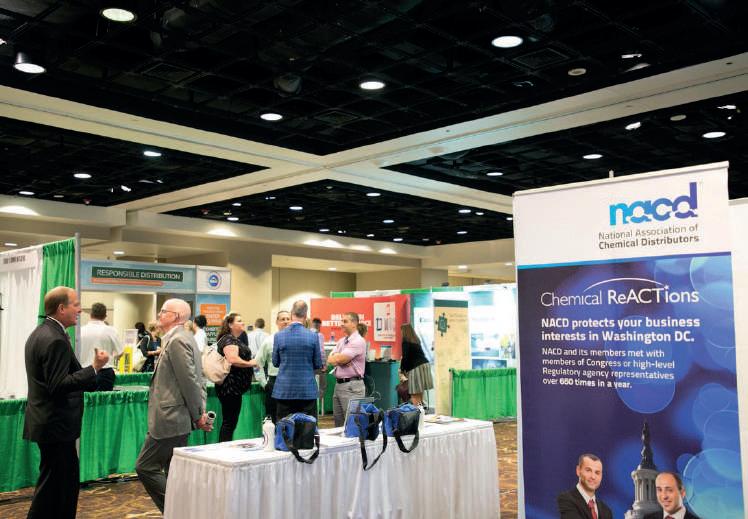
younger members of the industry are nurtured. Training in everything from business finance to logistical methods is provided and the peer conversations are dissected to find suitable solutions to industry-wide issues that move operational safety forwards. “We’ve had over 60 graduates out of this programme over the last six years,” says Byer. “Complacency is not a part of what we do. We are always, as an industry, looking to grow and expand our operational and safety records.”
Digitisation in the chemical supply chain is completely unavoidable and it’s here to stay. ChemEdge will have a closing discussion hosted by the Kaizen Institute’s Mike Micklewright about utilising digital innovations to downsize documentation systems. Having this as one of the final points for attendees to mull over at the end of the show emphasises just how important digitisation has become. Glaser believes that the topic of digitisation will rear its head prominently in the sessions covering inventory practices, warehousing and transport logistics: “There will be a flavour of digitisation overlapping into several of the sessions.” “We are definitely in the digitisation world,” says Byer. “I think the electronic route is quickly replacing the paper one in everything from logging driver times to e-commerce purchases. These things are happening far more now than they were a year ago and I believe that it will be even more so in a year
from now.” The conversations at ChemEdge have shifted from a mentality of ‘getting prepared’ for digitisation into ‘we’ve begun accommodating digitisation and want to utilise it’. Both Glaser and Byer feel that the proportion of businesses discussing their digitisation goals will keep increasing in the coming years as more platforms are being created and the number of digital solution users continues to grow.
The addition of digitisation has made it easier for businesses to share and analyse data, particularly when looking to improve on safety and discuss different methods to handle responsible distribution. Byer mentioned NACDU – NACD’s online university
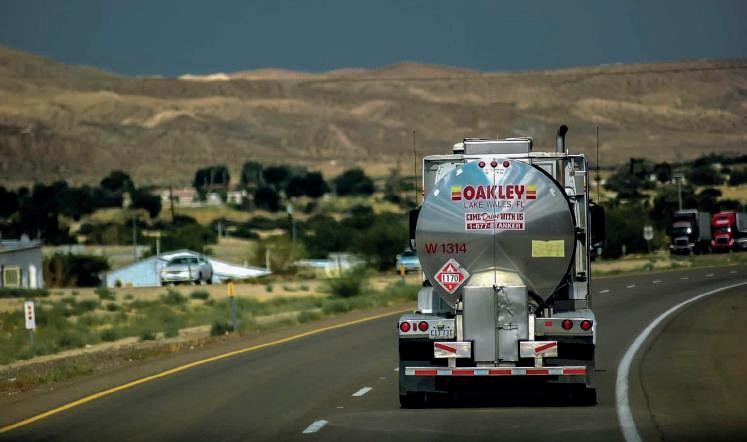

– as a key way in which digital solutions are being embraced to not only develop a greater understanding of regulations, continue education, but also improve operational systems within the community.
“One of the key takeaways from ChemEdge is that a lot of the sessions are interactive and there is opportunity to learn some best practices and methods that are considered cutting-edge in the industry while also meeting colleagues,” says Glaser. “There is the opportunity to say, ‘I learned a lot at the show and there are two or three things that I might be able to implement in my own businesses that will prove beneficial’. We hear all the time at subsequent shows that people have implemented new ideas in their workplace that they picked up from ChemEdge.” The interactive sessions and programmes allow business members “prepare for any regulatory inspections that may come through,” adds Byer.
Registration is still available online for ChemEdge 2019. Specialist training sessions begin Monday 12 August and the opening of the main ChemEdge event is Wednesday 14 August at the Omni Louisville Hotel. HCB www.nacd.com/education-meetings/meetings/ chemedge/2019-chemedge
NACD PRESIDENT ERIC BYER (ABOVE, CENTRE):
“WE ARE DEFINITELY IN THE DIGITISATION WORLD”

these materials. This means that any transport used to haul DEF, as well as its wetted components, needs to be made of stainless steel or approved plastics. This ensures the fluid does not become contaminated during its handling and transfer. By extension, the pumps required to load DEF onto the transport and off again into a storage vessel or truck, must also be compatible with DEF’s unique characteristics.
However, not all DEF-compatible pumps are created equal. Many DEF pumps can be categorised as low-cost, short-service ‘throwaway’ pumps, which use inadequate designs and, in many cases, are constructed of cheaper plastics materials. Improper pump design can cause the equipment to lock up, shut down or leak, resulting in costly downtime or a messy cleanup.
suitable for DEF applications, they can be extremely noisy, and their design and method of operation can cause the pump to shut down and overheat when used continuously. In addition, the pumps usually cannot provide the flow rates most DEF haulers need.
DIESEL EXHAUST FLUID (DEF) is a daily necessity for hauliers and transport companies. But delivering DEF can be very challenging; it needs to be handled by equipment and transports specially designed for the purpose. DEF is incompatible with materials such as copper and brass and can lead to corrosion of
This is a lesson that Earl and ‘Little Man’ Evan Noble – the father and son team that keep trucks running for SA White Oil Company (above) - had to find out the hard way. Prior to finding their current pump solution, the two were using a brand name 12-volt transfer pump to deliver DEF. While the pumps are

“Before, we were using whatever pump fit our application because we just didn’t know that there was a better quality pump out there,” says Earl Noble. “The pumps we originally installed seemed to work fine for the smaller tanks when they didn’t have to pump that much. But when it came time to make more consistent deliveries, the pumps couldn’t handle that much pumping. If we ran the pumps too long, the 12-volt motor on the pumps would overheat and not turn back on until they were cooled down, especially in the summertime when it was hot. These are time-sensitive deliveries and our drivers can’t be waiting for the pumps to cool down or be replaced.”
In addition to material compatibility, another important consideration is pump reliability
PUMPS • THE PARTICULAR DEMANDS OF HANDLING DEF, ESPECIALLY IN LARGE VOLUMES, CALL FOR A TRANSFER SOLUTION THAT CAN ENSURE THE OPERATOR CONSISTENT UPTIME
and longevity. Pumps that use parts that are not as robust as the industry standard are more likely to wear out or break down faster. When these operational problems occur, the result is higher costs for maintenance, repair, replacement parts and, in the worstcase scenario, the purchase of a new pump. The hidden cost in these situations is the downtime incurred as a truck sits idle. And an offshoot of the downtime that can stall the delivery schedule is something that can be just as costly for the delivery company: a loss of reputation.
“We were going through three or four pumps a year on each truck,” says Earl Noble. “It’s frustrating when we have the product but we can’t deliver it because a pump broke down. It not only makes our company look bad, but it makes Little Man and me look bad because we’re the ones maintaining the trucks. So with me, it’s three strikes and you’re out. When a pump shuts off or breaks down a few times, I just want to take it off and replace it. So, when the pumps we were using hit three strikes, it was time to find something more reliable.”
To help find this solution, the pair turned to Werts Welding & Tank Service of Doraville, Georgia, a distributor of tank-trailer parts and equipment. Specifically, the father-son team contacted Elliot Noble for a pump recommendation. In addition to being the branch manager at Werts Welding, Elliot is Earl’s brother.
“My brother called me and said he was looking for a more reliable pump,” says Elliot Noble. “I could tell he was frustrated and just couldn’t take the breakdowns anymore. I knew I had to find him the best possible solution.
“I told Earl and Evan to go with a Blackmer because it provides them with the correct flow rates and pressures, and it’s able to clear the tank lines quickly, which speeds up the delivery time for the drivers,” Elliot Noble explains.
“And best of all, they are reliable. With the Blackmer, it’s all about constant pumping. You never have to worry about the pump shutting down, and they are not affected by the weather. Hot or cold, they just keep on pumping.”
Blackmer SX1B-DEF Series sliding vane pumps have been specifically designed to meet the strict handling requirements of DEF; all of the pump’s materials are either DEF-approved or have been tested to ensure there is no fluid contamination or leeching. This allows the pumps to meet the ISO
22241-3 material standards and cleanliness specifications required for DEF-handling applications. With a small, compact design, SX1BDEF Series pumps are ideal for truck mounting and for use in fleet refuelling or tote applications. What further differentiates the SX1B-DEF model from competitive models is a choice of 12-volt and 110-volt motor options. The 110-volt version is available with a 50and 60-Hz dual-rated motor.
An additional unique feature of the SX1BDEF pump is the incorporation of a 316 stainless steel motor shaft as the pump shaft. Other features include C-face pump mounting, commercial mechanical seal, and 1” NPT or 1” BSPP tapped-port options.

SX1B-DEF pumps offer a flow rates up to 10 gpm (37.9 l/min) with differential pressures to 25 psi (1.7 bar) and motor speed capabilities up to 1,750 rpm. Operating within those parameters, SA White’s DEF tanks can be offloaded in as little as 15 minutes.
The reliability of the SX1B-DEF pump can be attributed to pump’s easily maintained and replaceable Duravanes® that self-adjust for wear in order to maintain flow rate, while minimising shear and agitation. An internal relief valve protects the pump from excessive pressures. The pump also has excellent self-priming and dry-run capabilities and maintenance is reduced because internal wear is almost completely limited to the easily replaced sliding vanes, which can be accomplished without needing to take the pump out of line.
SA White Oil, a third generation family-owned company founded in 1926 and still located at its original headquarters in Marietta, Georgia, operates 25 fuel tankers within a 150-mile (240-km) radius of Atlanta. Along with its sister company Mobilized Fuels, it uses four refuelling trucks that provide fleet-fuel deliveries of both diesel and DEF; they handle more than 5,000 gal (19,000 litres) of DEF each week. HCB
This is an edited version of an article by Geoff VanLeeuwen, product management director for Blackmer, a product brand of PSG, a Dover company. For more information, visit www.blackmer.com or www.psgdover.com.
Melrob US has successfully passed its recent NACD Responsible Distribution verification for the current three-year cycle. The verification confirms the company’s commitment to the health, safety and security of employees, communities and the environment. The Responsible Distribution programme requires on-site, third-party verification of facilities against guiding principles, including strict adherence to laws and regulations and participation with in creating responsible laws, regulations and practices.
“We are delighted to have passed this NACD Responsible Distribution independent third-party verification,” says Dr Oliver Pyrlik, CEO of Melrob US. “Commitment to the 13 Codes of Responsible Distribution is at the heart of Melrob operations and will help our continued growth in the US market”. www.melrob.com
Maroon Group has acquired Amsyn, a national distributor of specialty chemicals to the US coatings, lubricants, nutraceutical,
pharmaceutical and electronics industries. “Amsyn’s ability to distinguish itself as a leading provider of technical solutions has resulted in close integration within its customers’ supply chains. The acquisition reinforces Maroon’s position in core markets and is a great fit within our comprehensive portfolio of specialty chemicals and ingredients,” says Terry Hill, Maroon Group CEO. Amsyn’s management team, led by Thomas Castrovinci, will continue to actively manage the business on a day-to-day basis. www.maroongroupllc.com
Brenntag has acquired US-based lubricants distributor B&M Oil. Headquartered in Tulsa, Oklahoma, B&M deals with the sale, marketing and distribution of lubricants to automotive, industrial, commercial, construction and agricultural consumers throughout the state. B&M Oil generated $28.5m in sales for the 2018 financial year.
Markus Klaehn, member of the management board at Brenntag Group and CEO of Brenntag North America, says: “B&M is a
bolt-on acquisition for JAM Distributing, our Brenntag Lubricants business platform in the central US region, and will expand our offering in the growing Oklahoma marketplace.”

Anthony Gerace, Brenntag’s managing director mergers and acquisitions, adds: “B&M is a good fit that strengthens our position in the Oklahoma marketplace. The company’s two metropolitan-based facilities will support the future growth of our lubricant distribution business in the area.”
Additionally, Brenntag has downgraded its forecast for its full-year EBITDA growth for 2019 after “a noticeable slowdown in demand in June”. It now expects operating EBITDA to grow by 0 per cent to 4 per cent, rather than 3 per cent to 7 per cent as previously forecast.

“During the second quarter 2019, the macroeconomic environment weakened noticeably in the two main Brenntag regions. In addition, important indicators for Brenntag as well as the company’s own market assessment point to a continued difficult environment in the course of this year,” the company says. Despite that, preliminary, unaudited figures for the second quarter point to an increase in EBITDA from €231.3m last year to around €266m.
In other news, Brenntag North America has become the primary distributor for Arkema’s waterborne resins in the US. The product line of more than 45 different resins are used in end use applications such as adhesives, caulks and sealants, construction products, architectural
paints, traffic coatings and industrial coatings. “As we evaluated potential distribution collaborators in North America, we were impressed by Brenntag’s ability to market, deliver, and support products in industries where technical expertise is required,” says Eric Kaiser, regional president for Arkema’s coating resins business in North America. www.brenntag.com
Charkit Chemical, a subsidiary of LBB Specialties, has acquired CA Specialities, a South Carolina-based distributor of personal care ingredients, and Custom Ingredients, a manufacturer of specialty ingredients. Founded in 1987, CA Specialities provides distribution and sales support to customers in the southeast US. CA expanded its business in 1995 by establishing Custom Ingredients.
Cathy Ayer Clark will continue to lead CA Specialities and Custom Ingredients in her role as president, reporting to Charkit’s president, Jay Lang. “Charkit represents the ideal partner for Custom Ingredients,” she says. “Our organisations are complementary and will support each other’s growth. With long-term vision and increased access to markets and capital, I’m delighted to partner with Jay and the Charkit/LBB Specialties team as we grow forward together.” www.charkit.com
Biesterfeld Group has merged subsidiaries to provide a heightened service in Iberia for customers seeking plastics, rubbers and chemicals. Biesterfeld Spezialchemie Ibérica SLU has merged with Biesterfeld Ibérica SLU as a part of the ‘One Biesterfeld’ concept.
Thomas Arnold, Biesterfeld CEO, explains that the ‘One Biesterfeld’ concept “aims to
achieve a uniform market presence and a strong focus on business activities. Having more effective structures in place will make us more agile. It increases our ability to respond even quicker to the challenges of the Iberian chemicals, rubber and plastics markets, and it will help Biesterfeld Ibérica to achieve sustainable growth in the future.”

The merger of the two subsidiaries has been designed to enhance procedures and management systems, generate synergies between sites and improve the processing of Iberian business activities. The two current managers will continue running operations across one Portuguese and two Spanish offices. www.biesterfeld.com
Omya has extended its reach into Malaysia and Singapore by acquiring Trilogie Polymers, a regional distributor of engineered polymers. “Trilogie and Omya share a similar culture and business approach of helping clients expand their market reach, be it locally or overseas. Our clients can benefit from the competence Trilogie will bring to our organisation,” says Sander Herden, Omya’s director of distribution, Asia-Pacific APAC.
Thomas Wee, Trilogie’s founder, adds: “For the past 14 years, Trilogie has been successfully
distributing engineered thermoplastics in Singapore, Malaysia, Indonesia, Philippines and China. Omya has an impeccable reputation and strong core values of modesty, integrity, courtesy and perseverance evident at both a group and employee level. We look forward to being part of the Group. Together, we can leverage Omya’s international presence to further drive our clients’ businesses with a broader and deeper engagement.” www.omya.com
Barentz-owned Tovani Benzaquen Ingredients has purchased Chemspecs, the largest specialised distributor of personal care ingredients serving the Brazilian cosmetics market. “This is a great step forward for all of us,” says Moses Benzaquen, Tovani Benzaquen Ingredients’ CEO. “Chemspecs’ highly trained sales team of technical experts and the wellequipped application laboratory will be of great value. It is the perfect complement to Tovani’s existing team of specialists, and it will certainly enhance the further development of our product portfolio and services.”
Barentz CEO Hidde van der Wal adds: “We had high expectations for our partnership with Tovani, and they were met above and beyond! Our collaboration quickly proved its worth by yielding more and better solutions for our current and new customer base. Our businesses complement each other in terms of markets served, principal relationships, product offerings and business culture. Our shared entrepreneurial mindset and in-depth expertise of our business bind us. I am convinced that the integration of Chemspecs will follow the same successful route.” www.barentz.com

specific sector. Using a range of crossfunctional data including geographic scope, product specifications and transport, the Greif Green Tool allows multiple stakeholders within a business to discover shared improvement opportunities. The examination results can be further used to develop an environmental baseline, helping customers make comparisons between different packaging types and tracking individual environmental progress over time.
The latest substantial updates to the Greif Green Tool include enhanced analysis that allows detailed modelling, plant-specific analysis and improved classification of Greif’s sustainable products and processes.
“As more companies develop sustainability goals, specifically carbon emissions goals, they start looking for ways to reduce their carbon impact, which includes the performance of their suppliers and the products they use,” says Aysu Katun (opposite), director of sustainability at Greif. “The Greif Green Tool provides robust information for strategic decision-making in a very easy-to-use format. With strategic sustainability decisions involving bigger groups of senior leaders, Greif’s Green Tool can help multiple parties understand and agree on the need to change.
popular Greif Green Tool as user numbers continue to grow.
THERE IS LITTLE doubt that packaging is one of the most essential parts of the dangerous goods industry, but it can come at a cost to the environment. Combatting plastic waste and reducing carbon footprints have become two of the key targets for industry across the globe. To assist in achieving and surpassing these goals, Greif has recently updated its
Originally developed in 2010, the Greif Green Tool is a flexible calculator that uses independent lifecycle data for Greif’s industrial packaging products. It is designed to help customers and companies proactively explore new ways to reduce their environmental footprint, make informed decisions about which industrial packaging is best suited to their needs, and achieve their sustainability goals.
The Greif Green Tool reviews and compares the environmental impact of different products, such as plastic drums, steel drums, fibre drums and intermediate bulk containers (IBCs), that might be relevant for a customer’s

“Both Greif and our customers are concerned about the global waste crisis,” Katun continues. “By helping our customers compare the environmental impacts of different packaging options such as new versus recycled versus reconditioned packaging, we assist them in making decisions that will proactively help them mitigate against future damage to the environment.”
Further exemplifying Greif’s environmental impact reduction is the recent Together for Sustainability (TfS) audit score of 98 per cent for its plant in Cologne, Germany. The on-site TfS examination assessed sustainability performance against a defined set of criteria across various aspects of the business, including management, health and safety, environment, quality, energy management and social responsibility.
“Cologne’s success is testament to the skill and dedication of its workforce. The audit
supports our commitment at Greif to ethical and sustainable business practices. It offers customers reassurance that we have a robust safety, health, environment and quality management structure in place,” says Michael Kolz, Greif’s SHEQ manager for EMEA-Central.
Greif’s second quarter results show strong increases in sales and profits, with net sales up $245m over the year at $1.21bn and gross profit ahead by $53.4m at $248.7m. Adjusted EBITDA rose by 31.4 per cent to $162.0m. “Greif produced solid financial results in fiscal second quarter 2019 despite the continuation of trade-related market softness in parts of our global Rigid Packaging segment and a more challenging demand environment in our Paper Packaging segment in the US,” says Pete Watson (opposite), Greif’s president and CEO.
Part of the increase can be attributed to the acquisition of Caraustar Industries in February.
“We completed the Caraustar acquisition during the quarter and are currently integrating these operations in a disciplined manner,” says Watson. “I am pleased with the energy and pace of the integration, but I am most impressed with how well our teams have come together. Through their collective efforts, the combined team has uncovered a variety of operational enhancements and new synergies not previously identified during the due diligence process.”
Greif further says it has identified $15m of new estimated run-rate synergies related to the Caraustar acquisition. The company now predicts that it will be able to achieve at least $60m of run-rate synergies over three years.
While overall figures were impressive, Greif’s Rigid Industrial Packaging & Services division fared less well. Second quarter net sales fell by $31.1m to $631.6m, although excluding foreign exchange impacts there was a $2.3m increase in sales, largely as a result of a 3.9 per cent increase in selling prices for Greif’s primary products. This was partly offset by continued softness in demand in western and central Europe, Asia-Pacific and the US Gulf.
As a result of the drop in currency-adjusted net sales, operating profit fell by $0.2m to $47.0m and adjusted EBITDA was down $2.7m at $68.9m
Looking to the remainder of 2019, Greif is feeling confident and taking the momentum of the last two quarters forward to utilise the addition of Caraustar and the continued growth of specialist services such as the Greif Green Tool.
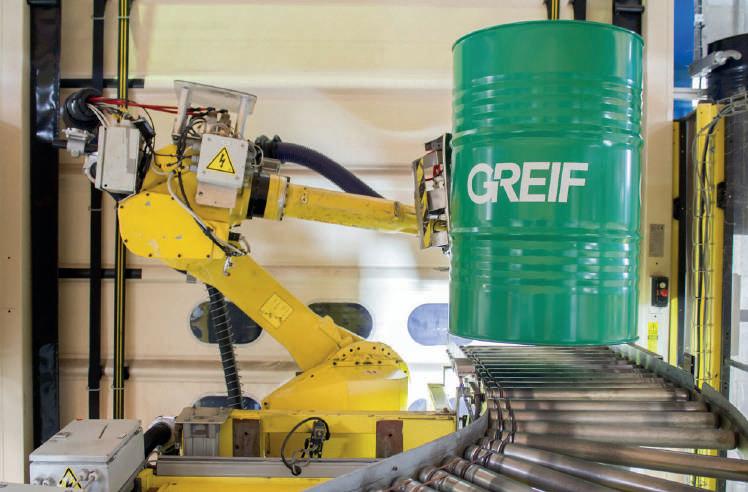
“We have revised our fiscal 2019 guidance slightly higher, despite expected continuation of market demand challenges for the remainder of the fiscal year,” concludes Watson. “Looking beyond 2019, the long-

term fundamentals for our business remain favourable as we integrate Caraustar into our business and advance ongoing value optimisation activities in our global portfolio. Our team remains focused on delivering exceptional value for our shareholders and customers.”
Since the end of the quarter, Greif has made what it describes as a “large-scale investment” in its production facility in Casablanca, Morocco. A new blowmoulding machine has been installed, which is said to use up to 30 per cent less energy than older machines and will also offer “significantly higher productivity levels”. It will be used to manufacture plastics jerrycans and is expected to increase production capacity for one- to five-litre bottles for the lubricants market by up to 25 per cent.
“This investment guarantees supply to our customers as we experience continuing high demand for our blowmolded bottles. It demonstrates our ongoing commitment to improving customer service and driving down cost,” says Abdennour El Mosor, Greif’s regional manager, MENA. “It also reflects Greif’s commitment to minimizing its carbon footprint.”
The Casablanca plant manufactures jerrycans of up to 25 litres and also steel drums, with customers in the lubricants, chemicals and agro-food sectors. HCB www.greif.com
SCHÜTZ HAS HAD a busy start to 2019, opening new production facilities in Australia and China to capitalise on market growth and expanding its St Étienne site in France.

In Australia, Schültz has had a longstanding presence in Perth and Melbourne, but industrial packaging needs to be produced close to the centres of demand and the north and east of the country has so far been under-represented. The large investment in Yatala, south of Brisbane, is designed to provide clients in Queensland and New South Wales with sustainable packaging and related services, in addition to offering significantly increased supply reliability and flexibility.
The new facility is strategically located between Brisbane and the city of Gold Coast, both of which are economic hubs for Australia. Brisbane port is only 40 minutes away from the new site, the border into New South Wales is a mere 50 km away and the region hosts excellent road and rail transport. This new production plant will significantly optimise the supply chain for regional customers –both economically and ecologically. Shorter transport routes for the delivery of new intermediate bulk containers (IBCs) and the collection of empty containers will save time, lower costs and reduce CO2 emissions.
Aside from the prime location to cater to Shütz’s growing number of clients, the new 19,000-m2 site includes state-of-the-art facilities for the production of new IBCs, highcapacity storage and logistics facilities and equipment that provides the highest quality IBC and drum reconditioning. Production at the site also includes the IBC product lines
MX, SX and the reconditioning of the G2 110-litre drum for agricultural chemical use.
One of the main driving factors for Schütz to invest in this region is the increasing popularity of its Ecobulk and Recobulk IBCs through the Schütz Ticket Service. The existing facility in Melbourne has been running this system over the last few years. Empty Ecobulks are collected and reconditioned in compliance with globally uniform process standards at the advanced facilities. All components that come into contact with the filling product, such as inner bottles, fittings and screw caps, are replaced with brand-new components to ensure quality. All reclaimed plastic recyclate is used for the production of new pallets and corner guards. At the end of the process, the result is a Recobulk IBC that corresponds fully in terms of safety and quality to an Ecobulk with the same standard specification.
Mirroring the regional expansion in Australia, a new Schütz facility has opened in Foshan, China. Alongside Shanghai and Tianjin, the new Foshan site is the third Schütz production location in the country. Having had a presence in China since 2005, continuous investments and growth have allowed Schütz to develop a greater regional footprint along the Chinese coastline.
Logistically, the spread of these three facilities is important as it provides excellent coverage for the growing customer base and a great deal of flexibility in logistics for supplying clients with quality Schütz products. It provides Schütz with the opportunity to service a greater spread of businesses and source new clients with improved logistical solutions.
Schütz has been monitoring the recent economic growth in China and believes there is still more to come. This recent investment cements Schütz’s place in China, showing long-term commitment. Guangdong province, in which Foshan is located, is part of one of the most important economic centres for the nation and the wider Asian market, notably because it is close to Hong Kong and Shenzhen. The transport connections in the province to the rest of China, an enormous market for chemical packaging,
MANUFACTURING • SCHÜTZ HAS BEGUN 2019 BY EXPANDING IBC AND DRUM PRODUCTION AND RECONDITIONING SERVICES IN CHINA AND AUSTRALIA AS IT RESPONDS TO GROWING DEMAND
are excellent and will assist in reducing Schütz’s carbon footprint through improved logistical possibilities. Foshan is a primary location in the region as a commercial and industrial centre for pharmaceuticals and the automotive sector.
The new development in Foshan houses a 20,000-m2 high-tech plant and a state-of-the-art production building and adjoining office complex covering 9,500 m2. The structures have been designed to achieve optimum internal logistics and play an important role in reaching wider Schütz plans for sustainability targets, notably short distances to customers and short distances within the plant.
A three-layer extrusion blowmoulding machine has been installed in Foshan that complies with the latest and strictest standards. It produces both non-UN containers and IBCs with hazardous goods approval. While designing the Foshan
plant, the corresponding requirements, such as maximum safety measures for absolute cleanliness, were taken into account. The Schütz Foodcert models for sensitive products in the food industry will in future also be part of the portfolio produced in Foshan and certification to industry standard FSSC 22000 is already underway.

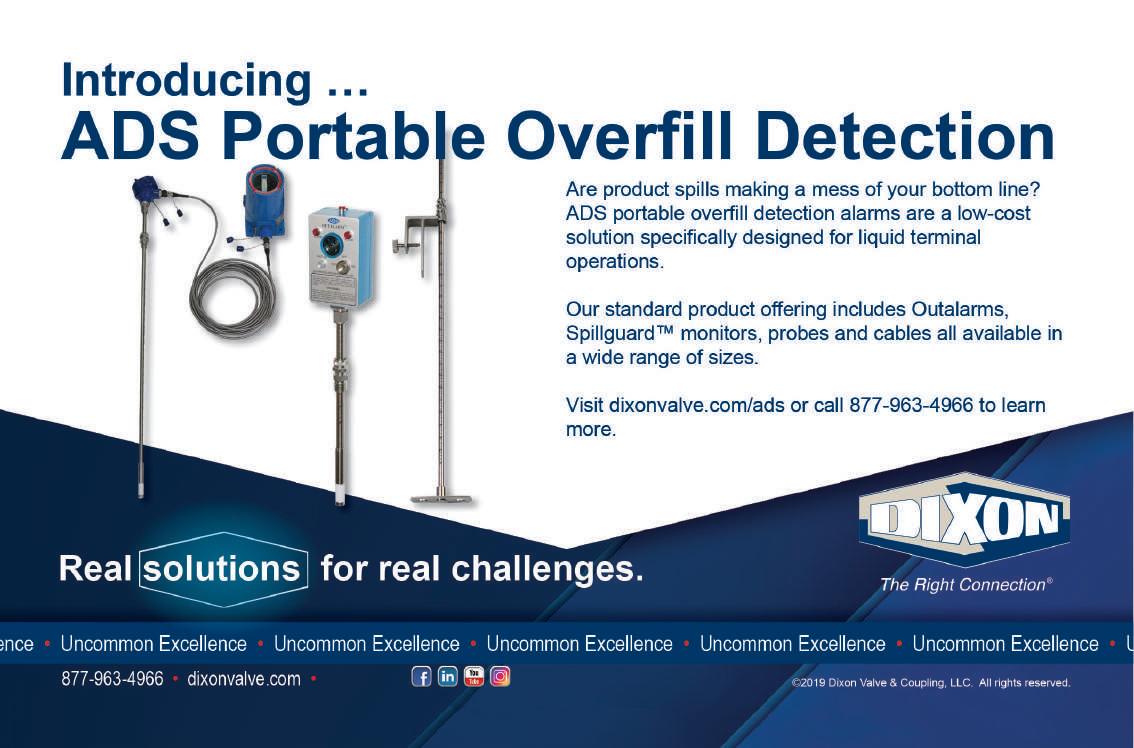
Finally, although a smaller development in comparison to Yatala and Foshan, a three-
layer extrusion blowmoulding machine is being added to the St Étienne facility in France. Originally opened in 2014, the site near Lyon was recently modernised by Schütz, with the installation of a new roof, flooring, and shutters. The new blowmoulding machine will serve customers in southern France and nearby regions, providing flexibility and supply security. HCB www.schuetz.net
LABELMASTER HAS EXPANDED its Obexion line of packaging, engineered specifically for the shipping and storage of lithium batteries and devices containing them. The Obexion protective packaging, Labelmaster says, “provides a simple solution that mitigates the risks of lithium battery fires and is compliant with the latest hazmat shipping regulations”.
Obexion Max, the original product, is a lightweight fibreboard box that offers a simple and compliant solution for shipping damaged, defective and recalled lithium ion batteries and devices. Its innovative, fire-retardant material and a proprietary heat shield contains pressure, fire, gases and projectiles without requiring the use of gel packs, heavy liners, pellets or fillers. US DOT Special Permit 20432 allows the shipment of these goods in an Obexion package as excepted shipments by ground or vessel without
requiring the hazard class labels, hazmat shipping documentation, specialised training or carrier surcharges typically associated with fully-regulated Class 9 shipments.
Obexion Max has now been supplemented with three additional products:
• Obexion Express, a single-use model for shipping individual lithium battery devices by ground

• Obexion Recycler, which provides fire retardance for any and all batteries being shipped for recycling or disposal; US DOT Special Permit 20527 allows users to ship mixed loads
• Obexion Vault, an armoured, multi-use receptacle designed for lithium batteries and devices that have gone into thermal runaway or are at high risk; its enhanced flame arrestment and ballistic protection can contain a thermal runaway incident that is already in progress. This model is designed for electronics retailers and manufacturers, third party logistics providers and medical device, power tool and electric vehicle original equipment manufacturers (OEMs).
“A thermal runaway event is one of the most unpredictable and damaging hazards in dangerous goods transport, and fully charged batteries pose the highest danger,” says Alan Schoen, president of Labelmaster. “Unfortunately, the self-conducted tests manufacturers use to obtain special permits are often performed using partially charged, lower-capacity batteries. As a result, packaging may receive a special permit and be considered in full compliance, yet still not provide full mitigation of a thermal runaway event. Obexion packaging, on the other hand, is tested using brand new batteries, with maximum watt-hours, at a full state of charge. So whether a lithium battery is new or old, fully or partially charged, in perfect condition or defective, shippers can be confident that Obexion packaging has been proven to provide the best protection against thermal runaway events.”
Labelmaster’s development of the Obexion packaging concept was recognised during the Industrial Pack 2019 show in Atlanta, Georgia in March, where it was given the Industrial Packaging Award in the ‘Excellence in Transit Packaging’ category. “Lithium battery fires are alarming and can cause significant damage and injury,” Schoen said at the time. “Our customers are thrilled with Obexion’s solid, uniquely engineered design that uses multiple technologies to mitigate the thermal event rather than letting it go and trying to contain it. When lives, property and brand reputation are on the line, it is important to fully understand the packaging solutions available in the marketplace.” HCB www.labelmaster.com/obexion
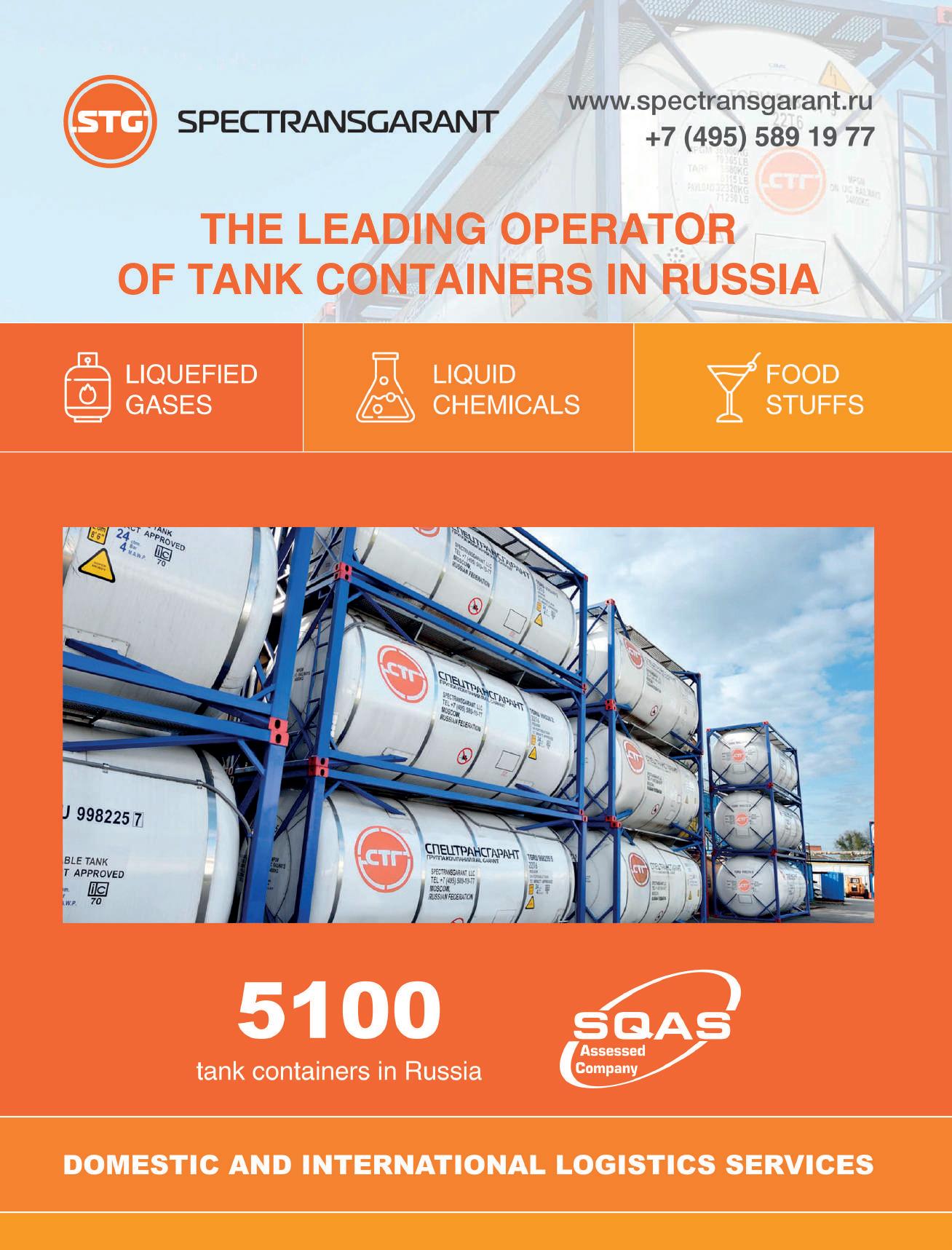
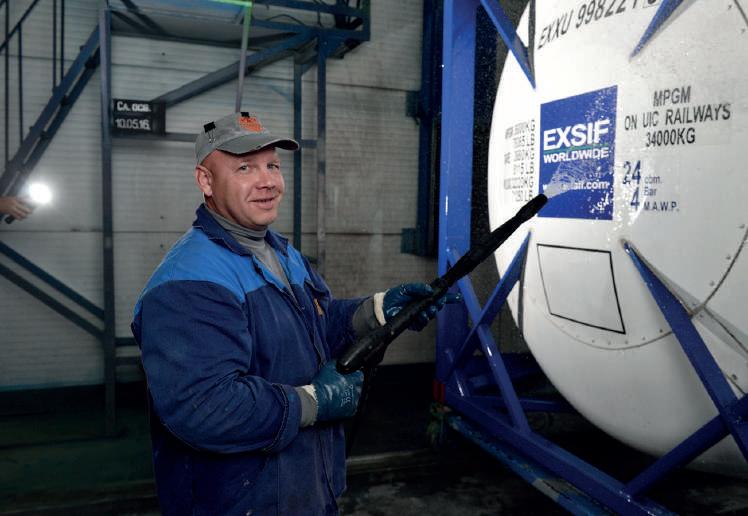
THE MAINTENANCE AND servicing of tank containers is fundamental to the efficient use of multimodal transport for the movement of dangerous chemicals in bulk. In Russia, however, the vast size of the nation, inconsistent infrastructure and insufficient training cause issues in achieving the proper technical conditions.
“Slowly the service component in Russia is developing,” says Maria Surina, CEO at Spectransgarant Company. “Before, we talked about an almost complete absence of servicing infrastructure, which was a significant obstacle to the development of tank container transport, now the network of depots and washing stations has expanded.” As things currently stand, there are an inadequate number of depots, washing and steaming
stations for the nation, but businesses such as Spectransgarant are working diligently to fill the gaps and raise the standards.
One of the problems faced by industry in Russia is that of maintaining and developing quality. Being able to provide the highest level of work is instrumental to protecting workers, but also developing long-lasting relationships with clients. Due to the longstanding shortage of expertise and facilities across the nation, quality has been slow to develop at the rate of other nations.
“The quality of work performed, unfortunately, does not always correspond to generally accepted standards,” says Surina. “For example, only a few [Russian] depots
have the approval of technological processes required for repairing the frame and vessel.”
To counteract low quality, Surina argues, owners of service enterprises should strongly enforce standardisation and be willing to invest in higher levels of training at all stages of tank container maintenance.
Furthermore, the use of specialised equipment across Russia can be patchy at best, limiting the possibilities for businesses. “We are working on improving the technology of repairing rubberised tank containers used to transport aggressive chemicals,” says Surina. “There are very few rubberised tank containers in Russia, therefore not all enterprises have experience in providing high-quality repairs.”
The volume of tank container business has increased in Russia so much that Spectransgarant has recently completed two new tank container washing stations at its facility in Shakhunya in the Nizhny Novgorod region and the company is aiming to increase the current daily capacity of two to four tank containers to ten.
Alongside under-supported businesses, the environment is another victim of the tank container industry in Russia. Surina explains: “We often encounter low-quality flushing and non-compliance with environmental safety requirements during storage and disposal of waste. This is unacceptable in our business. It is necessary to improve, refine, learn from the experiences of our European colleagues and send staff for training and internships.”
As Surina points out, until recently there were no more than ten repair companies specialising in tank container maintenance in the whole of Russia, but that number has doubled in 2019. Comparing this to Germany – boasting numerous tank container maintenance companies that can be three times the size of their Russian counterparts in a country a fraction of the size with stronger infrastructure – the differences are stark.
Admittedly, there is still a way to go for Russia to provide the highest quality tank container services with issues blighting infrastructure, training and more, but progress is gaining momentum and a strong desire for investment is making the difference. HCB spectransgarant.ru
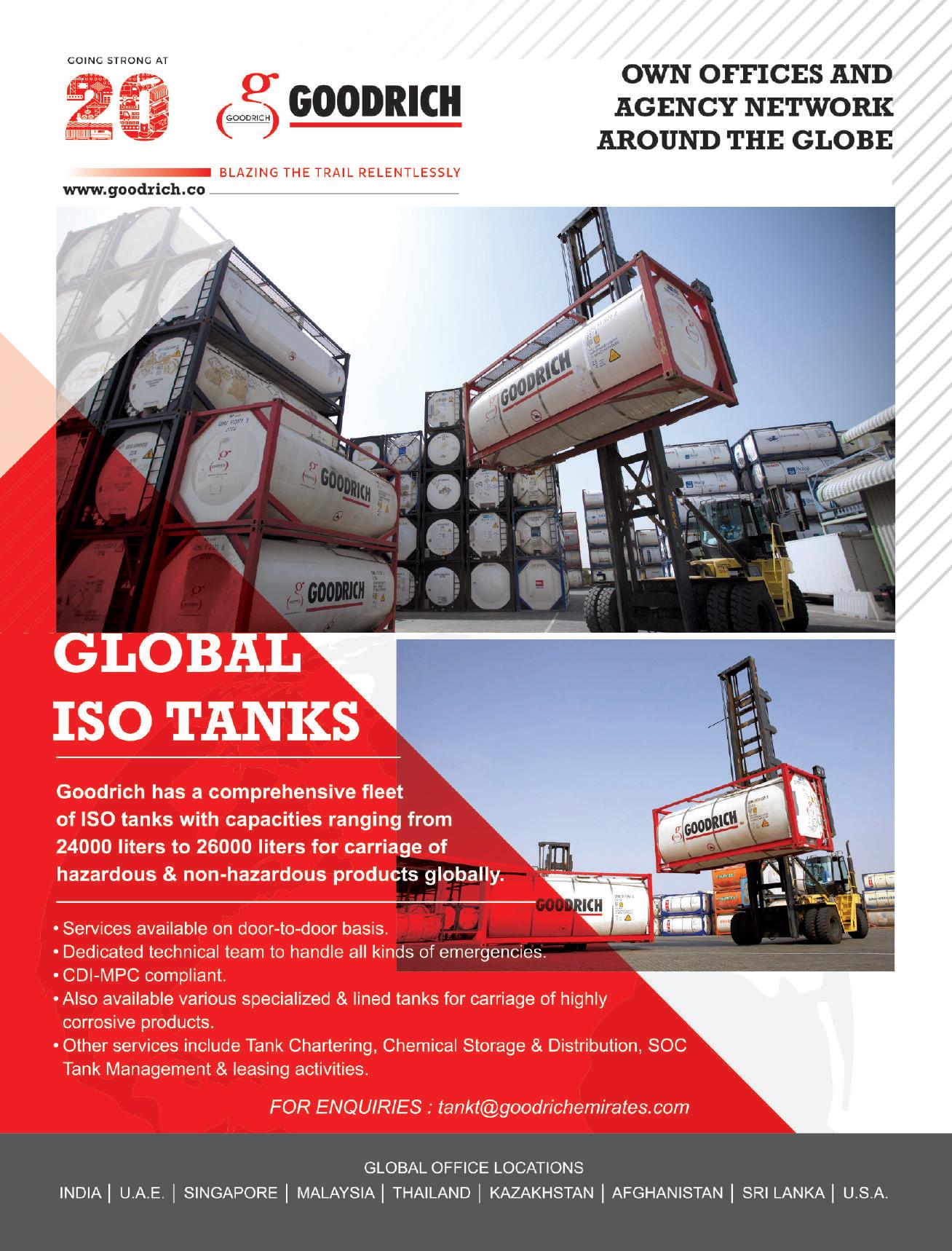
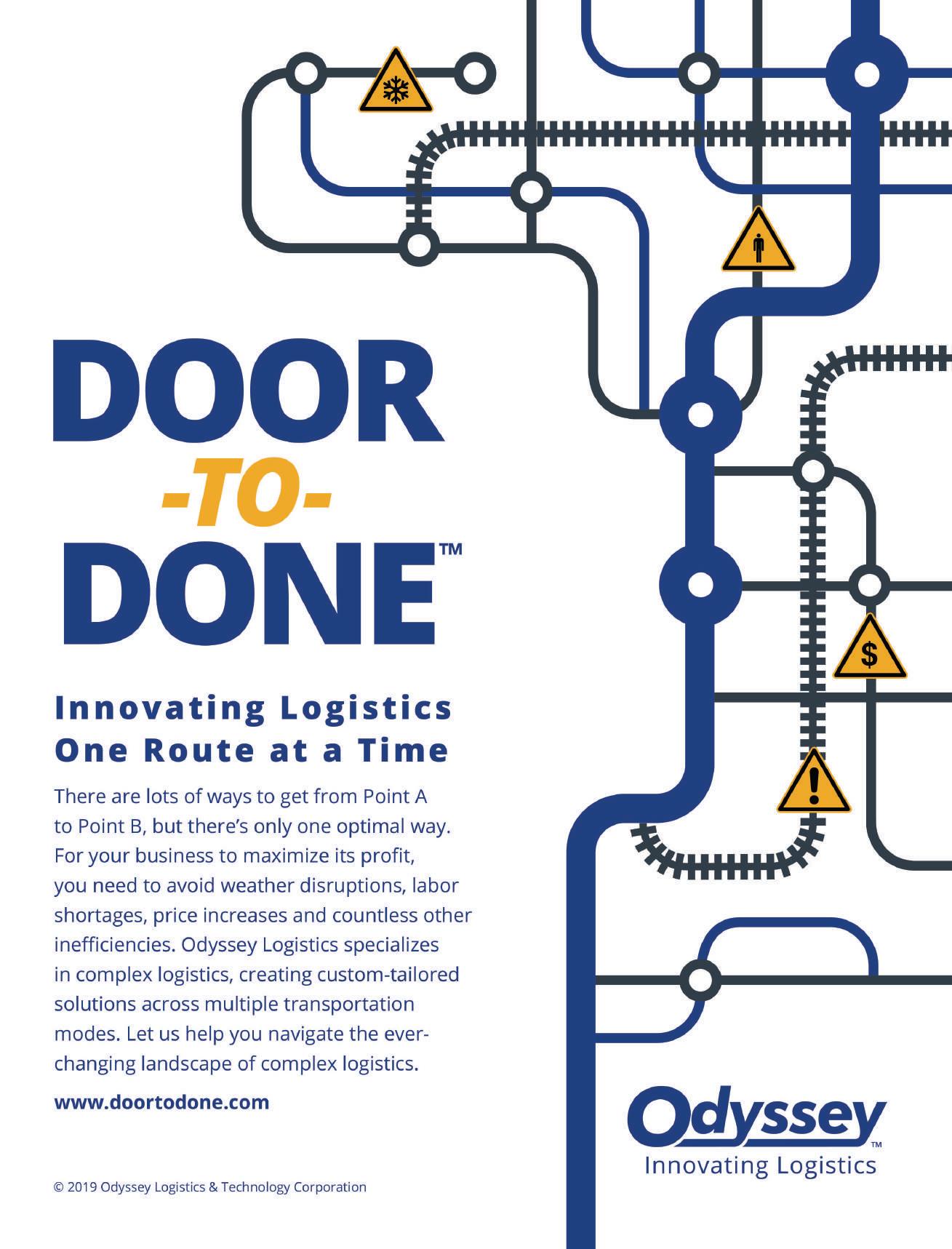
VTG Tanktainer has established a joint venture with its long-standing Brazilian agent, MissionLine Logistics, to help expand business in Argentina, Brazil, Chile, Colombia and Mexico. VTG-MissionLine Tanktainer do Brasil Ltda, based in São Paulo and led by executive director Alessandra Torazan, will combine MissionLine’s comprehensive logistics network with VTG Tanktainer’s expertise, particularly in hazardous goods and chemical transports and flexitank shipments.
“We have shared a close and successful relationship with MissionLine for many years and are delighted to be extending this proven partnership now. We are confident that by combining our strengths we can create significant added value for our current and future customers,” says Jan Roebken, managing director of VTG Tanktainer.
VTG notes that Brazil is generating substantial demand for tank containers through its position as focus of the regional chemicals industry. In addition, around 20 per cent of Brazil’s chemical exports are shipped to China, where VTG Tanktainer is well established

through its joint venture with Cosco, CoscoVTG, which was established in 2007. www.vtg.com
Israel-based Gadot Group has rebranded its European warehousing and logistics subsidiary, VLS-Group, with the Gadot name as of 1 July. The move follows the sale late last year of its Benelux warehousing activities to Broekman Logistics, leaving the VLS-Group, acquired by Gadot in 2007, with independent toll manufacturing, packaging, tank storage and a warehouse facility in Belgium and chemical warehouses in Frankfurt am Main and Mannheim in Germany, as well as offices at Düsseldorf and Istanbul.
Those divestments have been followed by what Gadot calls “an intense restructuring programme”, which is now reflected in the change of name. “The re-structured VLSGroup activities represent the European platform for our ambitious growth plans in Europe in various activities along the chemical value chain,” says Opher Linchevski, Gadot Group CEO. “That they will operate under the
Gadot flag visualises our commitment and eagerness to become a truly international company with a strong presence in Europe.”
“The activities of VLS-Group in Europe with its about 240 employees do not only continue to contribute to the broad service offering of Gadot’s international supply chain and logistics activities, we also have the capabilities to integrate those services and activities and increase the accessibility for our Gadot Group European client base,” adds Thomas Brakmann, general director of VLS-Group Germany & Turkey and future CEO of Gadot Germany.
www.gadot.com
Broekman Logistics has reported a “strong” growth in revenues last year, from €188m to €200m, with CEO Raymond Riemen calling 2018 “the turning point where the company started to benefit from the investment strategy it pursued in recent years”.
Organic growth in all three business segments – breakbulk terminals, agency and international, and warehousing and distribution – also delivered strong EBITDA growth. In the warehousing and distribution division, 2018 witnessed revenue growth of 18 per cent, following on from 2017’s 16 per cent increase.
The new Venlo warehouse and the acquisition of the VLS-Group warehousing activities in the Benelux area now allow Broekman to describe itself as “the market leader in complex logistics solutions for speciality chemicals in the Benelux”.
www.broekmanlogistics.com
Junzheng Energy and Chemical Group, a privately owned firm based in Inner Mongolia, China, has acquired the Sinochem Logistics Group. Individual business units, including Albatross Tank-Leasing, TechnoPort and NewPort Tank Container, will continue to »
operate under their own names as part of the newly established Gentco Logistics. Albatross says the deal includes funding for future expansion of its tank container fleet. The move is also reported to make Gentco the largest chemical tanker owner in China. www.albatross-tanks.de
The Container Owners Association (COA) has published a Guide to Container Tracking and Telematics Technology, providing container operators, leasing companies and other stakeholders with an overview of the technology issues that they might face, and the choices that are available to them.
“The evolution from ‘wired’ to ‘wireless’ has provided great opportunities - but adds significant complexity, because of the wide range of communication technologies available, how they are used around the world in different countries and communication issues with containers on vessels,” COA says.
The Guide provides a background of the changes over the past decade and discusses the need for proper integration across the supply chain. Primarily aimed at dry box operations, with a specific section on reefer containers, the Guide is available for download from the COA website. www.containerownersassociation.org/technicalresource/it-and-telematics/
Stolt Tank Containers (STC) has launched a Track and Trace solution to enable its customers to follow the status of their cargo online in real time via its website. A direct link to Track and Trace information will be included with every booking placed with STC, which says its mission “has always been to make shipping bulk liquids as easy and convenient as possible”.
The Track and Trace page on the STC website shows details for each individual tank, clearly indicating if there is a change in ETA, if any tanks are short-shipped or if there is any change to the schedule.
“STC is committed to finding new and innovative ways to help customers manage their shipments successfully and efficiently,” the company says. “Track and Trace is a key part of this, giving customers the opportunity to access up-to-date information on their shipments and the status of their tank containers 24/7/365.” www.stolttankcontainers.com
Eurotainer says that all its newbuild tank containers will be equipped with digital thermometers, as well as an additional bracket that will allow the fitment of telematics equipment to allow its customers to track their consignments in real time.
The digital thermometers will buffer temperature measurements for two years so that customers can obtain a read-out of historical temperatures, even if no telematics unit is installed.
www.eurotainer.com
Gibson Energy has closed the sale of its Canadian trucking business to Trimac Transportation for some $70m. The two parties are also discussing the transfer of a field office and shop facilities in Edmonton, Alberta and Gibsons expects this sale to close in first quarter 2020.
The sales complete Gibsons’ divestment of all non-core businesses, as announced in January 2018, with total proceeds of some $325m being reinvested in Gibsons’ core tank storage and pipeline infrastructure projects.
www.gibsonenergy.com
H Essers has taken delivery of 50 new tank containers for the transport of liquid chemicals, taking its fleet up to 880 tanks. In addition, the company has added 44 new cooling trailers for the transport of temperature-sensitive goods.
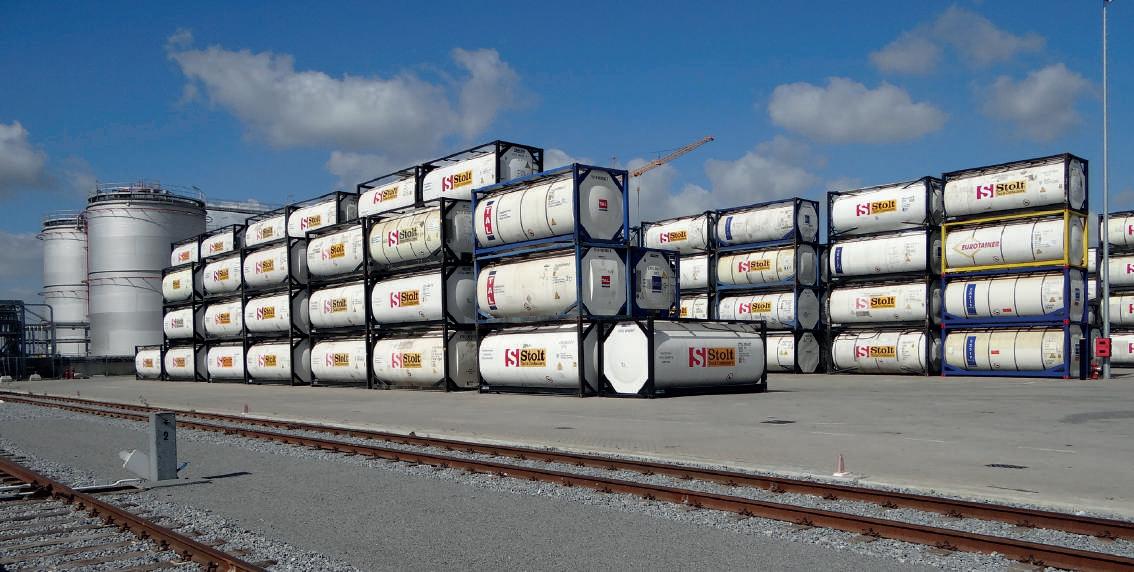
“All these investments give our company a head start and allow us to serve our customers even more flexibly,” says Dirk Franssens, fleet manager at H Essers.
www.essers.com


FOLLOWING DISCIPLINED PROCEDURES in cold chain logistics is critical to the storage and transport of pharmaceuticals. The slightest temperature variation can cause medications to lose their effectiveness or even become lethal to those that need them most.
It is frequently the distances between manufacturing site, intermediate storage and the destination that cause problems: the longer the goods are outside a regulated environment, the greater the risk that something will go wrong. To ensure the quality of produce is maintained during variable
periods of storage and when in transport, DHL Supply Chain has now invested $150m in expanding its pharmaceutical and medical device distribution network in the US to reduce distances and improve services to customers across the nation.
That investment includes new buildings and technology, plus the fitting of equipment and start-up requirements of new or expanded operations. The plan is for nine new sites to be operational by the end of 2019, bringing critical healthcare products closer to trade partners and patients.
These nine new sites are strategically located across the US and are fully licensed with temperature-controlled spaces to support pharmaceutical storage requirements. Furthermore, the sites allow for packaging and managed transport for integrated solutions, adding another level of diversity in solutions for clients. Customers can now take advantage of a greater range of ambient and temperature-controlled facilities for singleand multi-location storage and inventory management requirements.
“This expansion allows DHL Supply Chain to continue to deepen the connections between our customers and the patients they serve,” says Scott Cubbler, president of life sciences and healthcare at DHL Supply Chain. “This most recent expansion also helps us leverage differentiated routes to market, driving even greater efficiency and productivity across the supply chain for our customers. With this expansion, DHL Supply Chain will have a total of 30 sites designed to support pharmaceutical, biotech and medical device companies.”
DHL Supply Chain has many years of experience handling pharmaceuticals and has worked diligently to create a network of compliant warehouses and vehicles. At these cold chain warehouse, packaging and shipment preparation areas are set up within the same protected environment, using innovative packaging materials to ensure the product temperature stays in the specified range, from the moment it leaves the warehouse until the time it arrives at the destination.
In a separate development, DHL Global Forwarding is expanding its capabilities at its Chicago warehouse located at O’Hare airport, with a portfolio of new services and technologies to support the company’s key growth sectors, particularly for life sciences and healthcare logistics, that was completed in June this year. As with the aforementioned
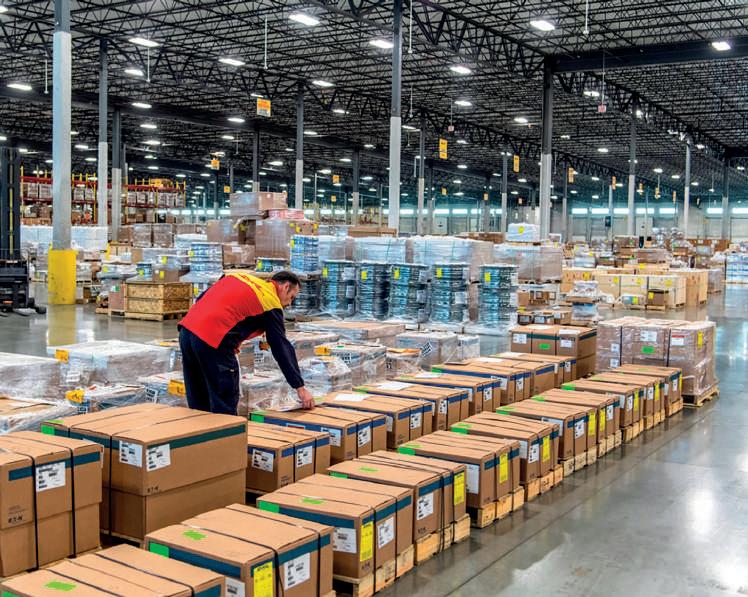
PHARMACEUTICALS • DHL IS EXPANDING AND IMPROVING ITS CAPABILITIES IN THE US TO ENSURE THE COMPLETE CONTROL OF TEMPERATURE-SENSITIVE HEALTHCARE PRODUCTSDHL HAS ADDED EXTRA CAPACITY AND NEW SERVICES AT ITS O’HARE FACILITY IN CHICAGO
projects at locations across the US, the O’Hare warehouse has been equipped as a temperature management import and export solution. This installation for life sciences and healthcare customers includes DHL SmartSensors that ensure temperaturesensitive shipments are monitored throughout the transport process, helping reduce demurrage costs.
The warehouse has also had an RFID passive and active tracking system installed. The new RFID tag technology provides the facility with the ability to detect where a container is from the moment it arrives at the 40,000-m² warehouse to the moment it leaves, without the need for manual scanning.
“By making digitalisation and automation a priority, we recognise that we can deliver meaningful service and productivity improvements to our customers,” says David Goldberg, CEO at DHL Global Forwarding. “These new services meet our customers’ needs including better and quicker visibility on rates and routes, more responsiveness from their transportation providers and the knowledge that their shipments are secure. This is particularly important to industry sectors such as life sciences and healthcare, which have highly sophisticated and specialised requirements.”
Christopher Gonsowski, station manager at DHL Global Forwarding, Chicago, adds: “Few
freight forwarders have this type of technology in place; meanwhile, DHL Global Forwarding is using it to manage all of its Chicago warehouse cargo inventory. The RFID passive and active technology will help us eliminate manual processes, reduce costs and time in our warehouse and respond more quickly to any exceptions in the transport process.”
Inaugurated in 2015, the O’Hare facility was the first DHL Global Forwarding facility in the US to become an IATA CEIV Pharma Certified Life Science Competence Centre.

The newly updated DHL SmartSensor temperature data logger, part of DHL Global Forwarding’s prioritisation of digitised and automated systems, provides distribution temperature control for the pharmaceutical and life sciences sectors. Using Near Field Communication technology, the sensors log in-transit temperature data of sensitive shipments and power DHL’s key temperaturecontrolled products, which includes DHL Air Thermonet and DHL Ocean Thermonet for air and sea freight respectively. The sensors can operate between -40˚C and +60°C, providing a reliable service for a large swathe of pharmaceutical products.
“We understand the challenges and sensitivities that come with transporting temperature-controlled products,” says
Patricia Cole, global head at DHL Temperature Management Solutions. “The new DHL SmartSensors are part of the need to provide a holistic range of patient-centric solutions and deliver them in a safe and timely manner. We ensure that our customers’ medical products will be treated with the utmost care, as we understand what is at stake – a life that will be improved or in some cases even saved.”
“We have used this alternative temperature-controlled method with various large pharmaceutical customers,” adds Gonsowski. “Through our extensive expertise handling temperature sensitive pharmaceutical products, we follow all necessary good distribution practices and monitor shipments at all times for any temperature excursions.”
These new technologies and solutions follow the recent launch of myDHLi Quote & Book, a convenient online service for comparing quotations and making instant bookings for air, ocean freight and even door-to-door shipments. DHL’s portfolio for the healthcare industry includes expert guidance and services from pharmacists, clinical trials depots, certified stations, GDPqualified warehouses, GMP-certified sites, medical express sites and a time-definite international express network covering 220 countries and territories. HCB www.logistics.dhl
AMERICAN AIRLINES CARGO, Alitalia and Swiss WorldCargo have joined the list of airlines to have approved the recently launched CSafe RAP temperature-controlled container. CSafe Global says the RAP is an industry-leading solution that offers unmatched operational performance, even in the most extreme ambient conditions –from -30˚C to +54˚C. CSafe RAP achieves this performance through a combination of vacuum-insulated panel (VIP) insulation, an innovative air recirculation technology, and a unique, autonomous temperature management system.
The CSafe RAP employs CSafe’s proprietary ThermoCor® VIP technology together with a novel compressor-driven cooling and radiant heating system to precisely maintain user-
defined payload temperatures throughout transport. It also offers a 20 per cent increase in payload capacity over competing systems, making it ideal for life-science companies shipping large volumes of temperaturesensitive pharmaceutical products.
“For many years, American and CSafe have worked together to provide high-quality, temperature-controlled active RKNs to pharmaceutical and healthcare shippers who depend on these containers for safe air transport of their products,” says Tom Grubb, global head of pharmaceuticals and healthcare at American Airlines Cargo. “American’s goal is to ensure ExpediteTC° continues to accommodate customer requirements in
order to meet future demand for increasingly complex medicines around the world. With this objective in mind, American is pleased to now offer the CSafe RAP as a key option for our customers’ valuable cargo,” he adds.
Antonio Temporini, vice-president, cargo at Alitalia, says: “There is increasing demand for transport of temperature-sensitive healthcare products preserving their quality and value, and this enhanced partnership further allows us to offer innovative solutions to healthcare shippers for the protection and the integrity of their shipments.”
“Swiss WorldCargo is delighted to allow CSafe RAP containers on board our aircraft,” adds Susanne Wellauer, head of pharmaceuticals and healthcare vertical industry management at Swiss WorldCargo. “Our partnership underscores not only a continued focus on quality in shipping temperature-sensitive pharmaceutical goods worldwide every day, but also our dedication to finding the best solutions for doing so.”
Many of the same leasing options currently available for the proven CSafe RKN are also available for the new CSafe RAP container.
Customers may lease the CSafe RAP container directly from CSafe Global, from airlines or through one of CSafe’s other logistics partners.
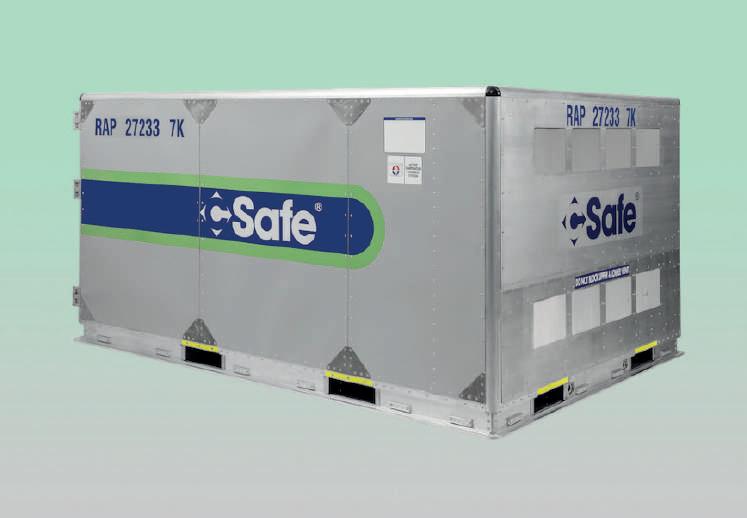
For example, LATAM Cargo, a leading carrier to, from, and within Latin America, recently signed a Master Lease Agreement with CSafe Global to extend alternative transport options to its clients shipping temperature-sensitive pharmaceuticals.
“Our top priority when shipping highly delicate and valuable cargo such as pharmaceutical products is to maintain the desired temperature levels throughout the entire time the cargo is transported, from the origin until its final destination,” says Rodolfo Marré, senior manager of product development at LATAM Cargo. “We understand that minimal deviation from the defined temperature ranges can greatly affect the quality of the products and that is why we are constantly evaluating new options for our clients. CSafe containers offer cutting-edge technology that will continue to strengthen our PHARMA ACTIVE Product.” HCB www.csafeglobal.com

assurance and validation processes clearer as the information will be in one place.”
Dirk Wilke highlights the fluctuating environments and storage locations in which hardware needs to operate and why transparency is vital: “Pharma has to be temperature-controlled and it has to be within various temperature ranges depending on what is being transported,” he explains. “But it’s not only transport. It starts in a laboratory from a freezer, then into a warehouse for a variable amount of storage time, where it can then be transported by a different method to another warehouse before finally being sent to hospital and stored prior to use as a treatment.”
“It’s about working with the customer,” adds Tukiainen. “Every customer in pharma has different internal processes and guidelines, so we provide expert guidance to ensure the best solution for each situation.” Customers can be regulated by a host of bodies making a onesize-fits-all solution for cold chain logistics impossible, leading to the development of several specific sensors. If pharmaceuticals are considered a dangerous goods niche, “nuclear medicine and sensors monitoring radioactive exposure during transport are a niche within a niche”, laughs Wilke.
TEMPERATURE CONTROLS CURRENTLY installed in cold chain facilities typically require manual operation to receive data, raising difficulties when tracing and analysing that data, and particularly when operations are international and involve different languages. “The biggest hurdle here is visibility throughout the chain,” says Dirk Wilke, European sales director for Sensire, which has launched a cloud-based system, TempNet®, to help overcome those problems.
Being able to easily track shipment data from the starting point to the end point is pivotal in proving that cargo was not compromised by tampering or temperature instability. TempNet can be accessed by everyone involved in the cold chain transport of pharmaceuticals to analyse shipment status and receive alerts.
The TempNet products are linked to TempNet Cloud, a multi-lingual one-view
cold chain software platform providing GxP-compliant data gathering and storage. Integration with existing monitoring systems is possible and is SAP-certified. The TempNet system monitors data in real time and handles overall data management, reporting and process development. The addition of sensors monitoring storage temperature and humidity, nuclear medicines, individual boxes, truck trailers and other aspects are possible, to provide optimum transparency. Drivers are provided with a cloud-connected app and can monitor data in real-time, which allows swift action to be taken if an issue arises to goods in transit. All sensors are battery-powered, can be relocated easily for wall-mounted site refits and can be installed by customers.
“We are digitalising the cold chain so that every cold chain action can become easier,” says Jarno Tukiainen, product manager at Sensire. “Digitisation makes the quality

“As an example, our sensors can be set up for recalibration every three years, which works for some customers, but others have to follow stricter regional guidelines and require recalibration every year,” says Wilke. “This is why we work closely with clients to work out exactly what is needed and cater the service to their requirements.” This is seen as an advantage as the more variations needed, the more solutions Sensire can swiftly provide for customers.
“We like to keep our services as flexible as possible because we are here to help our customers fix problems as easily as possible,” concludes Tukiainen. HCB www.sensire.com
DIGITISATION • FLEXIBILITY AND VISIBILITY ARE THE KEYS TO SUCCESS WHEN PROVIDING TECHNOLOGY FOR CUSTOMERS REQUIRING COLD CHAIN MONITORING, ACCORDING TO SENSIREPHARMA LOGISTICS LENDS ITSELF NATURALLY TO THE PROCESS OF DIGITISATION

SWISSPORT IS INVESTING heavily in its Brussels Airport hub, upgrading it to a stateof-the-art facility for the storage and transport of pharmaceuticals. Swissport, a leading expert in pharmaceutical logistics and air freight, already operates several warehouses that have been certified for pharmaceutical logistics by the International Air Transport Association (IATA) and is continually looking to expand its portfolio.
Construction of the new project began in January 2019 and is expected to be completed in two years. Once opened, the expanded site will host an advanced warehouse with a brand-new, four-story office building for Swissport and its clients. The facility will be able to support the pharmaceutical logistics
chain and provide the infrastructure needed to achieve a higher service level in Brussels as an international hub, assisted by the cuttingedge equipment.
The updated pharmaceutical site will be expanded to cover a much larger area. Swissport states that ambient pharma space will increase more than three-fold from 800 m² to 2,620 m² for products requiring temperature control between +15°C and +25°C. There will also be an additional 1,000 m² cooling facility for cargo between +2°C and +8°C. The expansion of the Brussels site will greatly increase the capabilities Swissport currently has in the region, with the intention to further grow its share of the regional and global pharma air transport sector.
Brussels Airport Company is constructing the building and Swissport has signed a longterm lease, investing several million euros in equipment and fittings for the new facility. The initial preparations for construction have already been completed and Swissport announces that “both demolition and construction works are in full swing”. As for the equipment being installed in the facility, Swissport will be including an automated material handling system (MHS), which is set to meet the highest standards in the industry, providing superior efficiency and peace of mind for users.
Landside, the site will feature 50 truck loading bays in a closed perimeter and a highly productive and cost-effective acceptance zone. The ability to cater to such a large number of trucks will greatly improve the logistical capabilities of the facility and the opportunities available to customers. Airside, there will be ‘speed gates’ that enable time-efficient logistics processes from the warehouse into the aircraft cargo hold. Cargo will be unloaded at the speed gates swiftly, security checked within the gates and brought directly to the aircraft with minimal effort.
“Our new warehouse and the state-ofthe-art Swissport Pharma Center will be the benchmark for modern and efficient air cargo and pharma logistics,” says Luzius Wirth, executive vice-president Europe, Middle East and Africa for Swissport. “The investment underlines our commitment to the Belgian market. In parallel, we are working to improve the profitability of our Belgian business activities in order to create long-term job security for our staff.”
Swissport Belgium currently has some 2,000 employees, handling more than 550,000 tonnes of air cargo annually. Its ground services division serves approximately 7.5 million passengers per year and this expansion in Brussels will strengthen the company’s foothold in the region.
Swissport is the leading provider of airport ground services and air cargo handling, active at 310 airports in 49 countries on six continents with 66,000 employees. The company achieved consolidated operating revenue of €2.99bn in 2018. HCB www.swissport.com
The leading minds in liquids terminals convened for discussions on everything from hurricane safety to truck driver issues. It was standing room only at some of the presentations and discussion panels as everyone wanted to get as much information and insight as possible from the premier names in the industry. It was an amazing turnout with more than 650 attendees contributing to the 28 conference sessions.
THE INTERNATIONAL LIQUID Terminals Association’s (ILTA) 39th Annual Trade Show kicked off in Houston this past 3 June at the George R Brown Convention Center and the neighbouring Marriott Marquis hotel, which hosted the conference sessions – making life easy for weary travellers such as HCB to get back to their hotel rooms after a long day of networking and learning.
Close to 3,600 participated in the show altogether, with many arriving before the main event to join the Annual ILTA Golf Tournament at Wildcat Golf Club, where more than 170 players met to test their skills on the green. The day was hot, but the golfers had an excellent outing with plenty of opportunity to catch up with friends and business associates.
Throughout the event, the key topics of health and safety, international projects and operational developments were widely discussed by a huge range of industry experts. Presentations were constantly happening, even during lunch, where topics as diverse as geological hazards and their
impacts on industry in treacherous regions were mentioned.
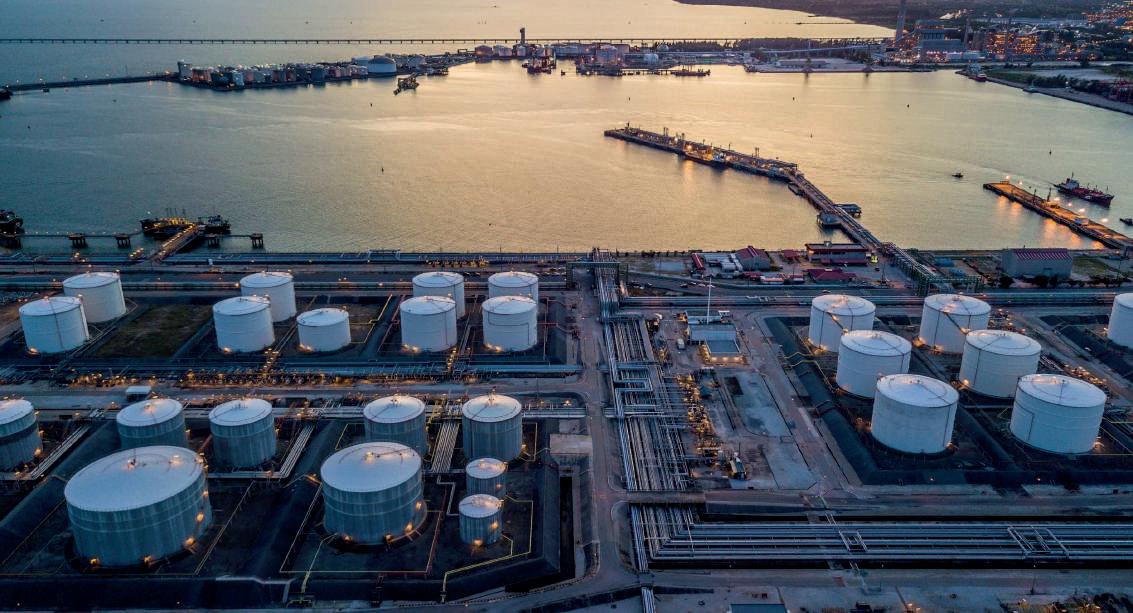
Melanie Little, senior vice-president at Magellan Midstream Partners, got conference proceedings under way with a presentation about improving performance strategies, outcomes and goals. Her premiss was that while many companies have a written strategy, team members are often left not understanding how these wider strategies link with their individual jobs and roles, ultimately impacting functionality and morale in different areas. Little spent the presentation demonstrating how clear strategies are able to provide platforms for senior leaders to develop and communicate essential outcomes throughout the business structure and attain success.
Keeping risk at an absolute minimum – if not completely eradicating it – is a key aim when it comes to the work involved in expanding storage terminals. Kinder Morgan’s professional engineer Earl J Crochet spoke about how to maximise tank storage capacity without increasing risk. Wherever possible, storage terminals should be maximising the amount of product that can be safely stored while simultaneously minimising »
EVENT REPORT • ILTA’S 2019 CONFERENCE AND TRADE SHOW PROVIDED THOSE IN THE LIQUID TERMINAL INDUSTRY WITH A WHOLE LOT OF INFORMATION ABOUT CURRENT TECHNICAL TRENDS


and eliminating the risks involved. Crochet’s session examined different ways to increase the utilisation of existing assets, including deploying different forms of technology, automation, procedures and personnel.
A key discussion point raised by Crochet was that most people tend to focus on fill rate rather than the rate of rise when adding to tanks. Depending on tank configuration, the same flowrate has different rate of rise; skinny, tall tanks are worse than short, wide tanks, causing inherent risk. However, the main takeaway from the presentation was that procedures are by far the most important part of the process. Crochet stated that procedures are more important than technologies and are vital as it is “almost impossible to ‘cookie cutter’ existing facilities” due to the specifics of each tank and abnormal procedures.
Crochet also spoke about the upcoming fifth edition of API 2350, expected to be released later this year, which will have ramifications for current storage terminal practices. Currently, the fourth edition provides a description of the minimum requirements required to comply with modern best practices and eliminate risk. These are based on
reaction times, defaulting to 15-, 30- or 45-minute intervals based on categories that are further based on the technologies. Anything less than 10 minutes requires “human factors analysis” – although Crochet points out that no one can agree on what this actually is. The anticipated fifth edition is expected to keep the majority of the previous edition, but also include a new Category 0, demonstrate what is meant by reaction times of less than 10 minutes and explain the preference for risk-based analysis.
Unfortunately, there will always be some who fit the mantra that “common sense isn’t so common” as Crochet explained, taking to the stage again to discuss the human element in managing risk and safety. Over the last three decades in the industry, Crochet stated how he personally has experienced a huge amount of change when it comes to health and safety regulations, but more can always be done. As Crochet stated rhetorically: “Why do we need health and safety professionals? Because people do stupid things.”
The introduction of the presentation included some cringe-worthy images of workers incorrectly connecting rail cars

and misusing a forklift before going into a detailed analysis into the correct number of fire watches needed for welding on an internal floating roof tank. Crochet went on to explain that the correct answer was that there should be at least seven, but there are no specified amounts of fire watches needed because each scenario is different, and the number of fire watches should always be as many as possible. The example used by Crochet had one watch on top of the steel roof, a second on top of the internal floating roof, one under the internal floating roof and then four more on the ground at compass points, but more should be available.
Taking a look at connectivity were Jason Schmitz, director of digital solutions at Trinity Consultants, and Bill Jayroe, global channel director at Cority, in their presentation and a subsequent panel discussion: ‘Mobility and Connectivity for Terminal or Tank Farm Operators’. Connectivity and digitisation were possibly the most talked about subjects among visitors and presenters. As the industry has seen in recent years, the addition of electronic mobile devices and equipping outside operators has improved operational efficiency and access to policies, procedures, guidelines and checklists; however, these additions can come with a range of challenges and barriers. Session participants were actively encouraged to share their own observations and real-world experiences as this topic affects a huge swathe of the industry on a truly global scale.
One of the most prominent issues that arises with increased connectivity and mobile devices is that worker distraction rates increase, impacting safety. Solutions to this issue include updating job hazard analyses and expanding training programmes to include this area of safety. Furthermore, the banning of personal devices has become a commonly adopted business practice, not just for distraction reasons, but also for explosion »
risks – the latest selfie for Instagram can wait, particularly when working in explosive atmospheres. Following on from the explosion risks, Schmitz and Jayroe discussed how the wider industry should invest in intrinsically safe devices to further lessen risks.
Further to this, Schmitz and Jayroe discussed how there are differences in the adoption of new technologies on an individual level. There are some employees who have an aversion to technology for a variety of reasons, but one of the key factors is simply a lack of understanding. The easiest way to rectify this is to ensure usability of devices is as clear and concise as it can be and that there is an appropriate system of training to instil confidence in new users.
A second reason for individuals being reluctant to adopt new mobile technologies and systems is the perception that it can increase their workload. As with many changes and alterations in any workplace, switching to a new method or system can take time and, initially, appear to be slower at yielding results. This can then have a knock-on effect for individuals as it may seem that their workload is increasing to achieve the same levels of results as before. Many
find themselves feeling like they are working harder to accommodate the new systems and technologies, particularly if there is a parallel system running alongside or if paper backups are required. Once again, the best course of action is rigorous training and efficient system design. It can also help to have a soft launch of new technologies, so individuals are able to see the new and old systems in parallel and explore the differences.
No matter the sector of the industry, safety and security are essential, and there was a large push at ILTA to promote a greater understanding and adherence to stringent safety operations. There were plenty of presentations and discussions on the topics, including communication of safety excellence to staff or contractors, protecting against sabotage, how to prepare and accommodate inspections and learning from near misses.
Continuing the steady stream of presentations in the Marriott conference rooms, Commander Charles Bright, cargo and facilities (CG-FAC-2) at the US Coast Guard, and Amy Graydon, deputy director infrastructure security compliance division
at the US Department of Homeland Security (DHS), ensured attendees left knowing the latest updates to terminal facility security.
Hazardous materials stored in liquids terminals in the US are generally subject to regulation under the DHS’s Chemical Facility Anti-Terrorism Standards (CFATS) and Maritime Transportation Security Act (MTSA). Bright and Graydon explained how there may be the introduction of additional background check requirements for Tier 3 and Tier 4 facilities in the US as there is currently an increase in CFATS activity. Furthermore, their presentation went on to describe how facilities should ensure the reporting of chemicals of interest, including confirming existing CFATS facilities have accounted for “material modifications”.
The conference closed out with an inspiring presentation by author and motivational speaker Walter Nusbaum. Nusbaum took the time to describe the seven traits of successful individuals and teams, ultimately challenging attendees to critically evaluate themselves and their commitment to personal and professional improvement. It will be interesting to see the changes implemented by those who took the message to heart and acted upon their self-evaluation.

Following the conference, three training sessions were held offering attendees the opportunity to develop their understanding of terminals, tank construction, Clean Air Act regulations and spill prevention, control and countermeasures (SPCC). These courses were taught by industry experts in their respective fields and were ideally suited for more recent members of the liquid terminal universe who wished to refine their skills and delve into some greater specifics in the industry.
Over in the George R Brown Convention Center, more than 340 exhibitors showcased their products, services and technologies as visitors filled the floor with energy and footfall. This is an ever-popular showcase for the industry and, by the end of the 2019 event, ILTA was able to announce that 75 per cent of 2020’s floor space had already been sold or booked.
Scully exhibited its tank truck safety products, including its overfill prevention

units, a myriad of sensors and grounding equipment. The Scully team worked tirelessly in Houston to describe each and every dynamic, fail-safe fluid detection and handling system it produces. Certified to ISO 9001, the self-checking technology developed by Scully ensures safe, efficient and reliable transportation, storage and handling of valuable liquid resources.
Boasting decades of experience, Scully caters to the chemical and petroleum industries as well as the rail industry, aviation and others. As digitisation was one of the major talking points between attendees and the focus of presentations, Scully was well placed to offer digital solutions for terminals to increase safety and improve efficiency.
Sky Eye Measurement showcased its abilities in providing solutions for road fuel and LPG transloading, water cut and volume measurement. Sky Eye Measurement has developed cutting-edge automatic custody transfer equipment and moveable refined fuel and LPG transloaders, available for sale or lease, that can go from road-ready to
operational in just ten minutes.
Grown on the concept of providing immediate, top quality rental and permanent solutions with a commitment to safe, application specific measurement solutions to fit process, Sky Eye Measurement strives to provide and manufacture the best equipment in the industry. Setting its targets high, Sky Eye Measurement is working to expand its operations further south, extending out of its current markets in the US, Canada and Mexico into Central and South America. It is a region regarded by many as underdeveloped but can provide great rewards as the economies in the area continue to grow year on year despite recent geopolitical turmoil.
ILTA will return to Houston on 8 to 10 June 2020 for the 40th Annual Trade Show. Once again, the exhibition will be located in the George R Brown Convention Center and the conferences will be in the Marriott Marquis. Full details about booth and hotel reservations can be found in the ‘Events’ section of the ILTA website. HCB www.ilta.org

STOLTHAVEN TERMINALS, THE bulk liquids storage division of Stolt-Nielsen Ltd, has reported revenues for the first half of 2019 of $126.3m, virtually unchanged from the $126.4m recorded a year earlier. Overall capacity utilisation improved from 89.3 per cent in first half 2018 to 91.6 per cent, with particularly strong demand reported in Singapore.
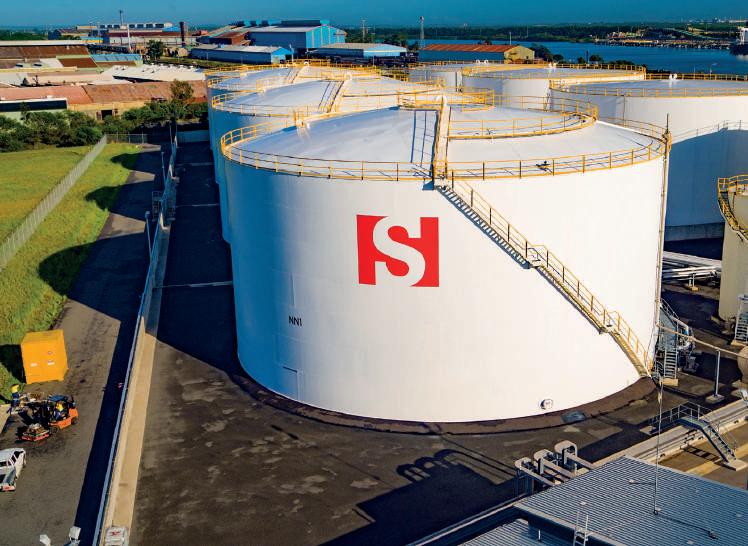
Nevertheless, the positive factors, which included rate escalations and higher revenues from ancillary services at Stolthaven’s US terminals, were offset by lower utilisation at the Newcastle terminal in Australia, the devaluation of the Brazilian real, and the sale of the Houston-based rail transport business in April 2019.
Stolthaven’s first-half operating profit decreased by $8.4m to $37.7m as a result of higher depreciation costs after the completion of a new jetty in Houston, accelerated depreciation of certain assets in Australasia and lower equity income from joint ventures, as well as the 2018 partial recognition of a one-time fee for the early termination of a land lease in New Zealand. This was partially offset by lower property tax expenses and the $0.7m million gain on disposal of the rail transport business.
Equity income from joint ventures decreased by $10.5m to just $11.1m for the six months to end May 2019, largely as a result of lower equity income from the joint venture with Oiltanking in Antwerp, Belgium in 2019, owing
to lower utilisation. In addition, the figures for first half 2018 had been boosted by the positive impact of one-time items, including the reduction in net deferred tax liabilities of $8.2m and a customer penalty fee of $1.6m.
Niels G Stolt-Nielsen, CEO of Stolt-Nielsen Ltd, says the second-quarter results were “in line with expectations” although he is optimistic about the near-term outlook. “We expect continued gradual improvement in performance as a result of a strong US market combined with terminal expansions and enhanced operational efficiencies.”
Reflecting that optimism, Stolt-Nielsen continues to invest in its Stolthaven assets. During the first half of this year, new capacity was commissioned at its fully owned terminals in Santos, Brazil (15,900 m³) and Dagenham, UK (746 m³). In addition, 164,600 m³ of new capacity was added at the 50/50 joint venture Jeong Il Stolthaven Ulsan terminal in South Korea. Furthermore, new jetties in Houston and Newcastle have begun operations.
At the end of the second financial quarter, Stolthaven’s global terminal capacity stood at 1,718,328 m³, 0.4 per cent below the year earlier total.
Stolthaven Terminals currently has ongoing expansion projects in four countries. The Dagenham terminal in the UK has another 1,000 m³ under construction and due for completion by the end of Stolt’s financial year on 30 November. At New Orleans, 47,700 m³ of new capacity is due onstream in two phases over the course of 2020. A 5,612-m³ expansion in New Zealand is due for completion in third quarter 2020, while later this year a 27,000m³ expansion is due for completion at the Stolthaven Westport terminal in Malaysia, in which Stolt-Nielsen has a 49 per cent interest.
Storage capacity in New Zealand will decrease by 30,277 m³ in 2020 as a result of non-renewal of the 2022 land lease contract and beginning of restoration of the property in Wynyard. The small (4,510-m³) terminal in Altona, Australia, which serves the local petrochemical complex, is currently listed as held for sale; the divestment is expected to be completed in the third quarter of this year. HCB www.stolt-nielsen.com
ENTERPRISE PRODUCTS PARTNERS is to expand export capacity at the Enterprise Hydrocarbon Terminal (EHT) on the Houston Ship Channel by some 1.3m bpd to facilitate the export of LPG, polymer-grade propylene (PGP) and crude oil.
“We are pleased to announce this additional investment in our Houston Ship Channel marine terminals,” says AJ ‘Jim’ Teague, CEO of Enterprise’s general partner. “Our integrated midstream system, including our Houston Ship Channel terminal, is providing Texas products with access to the highest value markets, including international markets. These projects utilise the latest technology to modify and expand existing facilities and represent a very efficient use of capital with attractive returns. A key driver and catalyst to make these additional investments in our Houston Ship Channel complex is clarity and certainty provided by recent legislation signed into law by Governor Abbott that ensures two-way traffic along the Houston Ship Channel.”
Enterprise estimates that US crude oil exports will increase from around 3.0m bpd currently to some 8.0m bpd by 2025 and that LPG exports will double to 2.8m bpd. “Much of this is being driven by increasing [oil and gas] production from the Permian Basin of Texas,” the company notes, pointing to a greater need for export capacity along the Gulf coast.
Current LPG loading capacity at EHT is some 600,000 bpd and Enterprise is already engaged in expanding that by 175,000 bpd, with work expected to be completed late in the third quarter. It has now announced a further 260,000 bpd expansion, which is expected to be in service in the third quarter of 2020, taking total LPG export capacity up to almost 1.1m bpd.
Enterprise is also adding refrigeration facilities for PGP at the terminal, in response to what it says is “recorded demand for PGP by international markets”. The work will expand loading capacity by 67,200 bpd and will also increase flexibility by offering customers the option of co-loading fully refrigerated PGP
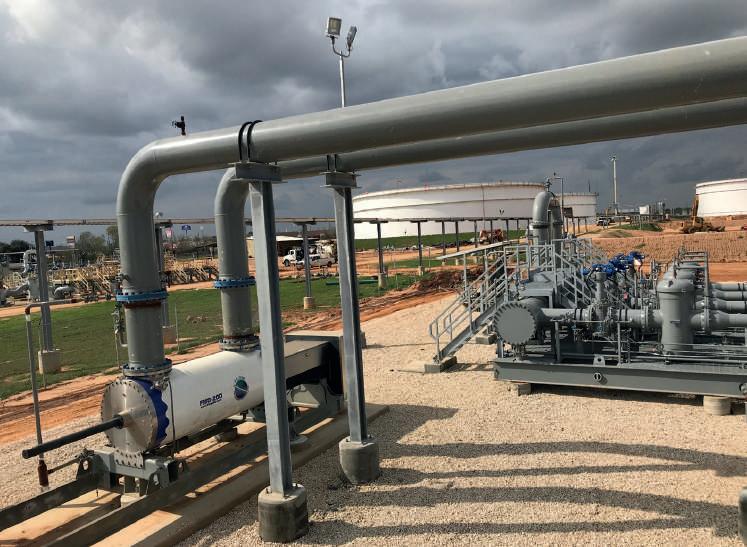
and LPG onto the same vessel. The work is due for completion late in 2020.
Enterprise is also adding an eighth dock at EHT, which will be able to load some 840,000 bpd crude oil and expanding total crude oil loading capacity to 2.75m bpd. The new dock, which will be capable of handling Suezmax tankers (the largest that can navigate the Houston Ship Channel), is due to come into service late in 2020.
Separately, Enterprise is continuing with work to add to ethylene export capacity in Morgan’s Point on Galveston Bay. The new terminal, a joint venture with Navigator Holdings, will have the capacity to export some 2.2bn lb (1m tonnes) of ethylene per year and is due to begin service in fourth quarter 2019. To serve the terminal, Enterprise is repurposing a storage well at its Mont Belvieu complex just east of Houston, which will be able to hold 600m lb (272,150 tonnes) of ethylene, with work due for completion in the third quarter this year.
Teague notes that US ethylene production is expected to exceed 100bn lb per year (45.4 mta) by 2025 and that Enterprise is well placed to offer enhanced access to domestic and international markets. HCB www.enterpriseproduct.com
EXPORTS • ENTERPRISE PRODUCTS PARTNERS IS TO EXPAND ITS HOUSTON FACILITIES TO HELP US PRODUCERS GET THEIR LPG, PROPYLENE AND CRUDE OIL TO OVERSEAS MARKETS
NUSTAR ENERGY ANNOUNCED this past May that it had signed a definitive agreement to sell its St Eustatius terminal, located in the Caribbean Sea south-east of the Virgin Islands, to Prostar Capital for some $250m.
Speaking at the time of the announcement, Brad Barron, president and CEO of NuStar Energy, said: “It has become increasingly clear in recent months that the facility requires a new business model to ensure its long-term success and that NuStar’s best path forward is to sell the terminal to a buyer that is wellpositioned to take advantage of the changing global crude oil trade flow patterns.”
Australia-based Prostar Capital has invested more than $400m of equity capital in
infrastructure projects since its formation in 2012, and has experience in the bulk liquids storage sector through its ownership of Fujairah Oil Terminal (FOT) and GTI Fujairah in the UAE, which together operate more than 1.5m m³ of storage capacity.
The sale of the St Eustatius terminal follows on from NuStar Energy’s divestment of its European bulk liquids terminal operations to Canada-based Inter Pipeline in November 2018 for some $270m. Both sales were driven by a need to reduce debt and a desire to have funds available for growth projects in what Barron describes as “our core business in North America”.
“Last year, we simplified our structure and eliminated the incentive distribution rights, minimised our need to access the equity capital markets, strengthened our coverage and improved our debt metrics. We also divested our non-core European assets at an attractive multiple, which allowed us to meet our three-year debt metric goal in a single year,” Barron said.
“In 2019, we are focused on continuing to improve our debt metrics, maintaining our strong coverage and executing on the great projects we have for our Permian Crude System and our Permian-driven opportunities like our Corpus Christi export facility projects, as well as our many other projects across our diverse asset base, including our bio-fuel infrastructure projects all along the West Coast,” he added.
The Corpus Christi export terminal, due into service in the third quarter, will rely on pipelines being built by NuStar and other interests to bring Permian Basin crude oil to the Gulf Coast. “By early 2020, approximately 2.1m additional barrels of long-haul crude pipeline capacity from the Permian to Corpus Christi will be placed into service, which should bring the total capacity of Permian crude pointed at the Port of Corpus Christi up to about 2.6m bbl and make the Port the number one crude export outlet in the US,” Barron says.
In addition, the “ripple effects” from increased production in the Permian Basin, as well as volumes from other shale plays, has given NuStar the opportunity to restart its unit train offloading facilities at its terminal in St James, Louisiana. “As the US is shifting from a net importer to a net exporter of crude, so too is St James’ role shifting,” says Barron. “We have been maintaining the optionality and connectivity of our St James facility so we can participate in the region’s evolution, and we have the facilities and the expansion capacity to capitalise on that opportunity.” HCB www.nustarenergy.com www.prostarcapital.com

HOWARD ENERGY PARTNERS (HEP) has completed two significant bulk liquids terminal expansions at its Texas facilities, taking its aggregate US Gulf Coast terminal capacity to 2.6m bbl (410,000 m³). In addition, HEP now offers three ship docks, three barge docks, unit train loading capacity for up to two trains per day, and direct pipeline connectivity through wholly owned pipelines to seven refineries.

“The substantial expansions at our Port Arthur and Corpus Christi facilities signify HEP’s commitment to designing and constructing fully engineered facilities that are tailored to meet the exact needs of our customers,” says Brad Bynum, co-founder and president of HEP. “We currently have more than 470 acres for additional Gulf Coast expansion projects, including significant water frontage. We will continue to work closely with our customers to understand their needs and evaluate growth projects that create beneficial results for all participants within the supply chain.”
THE WORK IN DETAIL HEP has expanded the Port Arthur terminal (right) from four tanks to 12, taking capacity up to 1.35m bbl (215,000 m³), and added four butane bullets with a total capacity of 360,000 gal (1,360 m³). In addition, the work added two barge docks and one ship dock, and a 6.5-mile (10.5-km) bi-directional pipeline.
Following the work, HEP can blend gasoline with up to six separate components at delivery rates of up to 40,000 barrels per hour, to meet specific regional and international quality specifications. “This allows customers to optimise the value of the molecules specific to each market,” HEP says.
HEP acquired a majority interest in the Port Arthur terminal, which sits on the SabineNeches Waterway, in 2015. Initially configured to transfer crude oil from rail tank cars to barges for transport along the Intracoastal Waterway, HEP has changed the terminal to focus on refined products as well as crude oil and condensate.
At the Corpus Christi terminal, work is focusing on enhancing rail loading capacity following a new contract with an existing customer to load unit trains for transport to Mexico. As part of that contract, HEP is assisting with EPC oversight of a new receiving terminal in northern Mexico. Once
completed, the link will be able to delivery some 35,000 bpd refined products to locations in central Mexico, including the cities of San Jose Iturbide and Irapuato.
HEP’s Corpus Christi terminal facility currently consists of six tanks with 480,000 bbl (76,300 m³) of storage capacity, ship dock capable of handling MR product tankers, a 12-inch pipeline with connectivity to six local refineries, and unit train loading facilities capable of loading one unit train per day. The terminal can be expanded up to 2.5m bbl (400,000 m³) of total storage capacity and is currently permitted for immediate expansion up to 1.2m bbl. Additionally, HEP and the Port of Corpus Christi jointly funded the engineering and permitting of a new Suezmax dock, which will allow the movement of refined products, crude oil, condensates, NGLs, and LPGs.
HEP’s terminal assets in Texas complement its gathering and processing activities across the US. In May this year, it significantly expanded crude oil and natural gas gathering infrastructure through its joint venture with WPX Energy in the Delaware Basin in west Texas and southern New Mexico. HCB www.howardenergypartners.com
it is even responsive if the user is wearing gloves and in rough conditions frequently found in industrial locations.
THE NON-DESTRUCTIVE TESTING (NDT) market was changed by the introduction of Eddyfi’s Gekko and the latest generation provides even more benefits to the user, the company says. After listening to the functionality requests from inspectors and users, the team behind the Gekko developed upon the strengths of its forebear to create a device able to provide the most in-depth defect tests.
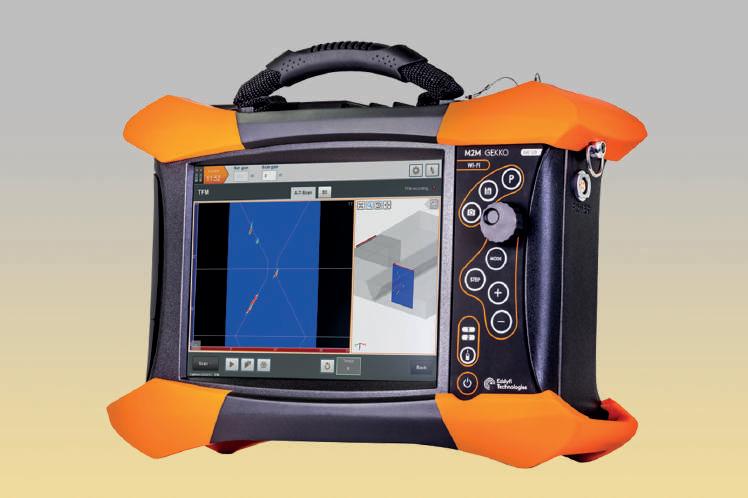
The latest Gekko unit can be used in processes such as weld inspection, defect characterisation, corrosion inspection, hightemperature hydrogen attack early detection and more. From spot welds to corrosion mapping and rail axle testing to boiler tubes, the range of application that the Gekko can excel at is extensive.
The main change that the original Gekko brought to the market was providing embedded real-time total focusing method (TFM) in addition to beam-forming phased array and conventional ultrasonic testing (UT) technology through a modern intuitive software interface. Following on from this, the latest incarnation of the Gekko is equipped with the most up-to-date hardware to provide higher firepower and channel sensitivity.
The usability of the Gekko has also been improved for this latest incarnation, not least by installing the longest-lasting battery in its class – up to six hours in normal use. Thanks to detailed reports from users, the device touchscreen has been altered to become more sensitive and brighter, and
“When it comes to complex geometry integrity assessment and early detection, inspectors want a flaw detector that’s easy to interpret in a rugged and portable system designed for field use,” says Guillaume Neau, director of products and applications at M2M, one of the Eddyfi Technologies brands. “After receiving valuable feedback from our clients, we innovated the M2M Gekko to deliver superior performance with enhanced data and reporting so that operators can get the job done better and faster. The high resolution TFM is now offered with up to 128 elements and three encoded axes for the most comprehensive defect characterisation like slag, LOF cracks, porosity, HIC, SOHIC, SCC, HTHA, corrosion and more – taking guesswork out of the process. The M2M Gekko is the expert code compliant solution for the inspection of girth welds (CS, DMW, CRA etc), nozzles, long-seam welds (ERW) and other types of welds.”
Upgrading its data management capabilities, the latest Gekko is equipped with a 256 GB SSD and a new USB 3.0 connector allowing highspeed file transfers and wireless compatibility for data or screen sharing. The phased array ultrasonic testing (PAUT) is available in 32:128PR, 64:64PR or 64:128PR configurations with Eddyfi claiming that this Gekko is now the most versatile advanced PAUT field unit on the market. Furthermore, the new IP68 LEMO encoder connector enables the Gekko to be fully robust and compatible with most standard scanners. Additionally, the 3.0 Capture software includes scan plan features, high resolution TFM inspection, an improved adaptive inspection feature and plenty of Capture release abilities.
The new Gekko combines the advantages of a multiplexed portable equipment able to cover important areas and to drive multiple phased array probes for advanced inspection and fulfil all standard weld procedures while maintaining its TFM and expertise capabilities. HCB www.eddyfi.com
AUTONOMOUS ROBOTS ARE rapidly finding an important role in the hazardous chemicals supply chain. Their ability to undertake highly detailed work in dangerous environments not only provides the necessary data to provide solutions but to do so without risk to human life.
Over the past few years technological advances in robotics and data capture have accelerated, enabling new innovations and expanded capabilities when it comes to tank inspections and tank bottom integrity evaluation. In one recent example, Phillips 66, Square Robot and Veritank collaborated
to successfully develop, construct and deploy an autonomous robot that safely performed its first in-service inspection of the interior of an aboveground diesel storage tank ahead of wider industry use.

“The Phillips 66 team, beginning with their investment in December 2016, has helped Square Robot deliver on its commitment to build autonomous robots to safely inspect tank interiors,” says Square Robot co-founder Eric Levitt.
The new robot can automatically survey and map obstacles within a tank – while the tank remains in service – to create a specific route map allowing maximum coverage of the tank floor. Using the non-destructive testing (NDT) data gathered, a certified inspector will produce a floor thickness map allowing for a more accurate prediction of a tank floor’s remaining life.
The new design by Square Robot – a young company started by three robotics experts specifically to address the growing need for swimming autonomous robots for oil and gas applications – has received National Electric Code Class 1, Division 2 (C1D2) certification. The importance of this certification is that it allows inspections to occur while the tank is in service and filled with product. The savings in both time and money can be huge if there is no need to empty a tank each time an inspection is due.
“We continue to find immense value in being able to better understand the internal condition of our tanks while they remain in service,” says Todd Denton, general manager, midstream operations, at Phillips 66. “We see numerous applications for this service and look forward to its continued deployment across our portfolio.”
Clint Collins, CEO of Veritank, adds: “The ongoing collaboration with the Phillips 66 team of inspection and safety experts has been invaluable during the testing and qualification phase. As we launch and commercialise this new service offering, it is paramount that we maintain our focus on safety and install robust deployment processes while continuing to find new ways to provide value-added services to tank owners and operators.”
Veritank is a wholly owned subsidiary of Square Robot, established in 2018 to provide robotic in-service tank inspections of aboveground storage tanks. Veritank brings together state-of-theart autonomous robots and experienced inspection professionals to ensure safe access, inspection and value to tank owners and operators.
Development of the tank inspection robot is ongoing, opening up new application possibilities. “In the next phase of development, we will deliver a system certified for C1D1 operations, allowing in-service inspections of lower flash point liquid storage tanks, such as crude and gasoline,” explains Levitt. HCB www.phillips66.com www.squarerobots.com www.veritank.com
Bluewing Midstream has started work on a 330,000-bbl (48,000-m3) expansion of its refined products terminal in Brownsville, Texas (above). Completion of the work, due late this year, will take total capacity at the site up to 1.1m bbl (175,000 m3).
“We are very excited to break ground on our Phase II expansion project and continue to build upon our existing operations,” says Bluewing CEO Todd Reid. “Phase II will allow us to advance our strategic organic development vision while continuing to provide flexible and efficient terminal and logistics solutions to our customers.”
Formed in 2015 and backed by Energy Spectrum Capital, Houston-based Bluewing’s Brownsville terminal serves southern Texas, Mexico and other international markets, offering bulk liquids storage, blending, heating and transloading.
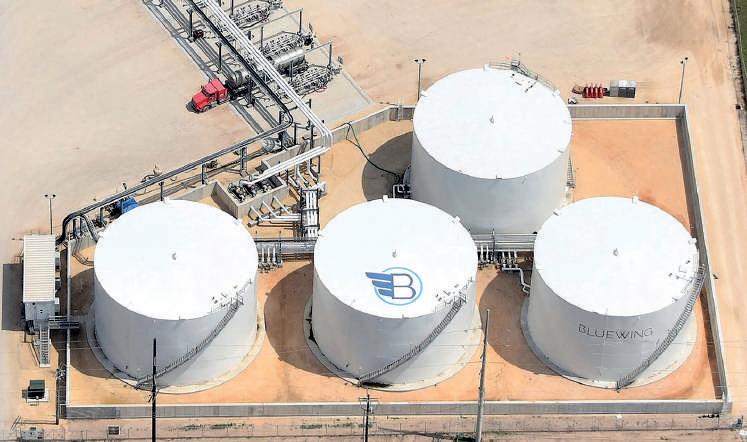
www.bluewingmidstream.com
Lindsay Goldberg has completed the sale of its 49 per cent shareholding in Odfjell Terminals
US to funds managed by Northleaf Capital Partners. “We welcome Northleaf as our new partners in the US, and look forward to further develop our US business together with them and our new CEO for the US terminals, John Blanchard, and his team,” a statement from Odfjell reads.
“As a global leader in bulk liquid transportation and storage, the partnership with Odfjell is very appealing to us,” says Jamie Storrow, Northleaf’s managing director.
“In addition, the assets of Odfjell Terminals US represent an excellent investment opportunity due to the strength of the underlying market fundamentals, their diversified customer base and a highly competitive market position.”
www.odfjell.com
Martin Midstream Partners has sold its natural gas storage interests northern Louisiana and Mississippi to Hartree Cardinal Gas, a subsidiary of Hartree Bulk Storage, for $212m. The caverns have some 50bn ft3 of working capacity between them. Ruben Martin, president/CEO of Martin Midstream, says:
“Our agreement to sell the natural gas storage assets is an important piece of the partnership’s strategy to strengthen the balance sheet and refocus our operational expertise on the refinery services industry.”
That strategy was established last year, with a commitment to reduce leverage through the divestment of non-core businesses, which included an interest in an LPG pipeline in west Texas and a non-strategic terminal in Nevada. Combined net proceeds of some $283m have been put to pay down debt.
martinmidstream.com
ANOTHER GREENFIELD IN ANTWERP Standic has announced plans to build a new storage terminal in Antwerp with an initial capacity of 95,000 m3. The €200m project, due to open in early 2021, will be designed to handle a wide range of chemicals in tanks varying in size from 500 to 3,500 m3. There is the potential to expand the site to as much as 230,000 m3
“The Port of Antwerp is known as one of the largest maritime clusters in the world, which is why we chose it for our expansion,” says Ronald Ooms, managing director of Hametha, Standic’s parent company. “We aim to build on our success with chemical storage and further expand it. In Antwerp we will be able to further develop in the niche market of more specialised chemicals and serve our customers from all over the world.”
“The new Standic terminal will further boost the synergy between the various industrial companies in the port, thus helping to make logistic operations and processes even more cost-efficient,” says William Demoor, customer relations manager at the Port of Antwerp. “Furthermore, the location is ideal for multimodal access, a key factor for sustainable distribution of chemicals.”
Standic currently operates some 230,000 m3 of tank storage capacity in Dordrecht, the Netherlands, for chemicals, biofuels and base oils. www.standic.com
The Ridley Island Propane Export Terminal (RIPET) in British Columbia, Canada (right) has formally opened for business; the first shipment departed the terminal on 23 May bound for Asia. RIPET is a joint venture between AltaGas (70 per cent) and Royal Vopak and the first dedicated propane export facility in Canada.
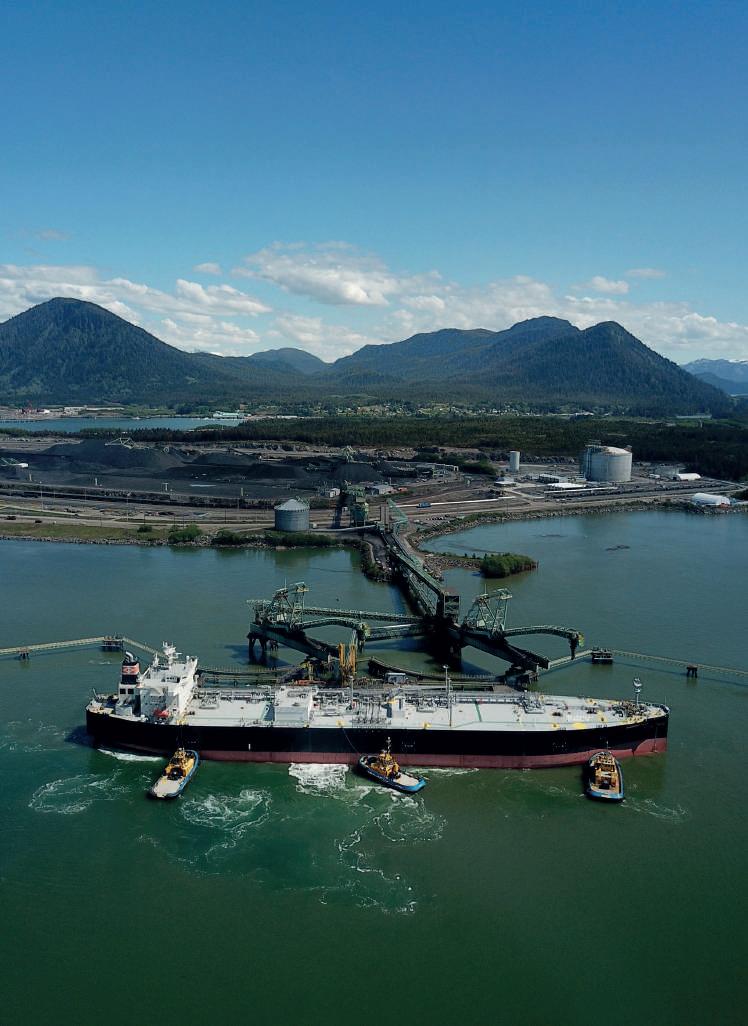
“We are very excited about this important milestone in our good and strategic partnership with AltaGas,” said Eelco Hoekstra, CEO of Vopak, at the opening ceremony. “AltaGas is a well-respected Canadian company with experience in developing energy projects, while storage and handling of gas is an important strategic focus area for Vopak. This export facility opens market access for western Canadian producers to Asia, a premium market for propane.”
“The completion of this game-changing project and the shipment of our first cargo are historic milestones for AltaGas, as well as for our project partners, customers, local Indigenous Peoples, surrounding communities, and western Canada’s upstream energy sector,” said Randy Crawford, AltaGas’ president and CEO. “With RIPET now operational, we can offer producers a uniquely complete solution for their propane, providing premium netbacks and market optionality, while also positioning AltaGas to profitably grow our midstream footprint – a true win-win for AltaGas and our customers.”
RIPET has begun work with a capacity of 90,150 m3 in four tanks, included one refrigerated tank of 89,200 m3. It offers railcar unloading refrigeration of pressurised LPG and loading onto gas tankers up to VLGC size. It is designed to ship up to 1.2m tonnes per year of LPG to Asian buyers, with Japan’s Astomos Energy having lined up to take 50 per cent of that volume.
www.altagas.ca/ripet
Aberdeen Standard Investments has acquired UK terminal operator Oikos Storage from Challenger Life Company, via its SL Capital Infrastructure fund. “We consider Oikos as a key strategic partner for its customers, offering emission efficient infrastructure for the import and onward distribution of its stored product
through having unique access to pipeline connections and a newly developed deepwater jetty,” says Dominic Helmsley, head of economic infrastructure at ASI.
Located 60 km east of London on the Thames estuary, Oikos Storage offers more than 300,000 m3 of tank storage and is the only independent terminal to be connected to the national pipeline networks. www.oikos.co.uk
LBC Tank Terminals has sold its share in the Shanghai terminal to its joint venture partner,
Cosco Shipping, subject to government approval. A statement from LBC says: “This divestment will allow LBC to focus on the extensive expansion projects currently underway in Europe and the USA as well as several other potential projects in the LBC expansion portfolio. LBC wishes to thank the local Shanghai team and wish them all the best for the future.”
The Shanghai terminal, located in Pudong New Area near the mouth of the Yangtze River, offers 74,000 m3 of liquids storage capacity in 62 tanks. www.lbctt.com
AIRSAFE TRANSPORT TRAINING PO Box 347
Cloverdale, WA 6985, Australia
T (+61 8) 9277 6968 www.airsafe.com.au
Dangerous Goods by Air –Acceptance
• August 26-28 – Sydney
• September 11-13 – Adelaide
• September 24-26 – Perth
• September 30-Oct 2 – Darwin
• October 23-25 – Perth
• October 28-30 – Melbourne
Dangerous Goods by Air –Refresher
• August 29 – Sydney
• September 10 – Adelaide
• September 19 – Perth
• October 3 – Darwin
• October 8 – Perth
AMSA Full Acceptance (IMDG)
• August 30 – Sydney
• September 9 – Adelaide
• October 4 – Darwin
• October 21-22 – Perth
AMSA Full Acceptance –Refresher
• August 30 – Sydney
• September 9 – Adelaide
• September 17 – Perth
• October 4 – Darwin
AITAC PO Box 146
Riddell’s Creek, VIC 3431, Australia
T (+61 3) 5428 6077 www.aitac.com.au
Sea Transport of Dangerous Goods
• September 2-3 – Tullamarine
• September 30-Oct 1 –Tullamarine
Sea Transport of Dangerous Goods – Recertification
• October 2 – Tullamarine
Air Transport of Dangerous Goods
– Acceptance, Initial
• September 16-17 – Tullamarine
• October 21-22 – Tullamarine
Air Transport of Dangerous Goods – Recertification
• September 9 – Tullamarine
• October 3 – Tullamarine
Dangerous Goods Driver Licence
• September 14-15 – Tullamarine
• October 12-13 – Tullamarine
Westfield Office Tower, Suite 403, Level 3, 152 Bunnerong Road Eastgardens, NSW 2036 Australia
T (+61 2) 9314 3055 www.afif.asn.au
Dangerous Goods Acceptance (Air)
• September 3-5 – Sydney
• September 16-18 – Brisbane
• September 17-19 – Melbourne
• October 14-16 – Brisbane
• October 15-17 – Sydney
• October 22-24 – Melbourne
Dangerous Goods Re-certification (Air)
• August 26 – Brisbane
• September 2 – Sydney
• September 16 – Melbourne
• September 23 – Brisbane
• October 14 – Sydney
• October 21 – Brisbane
• October 21 – Melbourne
Dangerous Goods by Sea – Full Acceptance
• September 11-12 – Brisbane
• October 9-10 – Brisbane
Dangerous Goods by Sea –Recertification
• August 27 – Brisbane
• September 23 – Melbourne
• September 24 – Brisbane
• October 10 – Sydney
• October 22 – Brisbane
• October 25 – Melbourne
Shipping Lithium Batteries by Air
• August 20 – Sydney
• September 24 – Melbourne
4 Corporate Drive, Bldg. 4, Suite D Cranbury, NJ 08512, USA
T (+1 609) 860 0300
www.bureaudg.com
• August 21-22 – Dayton, NJ
• September 18-19 – Dayton, NJ
IATA Recurrent Training
• August 21 – Charlotte
• August 28 – Dayton, NJ
• September 11 – Dayton, NJ
IATA & IMDG Initial Training
• August 21-23 – Dayton, NJ
• September 18-20 – Dayton, NJ
49 CFR Initial Training
• August 19-20 – Dayton, NJ
• September 16-17 – Dayton, NJ 49 CFR 1-Day Recurrent Training
• August 20 – Charlotte
• August 27 – Dayton, NJ
• September 10 – Dayton, NJ IMDG Recurrent Training
• August 22 – Charlotte
• August 23 – Dayton, NJ
• August 29 – Dayton, NJ
• September 12 – Dayton, NJ
• September 20 – Dayton, NJ CAMEON PO Box 17345 Edinburgh EH12 1DJ, UK T (+44 131) 334 1929 www.cameon.com
Dangerous Goods by Air
• October 7-9 – Manchester Dangerous Goods by Air –Revalidation
• September 20 – Manchester Dangerous Goods by Road and Sea
• September 17-19 – Manchester Dangerous Goods by Road –Upgrade
• October 10 – Manchester Dangerous Goods by Sea –Upgrade
• October 11 – Manchester Dangerous Goods Safety Adviser
• September 2-6 – Manchester
• November 11-15 – Manchester
CANADIAN INTERNATIONAL FREIGHT FORWARDERS ASSOCIATION (CIFFA)
170 Attwell Drive, Suite 480 Toronto, Ontario M9W 5Z5, Canada T (+1 416) 234 5100 www.ciffa.com
Air Dangerous Goods, Initial
• September 10-12 – Toronto
October 1-3 – Montreal
October 1-3 – Vancouver
Air Dangerous Goods, Recurrent
• September 11-12 – Toronto
• October 2-3 – Montreal
• October 2-3 – Vancouver
CERTIFIED PACKING & TRAINING
17820 Englewood Drive, Units 14-17 Cleveland, OH 44130, USA T (+1 440) 826 9292 www.certpack.com Ground and Air (initial)
• September 18-19 – Cleveland
• November 20-21 – Cleveland Ground and Air (recurrent)
• September 17 – Cleveland
• November 19 – Cleveland Ground and Vessel (initial)
• September 18/20 – Cleveland
• November 20/22 – Cleveland Ground and Vessel (recurrent)
• September 17 – Cleveland
• November 19 – Cleveland Multimodal (initial)
• September 18-20 – Cleveland
• November 20-22 – Cleveland Multimodal (recurrent)
• September 17 – Cleveland
• November 19 – Cleveland
CLASS 7 LTD 9 Irk Vale Drive Chadderton Oldham OL1 2TW, UK T (+44 161) 628 6677 www.class7.co.uk
RamMaster Level 1 – Foundation
• September 17 – Oldham
RamMaster Level 2 – Road Consignment and Transport
• September 18-19 – Oldham
RamMaster Level 2 – Air Consignment Upgrade
• October 1 – Oldham
RamMaster Level 2 – Sea Consignment Upgrade
• October 2 – Oldham
10400 NW 33rd Street, Suite 230 Doral, FL 33172, USA T (+1 305) 871 3313 www.dga4u.com
Initial IATA & HMR Air
• September 9-11 – Doral
• October 7-9 – Doral
Recurrent IATA & HMR
• September 17 – Doral
• October 15 – Doral
IMDG Code & HMR Ocean
• September 16 – Doral
• November 18 – Doral
ADVISORY COUNCIL
7501 Greenway Center Drive, Suite 760
Greenbelt, MD 20770, USA
T (+1 202) 289 4550 www.dgac.org
Multi-Modal Transportation –Initial
• September 16-20 – Las Vegas
• October 7-11 – Houston
Multi-Modal Transportation –Recurrent
• September 12-13 – Las Vegas
• October 31-Nov 1 – Baltimore
European Road Transportation
• October 31-Nov 1 – Baltimore
DGI TRAINING CENTER
1060 El Camino Real, Suite B Redwood City, CA 94063-1645, USA
T (+1 650) 306 8450 www.dgitraining.com
IATA Initial
• August 19-20 – San Francisco
• August 28-29 – Anaheim
• September 23-24 – Phoenix
• October 16-17 – Philadelphia
• October 23-24 – San Francisco
• October 30-31 – Atlanta
IATA Recurrent
• August 20 – San Francisco
• August 29 – Anaheim
• September 9 – Philadelphia
• September 16 – Chicago
• September 24 – Phoenix
• October 17 – Philadelphia
• October 24 – San Francisco
• October 31 – Atlanta
IMDG Initial
• September 19-20 – Chicago
IMDG Recurrent
• August 22 – San Francisco
• August 30 – Anaheim
• September 11 – Philadelphia
• September 18 – Chicago
• October 18 – Philadelphia
• October 25 – San Francisco
Ground Transportation (49 CFR) Initial
• August 26-27 – Anaheim
• October 14-15 – Philadelphia
• October 21-22 – San Francisco
• October 28-29 – Atlanta
Ground Transportation (49 CFR) Recurrent
• August 21 – San Francisco
• August 27 – Anaheim
• September 10 – Philadelphia
• September 17 – Chicago
• September 25 – Phoenix
• October 15 – Philadelphia
• October 22 – San Francisco
• October 29 – Atlanta
Multimodal Initial (49 CFR/IATA/IMDG)
• August 26-30 – Anaheim
• October 14-18 – Philadelphia
• October 21-25 – San Francisco
• October 28-Nov 1 – Atlanta
Multimodal Recurrent (49 CFR/IATA/IMDG)
• August 20-22 – San Francisco
• September 9-11 – Philadelphia
• September 16-18 – Chicago
Ground/Air Shipping - Initial (49 CFR/IATA)
• September 23-25 – Phoenix
Ground/Air Shipping - Recurrent (49 CFR/IATA)
• August 20-21 – San Francisco
• September 9-10 – Philadelphia
• September 16-17 – Chicago
Ground/Ocean ShippingRecurrent (49 CFR/IMDG)
• August 21-22 – San Francisco
• September 10-11 – Philadelphia
• September 17-18 – Chicago
Air/Ocean Shipping – Recurrent (IATA/IMDG)
• August 29-30 – Anaheim
• October 17-18 – Philadelphia
• October 24-25 – San Francisco
• October 31-Nov 1 – Atlanta
Radioactive Materials (Multimodal)
• September 12-13 – Philadelphia
ENGINEERING EQUIPMENT & MATERIALS USERS ASSOCIATION (EEMUA)
2nd floor, 16 Black Friars Lane London EC4V 6EB, UK T (+44 20) 7488 0801 www.eemua.org/Training-andcompetency/ TankAssessor
• September 9-13 – London
• September 30-Oct 4 – Paris
• November 4-8 – Rotterdam TankIntro
• October 21-22 – Manchester
FREMANTLE TRAINING & TRANSPORT Rathmore Lodge Rathmore Road
Torquay, Devon TQ2 6NY, UK T (+44 1803) 293344 www.fremantletraining.co.uk
ADR Driver Training
• September 9-13 – Plymouth
• September 16-20 – Bristol
ADR Driver Training – Tanks & Class 3 Refresher
• September 23-24 – Bristol
• September 25-26 – Plymouth
HAZMATEAM
12 Kimball Hill Road Hudson, NH 03051-3915, USA T (+1 603) 882 1112 www.hazmateam.com
49 CFR Ground Transportation
– Initial
• September 24-26 – Hudson
49 CFR Ground Transportation –Intermediate Refresher
• September 9-10 – Hudson
49 CFR Ground Transportation –Advanced Refresher
• October 10 – Hudson
International Air Shipping – Initial
• August 20-22 – Hudson
• October 1-3 – Hudson International Air Shipping –Refresher
• October 7-8 – Hudson
Transportation of Lithium Metal and Lithium Ion Batteries
• October 24 – Hudson
Water Transportation of Dangerous Goods (IMDG) – Initial
• August 28-29 – Hudson
Water Transportation of Dangerous Goods (IMDG) – Refresher
• September 30 – Hudson Incident Command
• October 18 – Hudson
OSHA Emergency Response Refresher
• September 12 – Hudson
• October 21 – Hudson
OSHA Emergency Response Technician – Initial
• September 16-18 – Hudson
OSHA/EPA Emergency Response
– Initial
• September 16-20 – Hudson
Confined Space Entrant/ Attendant
• September 4 – Hudson
• October 29 – Hudson
Confined Space Rescue
• September 5 – Hudson
• October 30 – Hudson
ICC COMPLIANCE CENTER 2150 Liberty Drive
Niagara Falls, NY 14304, USA
T (+1 888) 442 9628
88 Lindsay Avenue Dorval, QC H9P 2T8, Canada T (+1 888) 977 4834
www.thecompliancecenter.com
Shipping Hazardous Materials by Ground in USA: 1-Day Refresher
• September 17 – Niagara Falls, NY
Shipping Dangerous Goods by Ground in Canada: 2-Day Initial
• October 8-9 – Toronto
Shipping Dangerous Goods by Ground in Canada: 1-Day Refresher
• September 18 – Toronto
• October 8 – Montreal
• October 23 – Toronto
Shipping Dangerous Goods by Ground in Canada: 1-Day Initial/ Refresher
• September 17 – Vancouver
Shipping Dangerous Goods by Air: Initial
• August 21 – Vancouver
• September 18 – Vancouver
• October 23 – Vancouver
Shipping Dangerous Goods by Air: Refresher
• September 18 – Niagara Falls, NY
• September 19 – Toronto
• October 9 – Montreal
• October 24 – Toronto
Shipping Dangerous Goods by Sea using IMDG Code: Initial
• September 19 – Vancouver
Shipping Dangerous Goods by Sea using IMDG Code: Refresher
• October 10 – Montreal
LION TECHNOLOGY 570 Lafayette Road Sparta, NJ 07871-3447, USA
• T (+1 888) 546 6511
• www.lion.com
Multimodal Hazmat Shipper Certification (49 CFR/IATA/IMDG)
• September 10-13 – Houston
• September 16-19 – Dallas
• October 8-11 – San Francisco
• October 15-18 – San Diego
• October 22-25 – Kansas City, MO
• October 28-31 – Detroit
• October 28-31 – Cincinnati
Hazmat Ground Shipper Certification (49 CFR)
• August 19-20 – Louisville
• September 10-11 – Houston
• September 16-17 – Dallas
• September 16-17 – San Antonio
• September 25-26 – Denver
• September 30-Oct 1 – Phoenix
• October 8-9 – San Francisco
• October 10-11 – Las Vegas
• October 15-16 – San Diego
• October 15-16 – Seattle
• October 22-23 – Kansas City, MO
• October 28-29 – Detroit
• October 28-29 – Cincinnati
• October 28-29 – Milwaukee
Hazmat Ground Shipper Certification - Recurrent
• October 15 – Sparta, NJ
Hazmat Air Shipper Certification (IATA)

• September 12 – Houston
• September 18 – Dallas
• September 27 – Denver
• October 10 – San Francisco
• October 17 – San Diego
• October 17 – Seattle
• October 24 – Kansas City, MO
• October 30 – Detroit
• October 30 – Cincinnati Hazmat Vessel Shipper Certification (IMDG)
• September 13 – Houston
• September 19 – Dallas
• October 11 – San Francisco
• October 18 – San Diego
• October 25 – Kansas City, MO
• October 31 – Detroit
• October 31 – Cincinnati
New York Hazardous Waste
Management
• October 28 – Long Island
• October 30 – Albany
California Hazardous Waste Management
• September 23-24 – San Diego
• September 26-27 – Los Angeles
• September 30-Oct 1 – Bakersfield
• October 3-4 – Oakland
Texas Hazardous & Industrial Waste Management
• October 31 – Dallas
• November 6 – Houston
Complete Environmental Regulations
• August 19-20 – Sparta, NJ
• October 23-24 – Orlando
RCRA Hazardous Waste Management
• August 22-23 – Phoenix
• September 9-10 – Minneapolis
• September 12-13 – Cedar Rapids, IA
• September 16-17 – Chicago
• September 18-19 – St Louis
• September 23-24 – Louisville
• September 26-27 – Cincinnati
• September 30-Oct 1 – Indianapolis
• October 3-4 – Milwaukee
• October 17-18 – Atlanta
• October 21-22 – Cleveland
• October 21-22 – Orlando
• October 23-24 – Pittsburgh
• October 24-25 – Detroit
• October 28-29 – Nashville
• October 29-30 – Dallas
• October 31-Nov 1 – Charlotte
RCRA Hazardous Waste Management Refresher
• October 16 – Sparta, NJ
OILSPILL RESPONSE TRAINING
Lower William Street Southampton SO14 5QE, UK
T (+44 23) 8033 1551 www.oilspillresponsetraining.com
Oil Spill Clearance – On-Scene Commander (IMO Level 2)
• September 16-20 – Singapore
• October 7-11 – Southampton
On-Scene Commander –Asia-Pacific (IMO Level 2)
• August 27-29 – Makati
• September 3-5 – Bangkok
• October 15-17 – Kuala Lumpur Oil Spill Response Management (IMO Level 3)
• October 21-24 – Southampton
• October 22-24 – Singapore
• October 29-31 – Cape Town Oil Spill Response Refresher (IMO 1 to 3)
• September 3 – Southampton
Inmark Life Sciences 675 Hartman Road, Suite 100 Austell, GA 30168, US T (+1 800) 814 7484 inmarklifescience.com/ compliance-training/ Shipping Division 6.2 Infectious Substances
• September 18 – Denver
• November 13 – Norfolk, VA
TECHNOLOGY CENTER Security and Emergency Response Training Center PO Box 11130 Pueblo, CO 81001, USA T (+1 719) 584 0584 sertc.org
Tank Car Specialist
• September 9-13 – Pueblo
• October 28-Nov 1 – Pueblo Intermodal Specialist
• October 28-30 – Pueblo
Leadership & Management of Surface Transportation Incidents
• August 26-30 – Pueblo
Tactical Hazardous Materials Operations for Surface Transportation
• September 23-27 – Pueblo
• November 4-8 – Pueblo
AUGUST 13-16, LOUISVILLE Conference for the North American chemical distribution sector https://www.nacd.com/meetings/ce/2019-chemedge/
AUGUST 25-27, SALT LAKE CITY
Semi-annual meeting of the Petroleum Packaging Council http://www.ppcouncil.org/ upcoming-meetings.php
AUGUST 25-28, ATLANTA
Annual conference of the Alliance of Hazardous Materials Professionals https://www.ahmpnet.org/page/ National_Conference
SEPTEMBER 2-4, SINGAPORE
Fifth biennial conference on developments in LNG bunkering www.ibc-asia.com/event/lng-bunkering/
SEPTEMBER 4-6, CHICAGO
14th annual Dangerous Goods Symposium hosted by Labelmaster www.labelmaster.com/symposium
SEPTEMBER 5, BRISBANE
Annual road tanker event hosted by the National Bulk Tanker Association www.nbta.com.au/tankerday/
SEPTEMBER 9-10, HOUSTON
Supply chain meeting for senior-level executives in North America http://logichemus.wbresearch.com/
SEPTEMBER 9-13, NORFOLK
36th annual networking and training meeting sponsored by the Virginia Association of Hazardous Materials Response Specialists www.virginiahazmat.org/annual-hazmatconference/
SEPTEMBER 11, LONDON
Seminar on new markets and technology in the LNG shipping sector https://maritime.knect365.com/lng-shipping/
SEPTEMBER 12, BRUSSELS
Update on Responsible Care implementation in European chemical transport www.ecta.com/event-3253523
SEPTEMBER 17-18, SINGAPORE Conference focusing on cargo liquefaction and containership fires https://maritime.knect365.com/hazardouscargoes-forum/
SEPTEMBER 17-19, HOUSTON
International conference and trade show for the LNG and LPG industries www.gastechevent.com
SEPTEMBER 17-20, ST PETERSBURG
15th biennial maritime exhibition and conference http://dolphin-uk.cergis.com/home/neva/
SEPTEMBER 19-20, HANGZHOU
China’s only dedicated trade show for hazardous chemical risk management http://hcchina.org/en/index.aspx
SEPTEMBER 21-25, ARLINGTON, VA
Biannual meeting of the Society of Chemical Hazard Communication www.schc.org/meetings
SEPTEMBER 22-26, BILOXI
Annual meeting of the Commercial Vehicle Safety Alliance http://cvsa.org/eventpage/events/cvsa-annualconference-and-exhibition/
SEPTEMBER 24-25, KUALA LUMPUR
Annual process safety conference www.icheme.org/career/events/hazardsasia-pacific/
SEPTEMBER 24-26, NUREMBERG
Exhibition on the packaging process chain www.fachpack.de/en
SEPTEMBER 24-26, AMSTERDAM
32nd annual meeting of the World LP Gas Association www.worldlpgforum-aegpl2019.com/
SEPTEMBER 24-27, BIRMINGHAM International material handling and logistics exhibition www.imhx.net
SEPTEMBER 25-26, SINGAPORE
The main annual exhibition and conference for the Asian tank terminal industry www.easyfairs.com/tank-storage-asia2019/tank-storage-asia-2019/
SEPTEMBER 26, COVENTRY
19th annual meeting of the UK Tank Storage Association www.tankstorage.org.uk/ conference-exhibition/
SEPTEMBER 30-OCT 2, NASHVILLE
NTTC’s Annual Tank Truck Show & Maintenance Seminar http://tanktruck.org/events/ events-detail-view/tank-truck-week-2019--september-30---october-2--music-city-center--nashville--tn
OCTOBER 1-3, NAPLES, FL
Annual meeting of the Industrial Packaging Alliance of North America www.industrialpackaging.org/#events
OCTOBER 6-9, BERLIN
53rd annual meeting of the European Petrochemical Association www.epca.eu
6/4/19 Alberton, road tanker One man was killed, another seriously injured when a road tanker exploded as they began welding work at Citizen Gauteng, S Africa warehouse; not clear what had been in the tanker prior to the work but it was apparently not gas-freed
8/4/19 Winslow Township, road tanker gasoline Tank truck exploded on Atlantic City Expressway, reportedly after tyre blowout; thought that sparks from The New Jersey, US exposed rim ignited gasoline vapour; fire extinguished in two hours with some cargo still in tank Inquirer
9/4/19 nr Grootfontein, road tanker sulphuric Kilwe Transport road tanker with acid from Erongo region overturned on B8 after driver lost control; some NAMPA Namibia acid acid spilled, prompting evacuation of area; driver hospitalised
9/4/19 Oregun, road tanker diesel Road tanker overturned after rolling backwards on steep slope; cargo of diesel spilled from tanker, which had Legit.ng Lagos, Nigeria just loaded at nearby NNPC depot; locals reported that tankers often struggle at this point on the road
10/4/19 Karachi, road tanker diesel Road tanker with 60,000 litres diesel overturned on Gulbai Flyover, spilling cargo and bursting into flames; Dawn Pakistan fire spread to other vehicles (perhaps including another tanker), nearby warehouses; no casualties reported
10/4/19 nr Walsall, road tanker fertiliser M6 motorway was closed for several hours after truck ran into rear of tanker carrying 28,000 litres low-hazard Express W Midlands, UK fertiliser; crash caused leak of product from tanker; one driver injured & Star
11/4/19 Oghara, road tanker fuel Driver lost control of tanker while leaving tank farm, having just loaded tanker; witnesses said spark ignited Vanguard Delta, Nigeria fire that engulfed the vehicle; some injuries but no fatalities
13/4/19 Gombe, road tanker gasoline Tanker driver lost control, struck another truck on southern bypass road; both vehicles exploded, spreading Daily Nigeria fire to nearby homes; both drivers killed, along with ten other people; 16 more injured Trust
14/4/19 Owerri, road tanker kerosene Road tanker skidded off road, overturned when driver swerved to avoid pothole; nearby resident rushed to Vanguard Imo, Nigeria collect kerosene spilling from tanker; luckily there was no fire and no injuries were reported
15/4/19 Los Angeles, container vehicles Container with four vehicles, heading to port for export, exploded prior to arrival; thought that flammable Maritime California, US vapour had built up in container, which was ignited when truck drove over speed bump; no injuries reported Executive
16/4/19 nr Osino, truck chemicals Truck had to swerve to avoid car that cut it off on I-80; driver stopped to check load and found that several RSOE Nevada, US 55-gal plastics drums had fallen over, at least one leaking; load included Classes 3, 6.1, 8, medical waste
17/4/19 nr Red Brush, road tanker diesel Tank truck with 7,700 gal (29 m³) diesel from Greensboro overturned on I-74 connector after driver lost Mt Airy N Carolina, US control; tank ruptured, spilling entire load to storm drain; some fuel reached nearby creek, causing fish kill News
18/4/19 Ibadan, road tanker gasoline Road tanker overturned as driver tried to pass a parked taxi; tanker caught fire; flames spread to other This Day Oyo, Nigeria vehicles, killing two people
19/4/19 Mokowe, truck gasoline Fire broke out as gasoline was pumped from container on truck to drums at Mokowe Jetty; thought that Kahawa Lamu, Kenya sparks from generator ignited vapour, which then caused explosion; one person on truck was killed Tungu
21/4/19 Baltimore, freight train diesel Four cars of CSX train, three carrying diesel, one with hexane residue, derailed; one tank car reported to be CBS Maryland, US leaking diesel but spill was contained; rail traffic halted until CSX crew could get cars back onto tracks local
23/4/19 Clayton county, road tanker gasoline QuikTrip tank truck overturned on I-675 after collision with another vehicle; highway was closed while AJC Georgia, US responders dealt with leaking gasoline; one driver suffered minor injuries
24/4/19 Fort Worth, freight train ethanol About 20 tank cars of UP ethanol train derailed near Echo Lake; five tank cars caught fire, which prompted NBC Texas, US evacuations downwind; thunderstorms in area just prior to incident; NTSB investigating DFW
25/4/19 Beach Park, truck ammonia One of two 2-ton tank trailers with anhydrous ammonia sprang leak while being moved to farmland; broad WLS Illinois, US shelter-in-place ordered; 40 people needed hospital treatment, seven said to be critical; NTSB investigating
25/4/19 Atlanta, road tanker hydrochloric Fire crews called to truck stop found leak from tank truck with hydrochloric acid creating gas cloud; parking WSB-TV Georgia, US acid lot was evacuated; cleanup teams offloaded product to another tank truck; no injuries reported
26/4/19 Bragança Paulista, road tanker hydrochloric Road tanker overturned on Benevenuto Moretto highway (SP-95), spilling some 5,000 litres acid to drains; Globo São Paulo, Brazil acid spill reached nearby lake, generating large toxic gas cloud; driver badly hurt
28/4/19 Beitbridge, road tanker LPG Laden LPG tanker heading for South Africa rolled away when driver was checking in at border post, iHarare Zimbabwe overturning car, whose driver was trapped; LPG began leaking; border officers called in fire brigade
29/4/19 Makurdi, road tanker LPG Having delivered gas at filling station, tanker was pulling away when it exploded; two staff at filling station, Guardian Benue, Nigeria five customers were badly burned; cause of explosion unknown (Lagos)
3/5/19 nr Helper, road tanker crude oil Semi with two tanker-trailers with 280 bbl waxy crude rolled over on Highway 191 in single-vehicle incident; Deseret Utah, US some 120 bbl crude spilled, some solidifying in nearby creek; road closed for cleanup News
Date Location Vehicle Type
Substance Details
Source
6/5/19 Niamey, road tanker gasoline Road tanker overturned near Niamey airport, driver claimed electrical failure; locals rushed to collect spilling AFP Niger fuel; spark from motorcycle exhaust caused explosion that killed 55 on the spot; 21 more died later in hospital
7/5/19 Ludhiana, road tanker lubricant Fire broke out on road tanker leaving lube plant after loading at Parkash Chemicals; driver opened manlid to The Punjab, India prevent explosion but blaze spread to drummed chemicals, nearby factories, several vehicles Tribune
8/5/19 Des Plaines, truck alcohol Truck carrying tank of denatured alcohol overturned, leaked product to road; driver was trapped and had to be Daily Illinois, US cut free by fire crews; no fire or other injuries reported Herald
9/5/19 Taylor county, truck peroxide Some 50 gal of unspecified organic peroxide spilled from 250-gal tote at XPO Logistics facility; tote was on Lex18 Kentucky, US truck that had brought it from Nashville for transfer; nearby roads closed, some homes evacuated
10/5/19 Elmendorf, rail tank car residue Two workers killed, four injured by explosion during cleaning of rail tank car at Alamo Junction Rail Park; KSAT Texas, US investigation underway to determine cause of the explosion
Date Location Vessel Substance Details Source
1/4/19 Terneuzen, Chemical petroleum Chemical tanker (14,300 dwt, 2004), with petroleum cargo from Turkey for Antwerp, collided with inland FleetMon Netherlands Marketer passenger vessel Viking Idun in Western Scheldt; both vessels damages, some injuries; no leak of petroleum
5/4/19 Sines, MSC Sandra fuel oil Some 3 tonnes fuel oil leaked overboard during bunkering of containership by tanker Bahia Tres (6,920 dwt, FleetMon Portugal 2007); anti-pollution plan initiated, preventing spread of oil in harbour; cause of spill unknown
22/4/19 off Pascagoula, Aqualoyalty crude oil Tanker (115,600 dwt, 2012), with cargo of crude oil from Colombia, ran aground on Horn Island buoy; FleetMon Mississippi, US vessel refloated same day with tug assistance; no sign of pollution
24/4/19 Riau Islands, Success Tanker (7,900 dwt, 1996), undergoing repairs at Sungai Raya Shipyard, suffered explosion, fire during FleetMon Indonesia Energy XXXII welding; two workers injured; thought that hot work was going on in cargo tanks that had not been gas-freed
8/5/19 off New Caledonia New Beginning nickel ore Bulker (56,100 dwt, 2013), with cargo of nickel ore, developed list as cargo liquefied; vessel turned back to FleetMon load port, Ngo Bay, and anchored with 10-degree list
10/5/19 Houston Ship Genesis River reformate LPG tanker, leaving Houston for Port Said, collided with Kirby tug pushing two barges, each with 25,000 bbl Houston Channel, Texas, US reformate; one barge capsized, other badly damaged; 9,000 bbl reformate leaked, causing closure of Channel Chronicle
18/4/19 Ikorigho, oil well crude oil Fire broke out on idle, plugged oil well at Chevron/NNPC site; Chevron contained fire, boomed area, blamed Today.ng Ondo, Nigeria incident on “third-party interference”; locals said fire was worse than reported and four people had died
20/4/19 Mumbai, chemical chemicals Major fire broke out in chemical factory in Dombivli industrial area; thick black smoke blanketed area around PTI Maharashtra, India plant plant; no injuries reported; cause under investigation
21/4/19 Yenagoa, pipeline crude oil Fire broke out on Aiteo’s Nembe Creek Trunk Line, which supplies crude to Bonny terminal; six people found Indep’t Bayelsa, Nigeria dead at the site presumed to have been engaged in oil theft; line closed, force majeure declared on oil exports (Lagos)
24/4/19 Yidong, chemical VCM (?) Four workers killed by explosion in PVC workshop of Dongxing Chemical plant; spherical tank (possibly with Beijing I Mongolia, China plant vinyl chloride) was isolated by fire crews; authorities monitoring environmental impact, starting investigation Youth D’y 24/4/19 nr Cottonwood, pipeline diesel Some 8,400 gal (32 m³) diesel leaked from hole in Magellan Midstream’s 8-inch line; some spilt fuel reached Star Minnesota, US drainage ditch; about 75 people involved in response Tribune
29/4/19 Sebring, propane propane Fire broke out at Kosan Crisplant facility, which refurbishes and refills propane tanks; several explosions sent WFLA Florida, US supply shop tanks flying through the air; 17 homes across the street were destroyed; plant manager injured in explosion
6/5/19 Berezniki, fertiliser ammonia
Three workers killed by explosion in ammonia unit at Uralchem fertiliser plant; incident happened during Xinhua Perm, Russia plant maintenance work; investigation opened into potential safety violations
8/5/19 Laverton North, logistics hydrofluoric Drum found to be leaking acid during destuffing of container at Toll Global Logistics facility in west side of The Age Vic, Australia facility acid Melbourne; seven people needed hospital treatment after breathing fumes

10/5/19 Bogotá, factory gunpowder Four people died, 29 injured by explosion at factory that produces wicks for explosive targets used in the game AFP Colombia of turmeque; blast happened in area where gunpowder is handled; cause under investigation
10/5/19 Collins, storage gasoline Fire broke out in gasoline storage tank at TransMontaigne tank farm after tank was struck by lightning; WDAM Mississippi, US terminal fire crews, site team brought fire under control in six hours; damage to be repaired
12/5/19 Tarapur, chemical chemical Three workers died after unidentified chemical overflowed during filling of tank, causing reaction; identity of Indian Maharashtra, India plant facility in Boisar industrial area not given Express
INVESTIGATION • THE DEATHS OF FOUR WORKERS AT A DUPONT PLANT IN TEXAS IN 2014 WERE DOWN TO POOR DESIGN, POOR PLANNING AND AN INADEQUATE SAFETY CULTURE
THE US CHEMICAL Safety Board (CSB) has identified several safety management shortcomings that led to a release of methyl mercaptan at DuPont’s plant in La Porte, Texas in November 2014 that killed four workers. As is often the case, there are numerous root causes but, CSB says, put together they indicate a flawed engineering design and a lack of adequate safeguards.
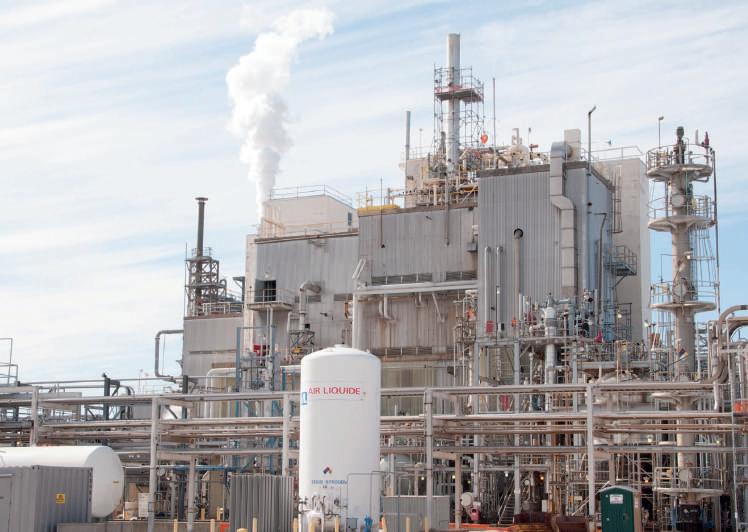
“Our investigation revealed a long chain of failures which resulted in this fatal event, including deferring much needed process improvements - improvements that could have prevented the toxic release,” says Dr Kristen Kulinowski, CSB’s interim executive.
The incident happened while plant personnel were trying to clear a blocked pipe outside the
manufacturing building. They identified what they took to be an unrelated pressure problem within the building and two men went to drain liquid from piping. Unfortunately they found the cause of the pressure problem and nearly 24,000 lb (10.9 tonnes) of methyl mercaptan leaked from the piping, filling the building with toxic vapour. Both men died, as did two of four other workers who went into the building to help.
“Contributing to the severity of the incident were numerous safety management shortcomings, including deficiencies in formal process safety culture assessments, auditing and corrective actions, and troubleshooting operations,” says Tamara Qureshi, CSB’s lead investigator.
The Board identified weaknesses in the site’s safety management system, which failed to generate a strong safety culture.
Its investigation report notes that, while DuPont had created its own corporate process safety management system, it was not effectively implemented at the La Porte site; nor did the plant formally evaluate its process safety culture prior to the incident.
CSB’s report makes a number of other pertinent observations:
The emergency response efforts at the La Porte facility were disorganised and placed operators, emergency responders and potentially the public at risk.
“Chemical plants need a robust emergency response programme to mitigate emergencies and protect the health of workers, emergency responders and the public,” the report says.
DuPont’s corporate process safety management system did not identify, prevent, or mitigate significant process safety deficiencies at the La Porte facility that contributed to the incident.
“A company must effectively implement a process safety management system and its corresponding programmes to reap the accompanying process safety benefits.”
The site’s bonus structure may have disincentivised workers from reporting injuries, incidents and near misses.
“Ensuring that employees can report injuries or incidents in accordance with regulations, without fear of discrimination, retaliation, or other adverse consequence, is central to protecting worker safety and health, and aiding accident prevention,” CSB says.
CSB’s report makes a number of recommendations to the La Porte site, although it has closed since the incident. Rather worryingly, many of the recommendations relate to very basic issues, notably the lack of equipment and technology that should be available at any high-hazard site to help in preventing or dealing with a major incident.
CSB also recommended that the local branch of the International Chemical Workers Union Council work together with DuPont to develop and implement the recommended emergency response plan; this recommendation should be regarded as valid for any similar facility. HCB
AN INDUSTRIAL SITE needs to dispose of scrap metal shavings. The safety data sheet (SDS) lists the metal as non-hazardous. An empty container is located, washed out, and filled with the scrap. This container is sealed and shipped out.
A homeowner is trying to unblock their bathroom sink. They pour some drain cleaner down, but the problem remains. They find a different drain un-blocker, which guarantees results. They follow the instructions and pour this down the drain as well.
A one-litre bottle of concentrated hydrochloric acid is being moved out of a warehouse. It is dropped in the yard outside, spilling about half its contents. The area is cordoned off and
a worker sources a gastight suit to clean the spillage up.
On paper, each of these people has acted correctly. They have consulted the safety data sheet (SDS) and followed the suggested safety precautions. They have sought out information and, as a result, have felt armed to deal with the incidents.
The saying ‘knowledge is power’ is true when dealing with chemical incidents. In recognition of this, the National Chemical Emergency Centre (NCEC) has worked with its customers to build a database of the most up-to-date SDS for each of their products.
This allows immediate access to information about almost any chemical in an incident that NCEC assists with. However, it also recognises that generic chemical information will only take you so far.
As it continues on its journey, the container sits in the back of a lorry, unobserved as it starts to bulge.
The second cleaner appears to be working, as it does some bubbles start to appear.
Everybody is a safe distance away, except for the person cleaning up the spill. Although the suit makes it difficult to open the package of absorbent material and cover the spill, they are completely safe, as they take their time.
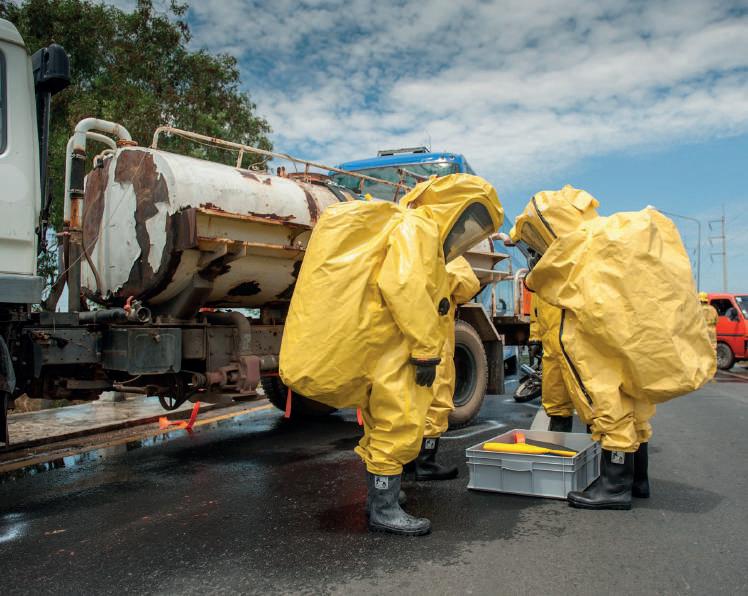
NCEC was set up in 1973 after a wellmeaning person moved to help in a chemical incident and sadly lost their life. It was determined that this should never happen again, and that there needed to be somewhere that responders could refer to in order to obtain the help and support to safely deal with chemical incidents.
Since that time, technical skills and understanding in the world of chemical safety have grown and changed. Through the internet, SDS and manufacturer information is now more readily and quickly accessible. Despite this, NCEC is currently receiving more calls than ever before.
As the container continues to bulge, the pressure builds until it ruptures and spills explosive gas, which finds a spark. The driver is left standing at the side of the road, watching his vehicle burn and wondering what went wrong.As the drain cleaner does its work, a pungent, irritating odour develops. Having been in the bathroom for some time, they start to feel light-headed. Their last thought before losing consciousness is confusion over what has gone wrong, as they followed the instructions.Our cleaner steps back and removes their protective suit. They are tired and dehydrated from being in the suit, but happy that the spillage has been cleaned up safely. However, work has been delayed by the clean-up, and they feel that
there must have been a way to do this safely, but more quickly.
These are the areas in which NCEC has developed to assist. We do not simply provide an SDS or read out generic information to callers. Rather, we question the caller, locate and assimilate the information and then provide detailed, specific advice, tailored to their particular situation. We use the skills and experience that we have developed in over 45 years of service, as well as the knowledge and abilities of our team of experienced, highly trained chemists. Their analysis and bespoke advice includes the areas that fall ‘between the lines’ of the SDS.
The incidents described above involved scrap metal disposal, mixed cleaning products and spill remediation. If called, we could have provided advice that would have helped deal with all of these situations safely. Sometimes this might be escalating the response and making a caller aware of unrecognised hazards. Other times this would be providing a sense of perspective that would curb the level of response, and therefore reduce the cost of managing the incident.
How would NCEC have been able to help in these incidents?
Ferrous metals are traditionally thought of as being fairly unreactive: a solid lump is unlikely to do anything more exciting than rust. Once broken down into small particles, such as dust or scrap shavings, this can change. Whilst ferrous metals in a sheet or block format would not be classed as hazardous for transport, shavings of ferrous metals may need to be classified as spontaneously
combustible material (UN class 4.2). If consulted we would explain that, due to the greatly increased surface area, this metal is now likely to be combustible and will react with water to produce hydrogen, a flammable gas. This gas will evolve and, in a sealed container, increase the pressure until it ruptures, creating a possibly explosive atmosphere.
Drain cleaners should never be mixed; a number of the different chemicals commonly used can react together. Common drain cleaners include sulphuric acid and sodium hypochlorite, which will react to produce chlorine, a toxic, corrosive gas. In a confined space such as a bathroom, this can easily build up to produce a hazardous environment. If consulted, we would review the SDS and ingredient lists for the two cleaning products and not only advise whether they are likely to react with each other, but also indicate the nature and the level of hazard of the likely product.
In a situation where only a very small amount of a hazardous chemical has been spilt in a wellventilated area, it may be possible to downgrade
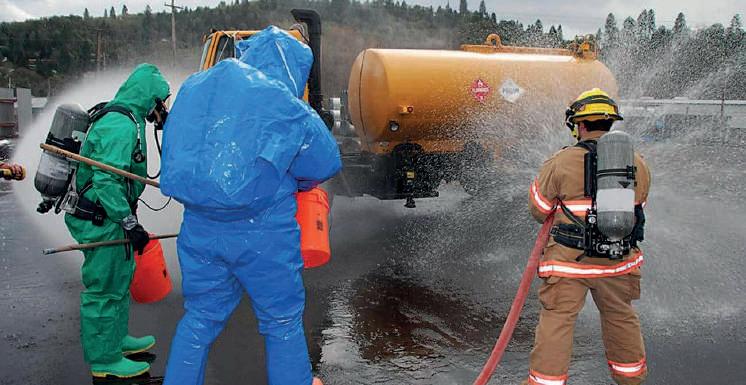
the response, perhaps a lower level of PPE with a procedure in place to mitigate the risk. We would be able to discuss this with the caller, help with the risk assessment and talk through the process of safely and efficiently cleaning the spillage.
Specific advice is superior to generic information. It allows anybody to approach an incident and safely deal with whatever they are confronted with. This is what NCEC offers: the sense checking of product information and the provision of detailed advice, including tactical advice tailored to precise circumstances, and taking full account of the skills and abilities of the recipient. This level of consideration and detail is key to maintaining safety throughout the supply chain.
NCEC works with organisations globally facing a wide range of chemical safety and regulatory challenges, both on site and within their downstream supply chain. To find out how NCEC could support the improvement of your chemical supply chain resilience, visit www.the-ncec.com, email ncec@ricardo.com or call +44 (0) 1235 753654. HCB

power and a need for the tools that can make their job easier.
THOSE WHO ARE subject to the provisions of the dangerous goods and hazardous materials transport regulations work in a dynamic world. The regulations, standards and expectations of customers, regulators, enforcement bodies and the public change from year to year – even from day to day, responding to current events – and it is a constant battle for those involved in regulatory compliance to keep up with those changes.
There are any number of ways in which those charged with compliance can keep their knowledge current, but one of the best ways is to attend the Annual Forum of the Council on Safe Transportation of Hazardous Articles (COSTHA), which always does a good job of corralling experience from the regulatory and enforcement agencies and attracts a hefty crowd from around the world, eager for the opportunity not only to hear from senior officials but also to talk to their peers and discuss the problems and issues they face.
Equipment and service suppliers are likewise keen to take the opportunity to put their wares in front of an audience with buying
All these interests made the trek to Long Beach, California this year for COSTHA’s 2019 Annual Forum, held from 7 to 11 April at the Hyatt Regency. Familiar faces from all sides mingled with industry tyros in the exhibition hall, conference rooms, training sessions and networking opportunities. Business was done, information was offered and accepted, and all involved left the event better equipped to do their jobs – to ensure the safe and compliant movement of dangerous goods, by all modes, anywhere in the world.
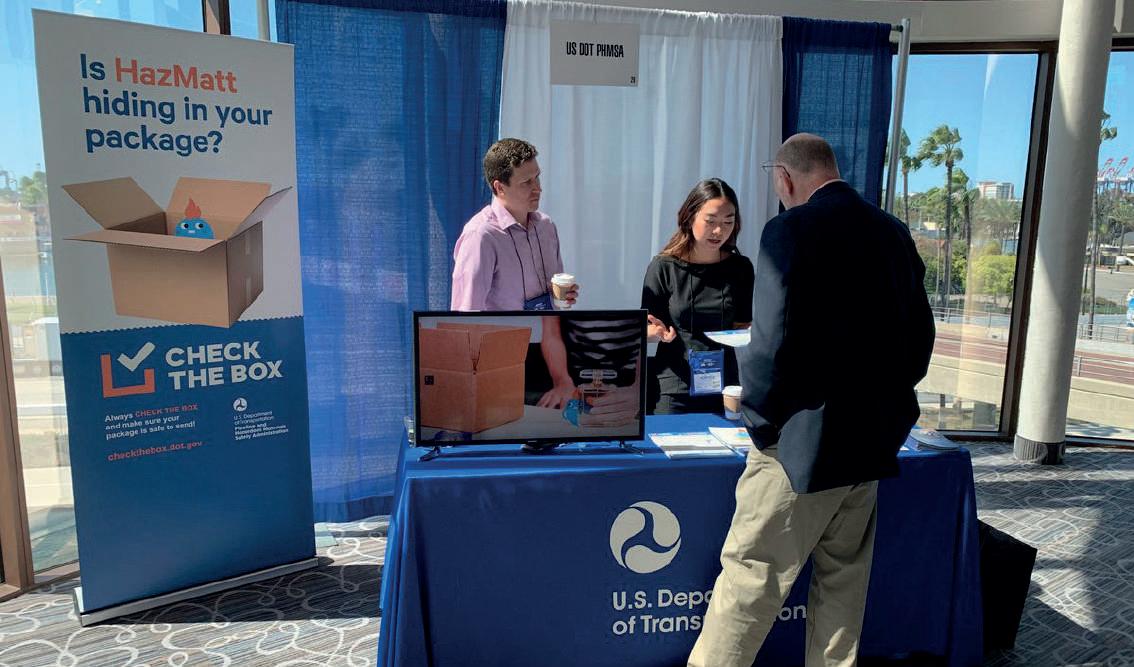
COSTHA’s Annual Forum is arranged over five days, with much of that time devoted to training sessions, working groups and committee meetings. Those who wanted to sit the exam for the Certified Dangerous Goods Professional (CDGP) qualification were invited to turn up on Saturday afternoon, while the whole of Sunday and Monday were given over to all matter of training sessions, roundtables and breakout meetings. It was only on Sunday
REPORT • THIS YEAR’S COSTHA’S ANNUAL FORUM FOLLOWED RECENT TRADITION IN PROVIDING DELEGATES WITH A WEALTH OF INFORMATION ON GLOBAL HAZMAT REGULATION
evening that everyone got together, at the notto-be-missed networking event.
By Tuesday morning the exhibition area had opened to visitors and, after a networking breakfast, delegates were welcomed by COSTHA president Dave Madsen, regulatory compliance specialist at Autoliv, before moving on to the North American briefing session. This gave COSTHA’s audience, who are largely, though far from overwhelmingly, focused on North American operations, the chance to hear from knowledgeable speakers from Canada, the US and Mexico.
They were greeted by a familiar face: Benoit Turcotte, director general of the Transportation of Dangerous Goods Directorate at Transport Canada (TC). He gave the audience a brief introduction to the structure of TC and the rulemaking process in Canada, which is somewhat different to that with which US hazmat professionals are faced, before moving on to discuss some current regulatory amendments.
The adoption of the updated TC standard TP 14877 on containers for the transport of dangerous goods by rail is ongoing. The 2018 edition of the standard was developed by a wide range of stakeholders as well as Canadian and US authorities, and was published in January 2018. The plan was to have this version of the standard referenced in Canada’s Transportation of Dangerous Goods (TDG) Regulation, with entry into force having subsequently taken place on 2 July.

The revision to TP 14877 takes into account a number of Protective Directions issued by the government since the Lac-Mégantic accident in July 2013, as well as new tank construction and equipment standards, and amendments drawn from the 19th revised edition of the UN Model Regulations, and aligns more closely with US provisions, particularly in areas such as tank car approvals and one time movement approvals (OTMAs).
TC is also continuing to make improvements to the Emergency Response Assistance Plan (ERAP) requirements. The latest changes respond to recommendations from the Emergency Response Task Force (ERTF) and broaden the scope of applicability. There are also updates and clarifications to the existing information. The proposals were
published in Canada Gazette Part I on 30 June 2018 and TC received 23 comments, largely positive. Subsequent to the COSTHA event, the amending regulations were published in Canada Gazette Part II on 1 May and will come into force on 1 March 2020.
A larger rulemaking is under way that will make a lot of changes to Part 12 of the TDG Regulations, which deals with the transport of dangerous goods by air. To a large extent the changes will bring Canadian rules up to date with international provisions and will include dynamic references to UN classification. The proposals also include provisions to amend other parts of the TDG Regulations to reduce regulatory barriers to cross-border trade between Canada and the US, including road and rail transport.
So far, the provisions relating to air transport have undergone two phases of consultation and TC is attempting to accelerate the passage of the required legislation so as to avoid any further delay to harmonisation. Web-based consultation on the other harmonisation issues was undertaken in the second quarter of this year and it is hoped that final proposals can be published in Canada Gazette Part I some time late in 2020.
TC is also proposing amendments to the training requirements in Part 6 of the TDG Regulations that will, inter alia, adopt job-specific competency-based training and assessment (CBTA) requirements. This will rely on a CBTA standard being available; the Canadian General Standards Board (CGSB) is working on it and publication of the proposals in Canada Gazette Part I is targeted for spring 2020.
A broader rulemaking currently under development aims to update and modernise the packaging requirements, harmonise with international and US provisions, and include dynamic references to relevant CGSB standards. A web-based consultation took place between December 2016 and February 2017 but development of the draft regulation is ongoing; TC is engaging with industry to work on some more complex parts of the draft and is aiming to have a final version available for consultation in third quarter 2020.
Another piece of work for TC is development of a Client Identification Database, an inventory of regulated stakeholders and their activities. It is hoped that the availability of such information in a structured form will assist TC in fulfilling its objectives in terms of outreach to industry and its risk-based TDG oversight regime. Consultations were held in 2017 and 2018 and TC continues to explore potential digital solutions.

Turcotte also brought delegates up to speed with the work of the joint Canada-US Regulatory Cooperation Council (RCC), which has already made a lot of progress in terms of reciprocity in the recognition of pressure receptacles and approvals and in harmonised standards for rail tank cars. Canada, the US and Mexico are currently working on the 2020 text of the Emergency Response Guidebook (ERG 2020) and Canada is also collaborating with the US in the development of a standard for electronic shipping documents.
There is a lot going on in Canada these days, but not so much in the US, where the political atmosphere has turned against new regulation. Instead, Shane Kelley, director of
the Standards and Rulemaking Division of the Office of Hazardous Materials Safety within the Pipeline and Hazardous Materials Safety Administration (PHMSA), led his presentation with news about PHMSA’s Regulatory Reform Task Force, which is considering methods to accomplish the Department of Transportation’s (DOT) primary safety objectives in ways that are less burdensome to the regulated community.
PHMSA is currently undertaking a structured review of all existing regulations, petitions for rulemaking and active rulemakings, as well as special permits and approvals. In this process it is also drawing on input from stakeholders and from other government departments. The process is also informing much of the current rulemaking activity, although it is noticeable that proposals are coming out of Washington very slowly these days.
Indeed, the final rule under HM-215O, necessary to maintain harmonisation (insofar as is deemed desirable) with international regulations that took effect on 1 January 2019 has yet to appear. A notice of proposed rulemaking (NPRM) was published on 27 November 2018 and comments closed on January 28 this year.
Similarly, an NPRM under HM-219C, which involves PHMSA’s response to petitions to remove regulatory burdens, was under review at the time of the COSTHA meeting and was expected to appear in the spring, but has so far failed to emerge. Likewise, an NPRM under HM-264, which responds to a petition for rulemaking from the Association of American Railroads (AAR) to allow the transport of LNG in rail tank cars, is still held up; PHMSA has opened the topic up for comment but, after pressure from Congress, has extended that comment period.
More successful were two rulemakings responding to mandates from government. Under the terms of the Federal Aviation Administration (FAA) Reauthorisation Act of 2018, PHMSA issued an interim final rule under HM-224I on 6 March, with proposals to introduce tighter restrictions on the transport of lithium ion cells and batteries by air; these included a prohibition on their carriage as cargo on passenger aircraft, a specification that they should be shipped on cargo aircraft at no more than 30 per cent state of charge, and a limitation of one package per consignment or overpack. The comment period closed on 6 May and a final rule is currently in preparation.
The Fixing America’s Surface Transportation (FAST) Act of 2015 delivered several mandates to PHMSA; one of those resulted in a final rule under HM-251B published on 28 February, that revises and clarifies the requirements for comprehensive oil spill response plans and requires railroads to share information about high-hazard flammable train operations with state and tribal emergency response commissions.
Kelley finished his presentation by assuring the audience that PHMSA is looking towards the future and considering how autonomous vehicles can be fitted into the hazmat regulations. He also alerted them to a new initiative designed to reduce the number of hazardous materials inadvertently or unknowingly put into the transport chain and aimed primarily at individuals and infrequent shippers. A list of common hazardous materials is presented at ChecktheBox.dot.gov.
Dan Hankinson, program manager, Mopar product regulatory compliance at FCA US, and Rodolfo Koria, technical consultant at COSTHA, provided an update on the work of the Mexico Working Group, which is identifying opportunities to enhance regulatory alignment between Mexico and the US, Canada and UN; Hankinson and Koria are both members of the leadership and technical team of the Working
Group, which was formed in 2015. It has recently been approved to participate in the work of the National Consultative Committee on Regulation for Transport of Hazardous Materials, which is currently working on a revision of NOM-002 to bring Mexico’s land transport regulations into line with the latest edition of the UN Model Regulations. This is due for publication this year.
The Mexico Working Group is also trying to persuade the Mexican government to remove the provision that requires dangerous goods to be shipped separately from regular cargo, and to keep its relevant regulations in line with the international provisions. There is going to be some relaxation of the separation requirement, at least for goods shipped as consumer commodities or under the excepted quantity provisions.

Making sure that delegates got their money’s worth, COSTHA had arranged that the mid-morning break would be followed by a meeting of the Canada Working Group and then by focus group sessions over lunch, with the audience returning to the conference tables after that for the afternoon’s international regulatory briefing. That included a presentation from Diego Gotelli on developments south of Mexico, from the point of view of the Centro de Informacíon Quimica para Emergencias (Ciquime), which provides the 24-hour emergency response information across the region. »

Those who had seen Gotelli speak on the same subject at earlier COSTHA Annual Forums may have had a slight sense of déjà vu: while almost all countries in Latin America and the Caribbean apply the latest edition of the International Civil Aviation Organisation’s (ICAO) Technical Instructions and the International Maritime Organisation’s (IMO) International Maritime Dangerous Goods (IMDG) Code, the situation in terms of land transport is fractured. Most countries in the region apply the provisions of the UN Model Regulations, but not all the same edition, while some countries apply ADR for their domestic rules – but, again, not all the same edition.
Indeed, Gotelli reproduced a slide he had shown at the 2016 COSTHA Annual Forum (in Clearwater, Florida for those who remember their COSTHA meetings by location rather than date). At that time, Argentina and Paraguay were still using the 7th revised edition of the UN model regulations, while Uruguay was on the 12th, Brazil on the 15th and Chile had applied the 17th revised edition. Some progress has now been made but, while
Brazil and Chile have updated to the 19th revised edition, Argentina, Paraguay and Uruguay are still using the 17th.
Those differences are supplemented by the problems that arise in cross-border road transport for vehicles moving from a country that applies the ADR provisions, particularly in terms of placarding and the use of orange-coloured plates, and a country that bases its rules purely on the UN Model Regulations. Gotelli used as an example a consignment of packaged phosphorus oxychloride (UN 1810) from San Antonio, Texas to Buenos Aires, Argentina using the Pan-American Highway and a ferry across the Darien Gap. He calculated that, depending on the actual route taken, this would involve four changes of placards and plates and six different formats of emergency cards, as well as a copy of ERG2016 and a safety data sheet. To complicate matters, the product is classified as Division 6.1 over around half the distance, and as Class 8 for the remainder. The potential for fines for getting it wrong is immense.
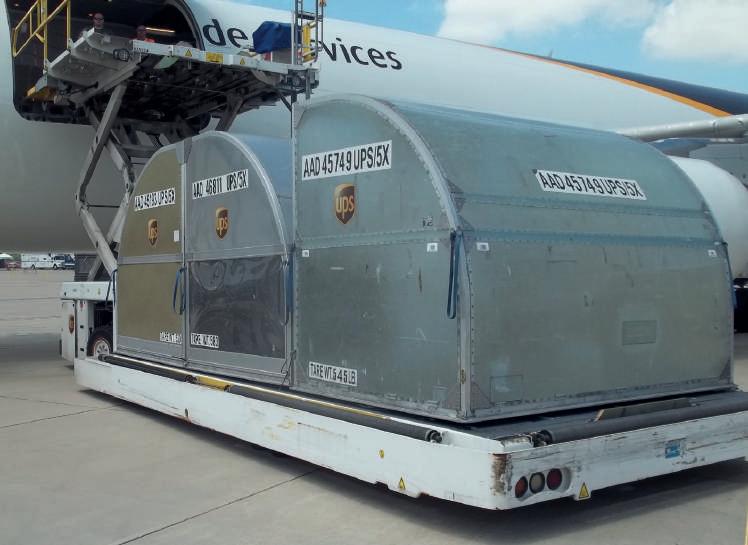
To summarise, Gotelli said that this level of disharmony, especially when combined with inadequate transport infrastructure across much of the regions and a lack of information exchange, leads to inadequate safety in the transport of dangerous goods.
An important part of the international briefing for many of the delegates at the COSTHA event is the presentation on regulations in China, which was given this year by Zeng Jia, divisional director at the Department of Transportation Service in China’s Ministry of Transport (MOT). Zeng illustrated the size of the national dangerous goods sector: there are around 11,500 enterprises involved, operating 375,000 vehicles and moving 1.2bn tonnes of product a year – numbers that are all increasing rapidly.
MOT’s current approach to improving safety in the transport of dangerous goods within China aims to address two areas of weakness: firstly in the construction standards and inspection of tank vehicles, and secondly in the accuracy of shipment filing and management. MOT wants to fully implement a dangerous goods document management system, and to bring China closer into alignment with international standards for the exemption of dangerous goods moved in limited quantities. More generally, China is moving rapidly to harmonisation with the UN Model Regulations.
China’s government has come to realise that the current situation, under which various responsibilities in terms of the management of dangerous goods transport regulations are spread across six different ministries and bodies, is unhelpful in terms of generating a consistent set of rules, and it is gradually moving these various responsibilities under a single umbrella. The volume of inspection and authorisation activities is being stepped up, and training and examinations are being tightened.
In addition, Zeng reported, China is opening up more to overseas interests. The first joint-venture transport enterprise, involving domestic and foreign cooperation, was approved by MOT in 1988; in 2014 the responsibility for approving foreign investment in road transport was delegated to provincial bodies and, as of 2018, that approval of foreign investment is based on the same national standards that apply to local companies.
The other important area ‘abroad’ for North American delegates is, of course, Europe,
and COSTHA’s senior technical consultant Julie Prescott reported on the recent activities of the RID/ADR/ADN Joint Meeting, which aims to ensure the greatest possible level of consistency between the regulations governing the transport of dangerous goods by rail (RID), road (ADR) and inland waterway (ADN). COSTHA has had observer status at the Joint Meeting since 2017, allowing it to track upcoming changes in European legislation and bring forth proposals for amendment that may be beneficial to its members.
There were four current topics to discuss, according to Prescott. The first, harmonisation with the UN Model Regulations, did not need to be covered as the latest amendments had been discussed elsewhere. But the Joint Meeting is also busying itself with issues to do with electronic information exchange, the use of e-learning systems and the mutual recognition of pressure receptacles between the US and EU.
That last topic has proved difficult to resolve. In Europe there is a multilateral
special agreement that allows the reexport of US DOT pressure receptacles, providing that those receptacles are filled in accordance with US regulations and they are marked and labelling in accordance with Chapter 5.2 of RID/ADR/ADN. However, there is as yet no similar special permit or approval in effect in the US; this is something that the European Industrial Gases Association (EIGA) and its US counterpart, the Compressed Gas Association (CGA), are working on, a move that COSTHA supports. HCB

The second part of this report on the COSTHA 2019 Annual Forum in next month’s HCB will cover the remaining presentations, relating to the international regulatory bodies, the domestic US modal authorities and issues such as cargo securement, best management practices, postal services and preparing for inspections. Meanwhile, COSTHA has confirmed that the 2020 Annual Forum will take place in Greenville, South Carolina from 26 to 29 April. Full information can be found at www.costha.com.

THE INTERNATIONAL MARITIME Organisation’s (IMO) Marine Environment Protection Committee (MEPC) and Maritime Safety Committee (MSC) have recently agreed a series of amendments to the International Code for the Construction and Equipment of Ships Carrying Dangerous Chemicals in Bulk (IBC Code) that are expected to enter into force on 1 January 2021.
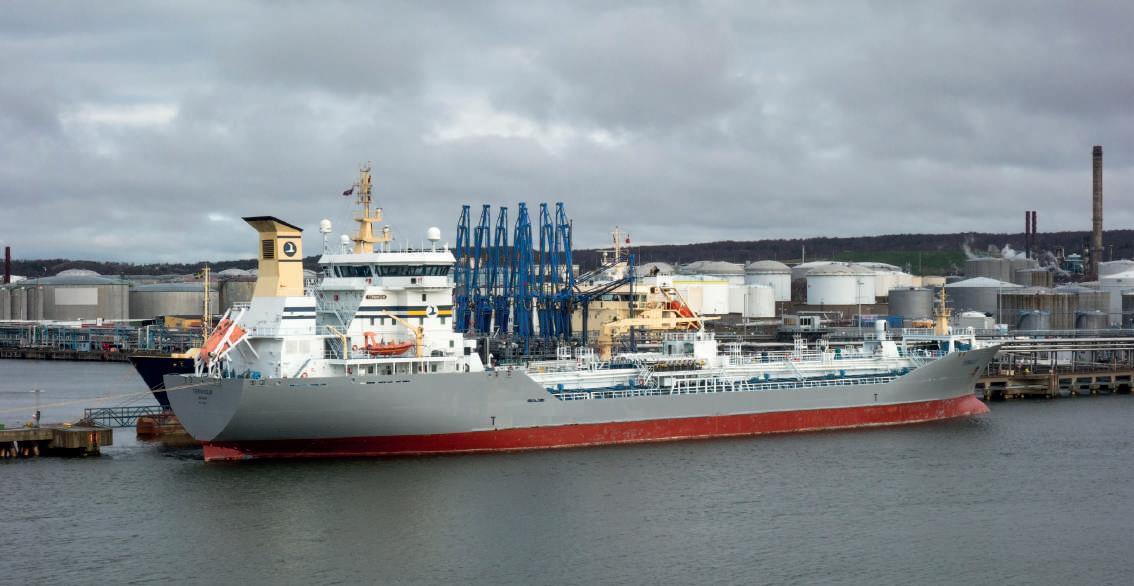
The revisions affect Chapters 17 (the summary of minimum requirements), 18 (the list of products to which the Code does not apply), 19 (the index of products carried in bulk) and 21 (the criteria for assigning carriage requirements for products subject to the Code).
These revisions, which followed on from lengthy work by the various sub-committees and the Group of Experts on the Scientific Aspects of Marine Pollution (GESAMP) were
formally adopted by MEPC at its 74th session in May and by MSC at its 101st session in early June.
The International Parcel Tankers Association (IPTA) provides this brief summary of the impact of the revisions: “Chapter 21 of the IBC Code, which sets out the criteria for the assignment of carriage requirements, has been extensively amended to ensure that measures imposed are appropriate for the degree of hazard posed by individual products. Chapters 17 and 18, which list the carriage requirements for products, have been revised to take into account the new criteria, as well as some revised GESAMP Hazard Profiles. While there had initially been some concern that a number of high-volume products could result in Ship Type 1, that has not been the case. The most significant effect of the changes will be a steep increase
in the number of products classed as Toxic, with the various requirements that such a classification brings.”
The changes to the IBC Code are, in fact, quite extensive. Milbros Shipping notes that the handling and safety requirements will change for 86 per cent of the 845 products listed in Chapters 17 and 18. While most changes can be considered insignificant, Milbros warns that some cargoes that have been listed on a ship’s certificate of fitness (COF) may no longer be allowed to be carried. Milbros has already updated its online tool to reflect the changes.
In addition, the number of cargoes identified as ‘toxic’ in Chapter 17 will rise from 231 to 429. New additions to the list of toxic products include some commonly carried cargoes such as methanol, methyl isobutyl ketone (MIBK), diethylene glycol, nonyl alcohol, n-propyl alcohol and octanol.
Substances subject to the requirements for toxic production bring with them specifications for the location of exhaust openings, the provision of vapour return lines and pressure/vacuum valves, and stowage restrictions (specifically, not adjacent to fuel tanks). There is concern in the sector that the
addition of some high-volume products (most notably methanol) to the list will result in an effective loss of cargo capacity in the fleet.
Other changes have been occasioned by an amendment to Annex II of the International Convention for the Prevention of Pollution from Ships (Marpol), resulting from numerous reports of residues of high viscosity and persistent floating substances washing up on beaches in northern and western Europe. New paragraphs will be added to Regulations 13 in Annex II to require prewash and discharge of residue/water mixture generated during the prewash to a reception
facility, for 44 specific products, in specified areas (north-west Europe, Baltic Sea, western European waters and Norwegian Sea). Those products are certain vegetable oils and paraffin-like cargoes that have a high viscosity and/or a high melting point. They will be indicated in column o of chapter 17 of the IBC Code, referencing a new paragraph 16.2.7 in the Code.
During IPTA’s Chemical and Product Tanker Conference in London in March, delegates were alerted to the fact that IMO is keeping an eye on this topic; if the problem of waxy residues washing up on beaches persists, then another 80 products may be added to the list.
MSC also adopted a consolidated edition of the International Maritime Solid Bulk Cargoes Code (IMSBC Code), Amendment
05-19. The new edition includes a number of revised schedules, including an important change in the new individual schedule for bauxite fines as a Group A cargo. While these changes too are expected to enter into force on 1 January 2021, governments may apply them in whole or in part from 1 January 2020.
Somewhat further ahead are amendments to parts A and A-1 of the International Code of Safety for Ships using Gases or other Low-flashpoint Fuels (IGF Code), which are expected to enter into force on 1 January 2024. These include regulations on loading limits for liquefied gas fuel tanks, regulations for fuel distribution outside of machinery space, regulations for internal combustion engines of piston type and fire protection for fuel storage hold space, and amendments relating to the protection of the fuel supply for liquefied gas fuel tanks, aimed at preventing explosions. HCB

UPDATES • HAZMAT PROFESSIONALS IN THE US ARE USED TO REGULAR UPDATES BUT THESE DAYS NEED MORE HELP THAN EVER. LION TECHNOLOGY HAS THE TOOLS TO KEEP THEM CURRENT
reliefs) for facilities that generate and store hazardous waste, including but not nearly limited to:
• Completely re-organised regulatory text in 40 CFR Part 262;
• Expanded marking and labeling requirements for containers; and
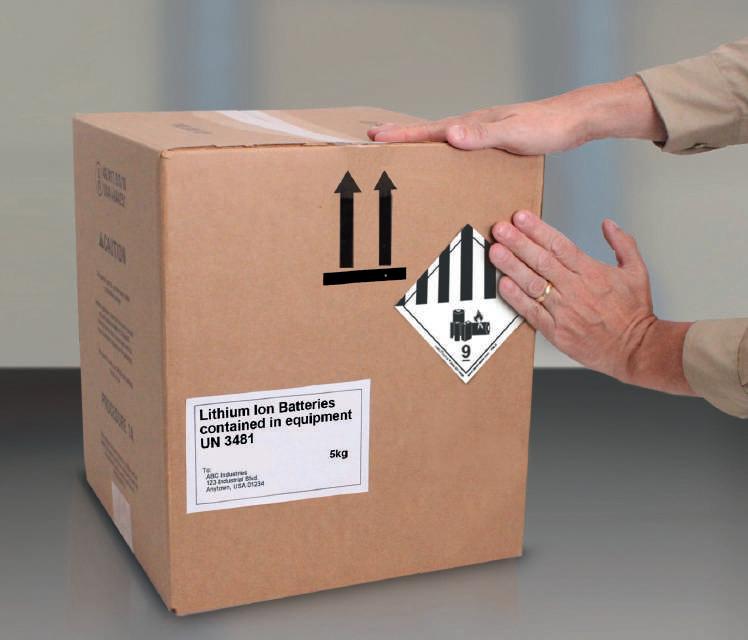
• Bolstered reporting, recordkeeping, and contingency plan rules.
The Generator Improvements Rule represents the most significant changes made to US hazardous waste regulations since the 1980s—changes that US EPA estimates will impact nearly 700,000 facilities nationwide when all is said and done.
As of this writing, approximately half of US states have adopted some or all of the new requirements into their state-level regulations. The remaining states are prepared to incorporate the changes in 2020 and early 2021. For organisations with facilities in multiple states, this presents the challenge of keeping track of when and where the new rules take effect.
To help EHS professionals grasp the landmark RCRA updates and take the steps needed to comply, Lion Technology recently overhauled its nationwide hazardous waste workshops, online programs, and live webinars to incorporate the new regulations and call attention to areas that are now stricter than before. Lion also tracks the latest state adoption initiatives and updates professionals in its weekly e-newsletter.
today are expected to take on more responsibility than ever before. Where in the past the roles of environmental, safety and hazardous materials compliance were spread across an organisation, increasingly those responsibilities rest on the shoulders of fewer and fewer individuals, even in large firms.
From hazardous materials/dangerous goods shipping to hazardous waste management, air and water compliance, environmental reporting, emergency preparedness, workplace safety and more, professionals need a broad range of expertise to keep their facilities in compliance, avoid fines and penalties, and protect employees.
On top of expanded responsibilities, industry professionals are faced with regulations that change constantly. Staying up to date is a fulltime job in itself.
One of the biggest changes rolling across the US in 2019 is a major update to the US Environmental Protection Agency’s (EPA) Resource Conservation and Recovery Act (RCRA) hazardous waste regulations.
Known as the ‘Generator Improvements Rule’, a 300+ page rulemaking finalised in 2016, EPA’s wholesale revisions of the hazardous waste regulations introduced many more stringent requirements (and some new
One change that’s never a surprise for hazardous materials professionals is the annual increase to civil penalties for violations of the US Department of Transportation’s (DOT) Hazardous Materials Regulations (HMR). DOT’s Pipeline and Hazardous Materials Safety Administration (PHMSA) boosted the maximum civil penalty for 2019 late last year—and may increase it again before the year ends. As it stands, the maximum civil penalty (for incidents that do not result in death, serious illness, severe injury, or property damage) is now $79,976 per day, per violation. For hazmat training violations, the minimum penalty rose to $481.
This year, a DOT harmonisation rulemaking that’s taken nearly a year to be finalized, HM 215-O, will incorporate the latest versions of the ICAO Technical Instructions, IMDG Code, UN Manual of Tests and Criteria, and the 7th Revised Edition of the GHS—bringing more change for shippers and freight forwarders.
Shippers who complete Lion’s hazardous materials training get access to Lion’s version of the 49 CFR hazmat regulations, which are updated throughout the year to stay more current - and easier to navigate - than the Code of Federal Regulations manual. Lion also launched a suite of hazardous materials consulting services in 2019 to provide more indepth assistance with hazmat classification, step-by-step hazmat shipping guides, and environmental compliance.
As more and more of everyday life becomes reliant on digital communication, some wonder why analogue shipping papers remain the norm for hazardous materials transportation. That may change soon, too.
In summer 2019, PHMSA teamed up with Transport Canada to announce a threeyear ‘sandbox program’ to study replacing paper hazardous materials shipping papers with electronic documentation. With an electronic system in place, emergency responders could access information
remotely during transportation incidents, avoid the risk of entering the vehicle, and respond more promptly.
In addition to the safety benefits, a change to electronic hazmat documents could save shippers and carriers the cost of printing and maintaining this paperwork.
US EPA launched its own electronic portal for hazardous waste manifests (e-manifests) in 2018 and is encouraging more generators, transporters and receiving facilities to get on board with the new system—in part by instituting higher user fees for submitting paper documentation.
For lithium battery shippers, 1 January 2019 was an important date: the deadline to implement new markings and labels on all shipments of lithium ion and metal cells and batteries.
For US DOT in 2019, the end of the twoyear phase-in period for new marks and labels was the first of many changes to the lithium battery rules. In March 2019, PHMSA published an Interim Final Rule to adopt ‘emergency revisions’ added to international codes in 2016, including:
• A prohibition against standalone lithium-ion cells and batteries as cargo on passenger aircraft;
• A 30 per cent state-of-charge limit for some
battery shipments; and
• Restrictions on the use of alternative provisions for small batteries.
But even when harmonising with international regulations, PHMSA added two unique changes of its own. First, US regulators added a narrow exception to the passenger aircraft prohibition for lithium cells or batteries specifically used for medical devices, in order to ensure delivery to areas of the country with limited cargo aircraft service.
Second, PHMSA created a new, unique requirement at 49 CFR 173.185(c)(1)(iii) to require the Cargo Aircraft Only label (or one of three alternate markings) on packages containing:
• Excepted lithium batteries shipped alone (UN 3480 and 3090); and
• Excepted lithium batteries with a net weight greater than 5kg shipped in or with equipment (UN 3481 and 3091).
Lion provided training throughout 2019 for lithium battery shippers with a continuously updated online course, live webinars, and a one-day workshop at the company’s headquarters in northern New Jersey. The final Shipping Lithium Batteries Webinar of the year is scheduled for 17 December and the 2020 schedule will be available soon.
In more than forty years as a leader in hazardous materials and environmental training, Lion Technology has consistently provided learning opportunities that keep professionals ahead of the regulatory changes that impact their industries.
With its expanding catalogue of online courses and another jam-packed year of workshops ahead, the company is ready to help professionals stay one step ahead of whatever changes are to come in 2020. Because for hazardous materials professionals, one thing is for sure: change is always on the way. HCB
This article was prepared for HCB by Lion Technology. For full details on Lion’s capabilities and services in the areas of environmental protection, hazardous waste management, hazmat shipping and health and safety, visit www.lion.com.
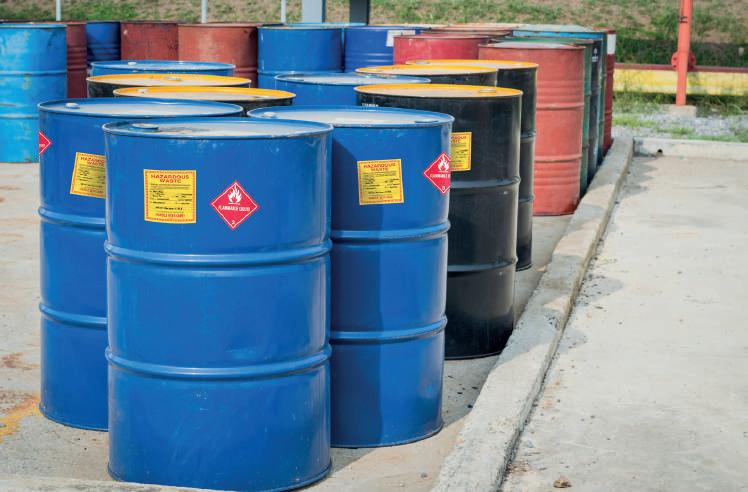
In his View from the Porch Swing this month, our columnist Gene Sanders discusses the various kinds of edible dangerous goods. For those who doubt whether foodstuffs can in fact lead to hazmat incidents, we point them towards a story from Houston, Texas, where a lawsuit is under way relating to PAM cooking spray.
Back in July 2017, a professional cook was at work, busy over the grill, when an aerosol can of cooking spray exploded, setting the kitchen on fire; the plaintiff suffered major burns and needed several skin grafts.
Conagra Brand, which makes the stuff, is contesting the charge, saying that, when used correctly, it is “100-per cent safe and effective”.
As for us, we can’t figure out why a professional cook would be using oil from a spray can. What’s wrong with lard, for heaven’s sake?
This story comes to us from Greeley, Colorado, where police were called in early June to the Missile Site Park just west of town. There were reports of a “suspicious person” at the park who, when the boys in blue arrived, was less than cooperative. Their response was to fire what were described as “less-lethal rounds” at him, but they were ineffective. [Can ‘lethal’ be qualified? Surely it is either lethal or not – ed.]
At this point, the suspicious character (we have to call him that as we have no other name) pulled out a road flare and held it in a suspicious manner close to a tank of methanol. This was enough to get the police to shoot something more lethal at him, which
appeared to do the trick as he was then taken into custody and into hospital.
This story raises a number of questions. What was he doing in the park, which is the site of a Cold War-era nuclear missile base that is now open to the public; why did he have a road flare about his person; why is there a tank of methanol at the park; and how is he now, after being used for target practice? Sadly, the Denver Channel does not enlighten us.
And here’s one from Rockdale county, Georgia, where a woman was filling up her car at the Conyers BP station early in July. CCTV camera footage showed a man being dropped off, creeping up behind her and getting into her car with the intention of stealing it.
The woman only realised what was happening when she heard the car being started; at this point she did the only thing she could think of doing, and pulled out the nozzle and sprayed gasoline all over him in the front seat. It had the desired effect, as one witness reported:
“My son told me, he said, ‘Dad, I think he’s trying to steal the car,’ and I was looking, and I heard the car revving up and the next thing I know, he jumped out of the car and he started running.”
Soaked in gasoline, the would-be thief made it back to the car that had dropped him off and they fled. Police say this sort of thing is not uncommon and have posted the CCTV footage online in the hope that someone recognises the “slider crew” gang.
